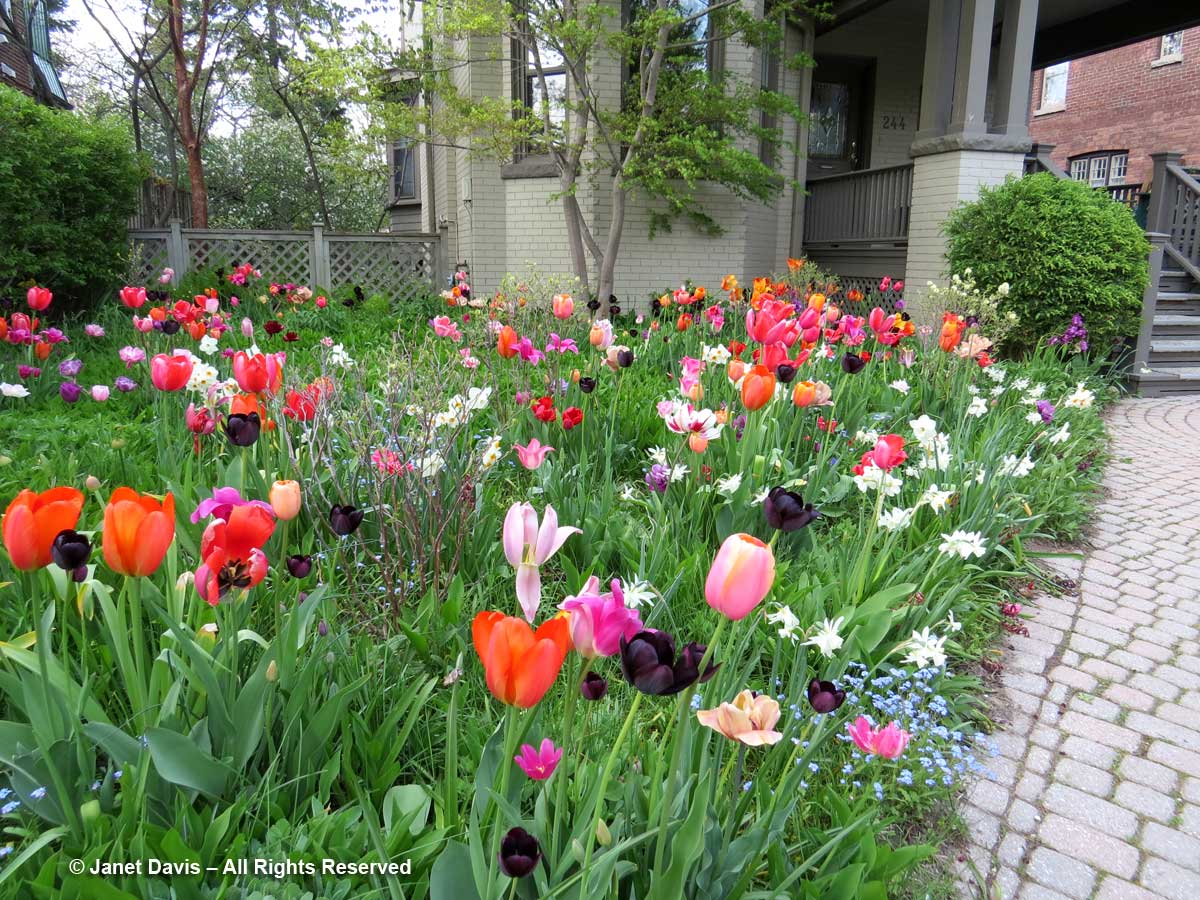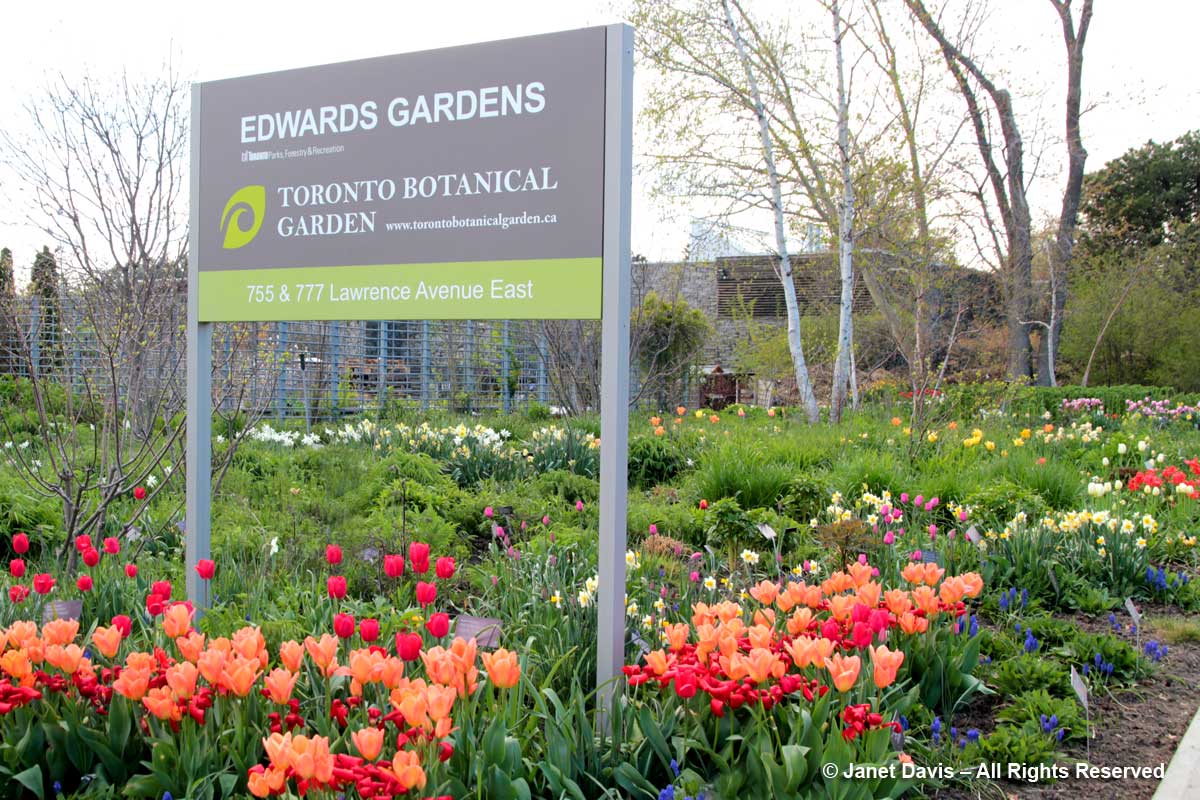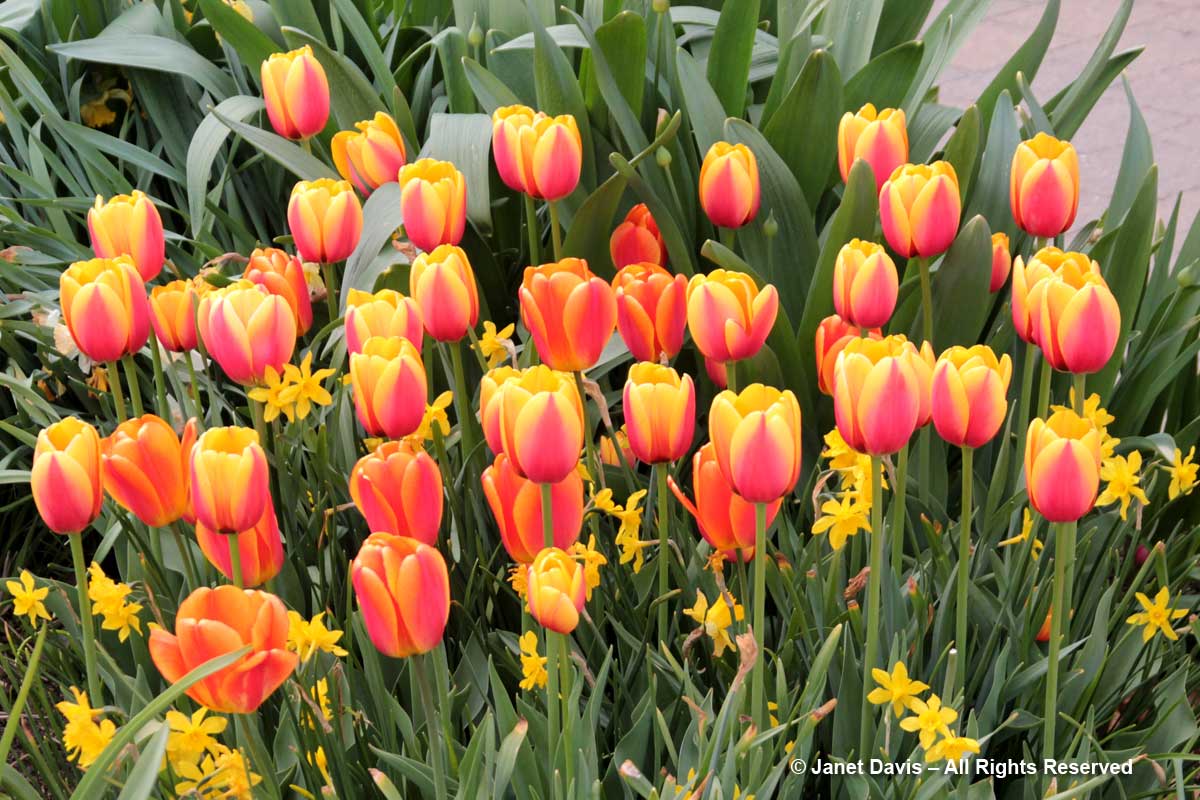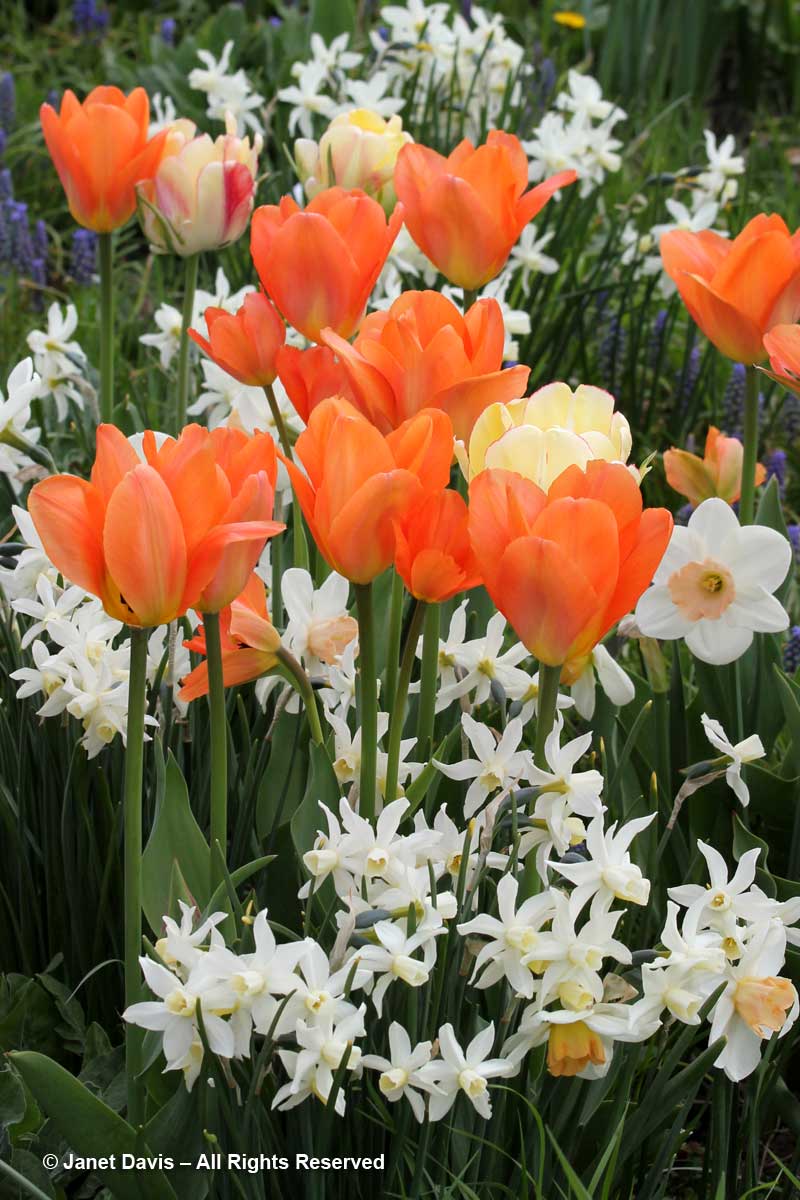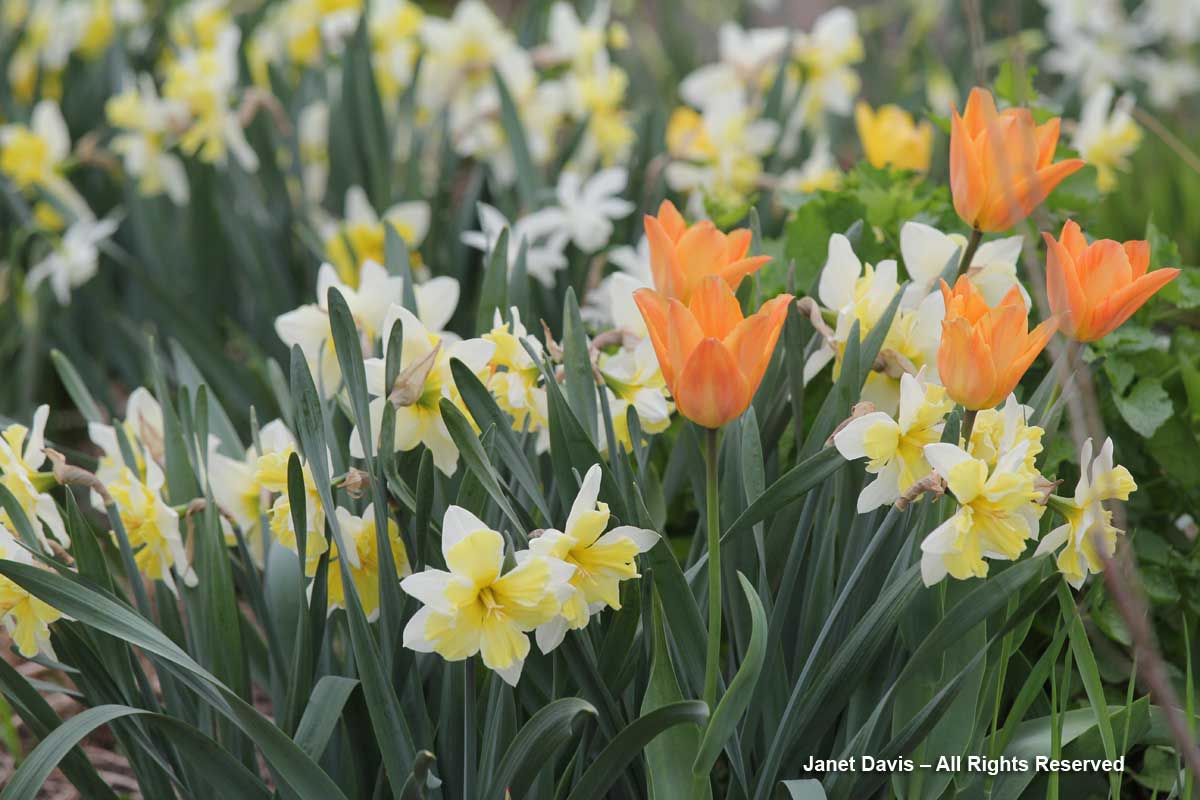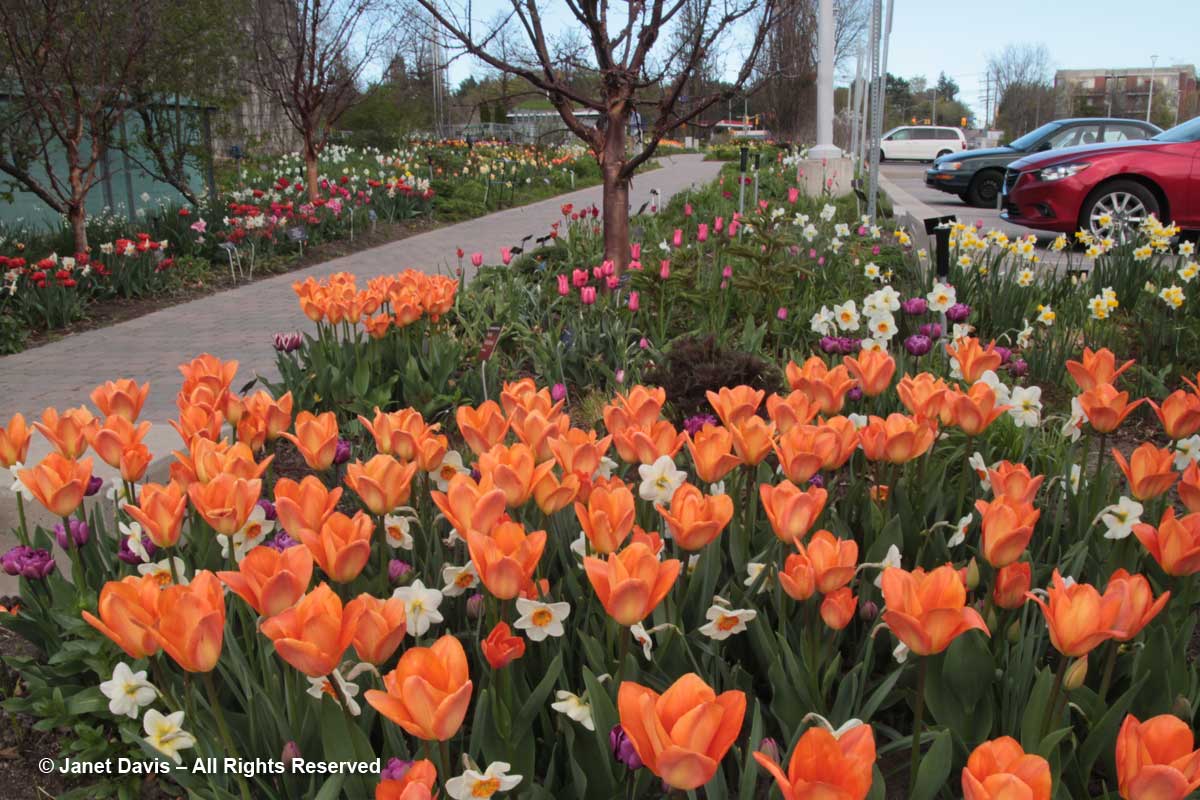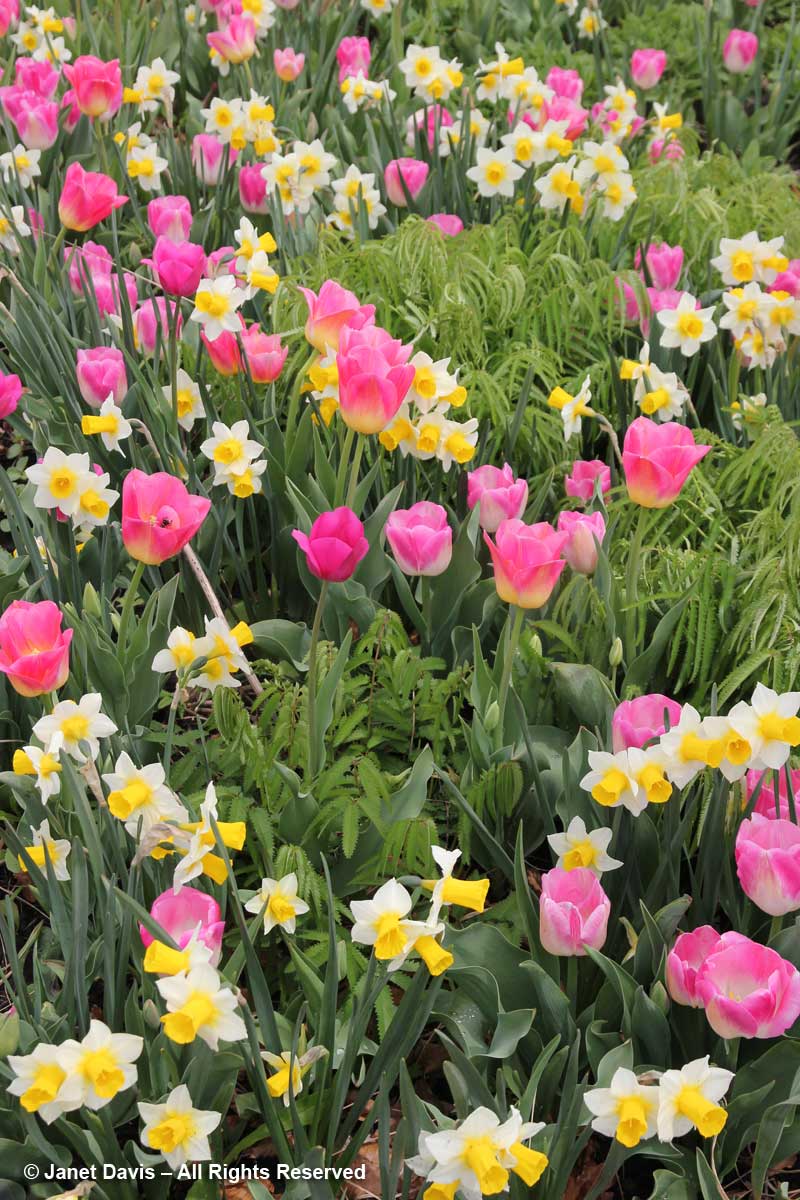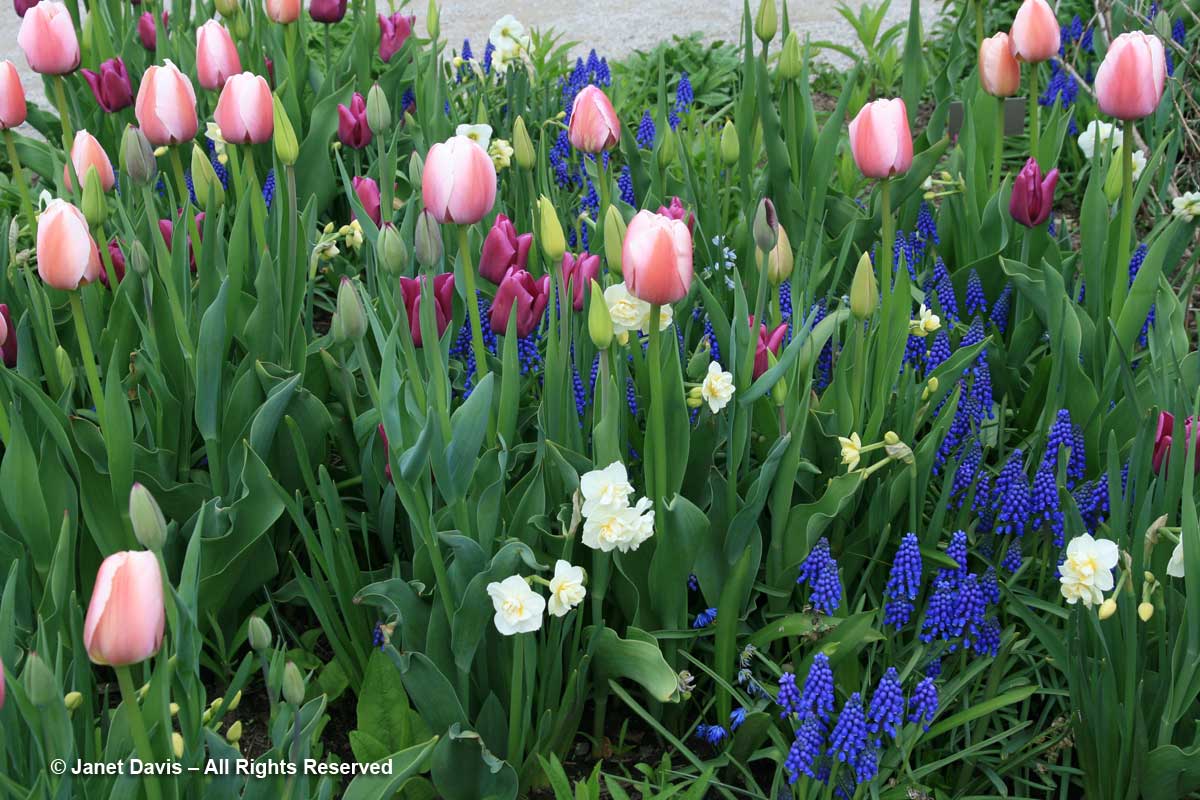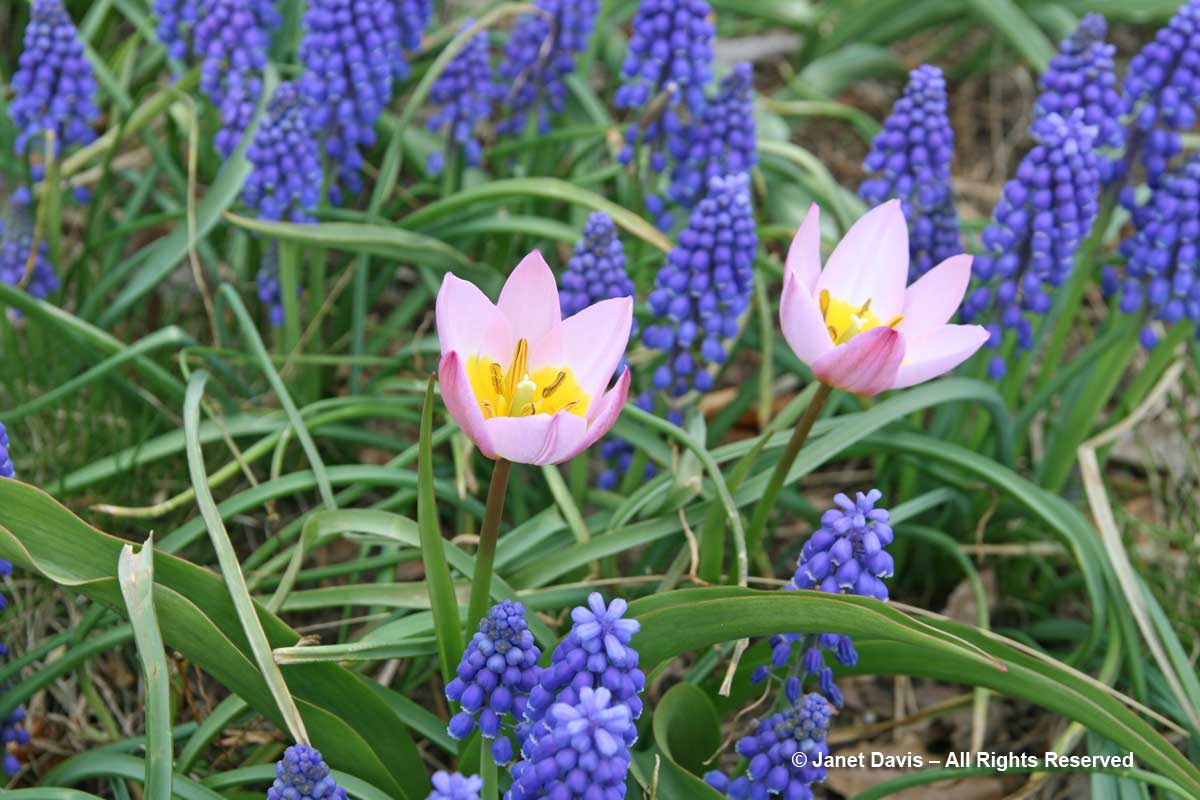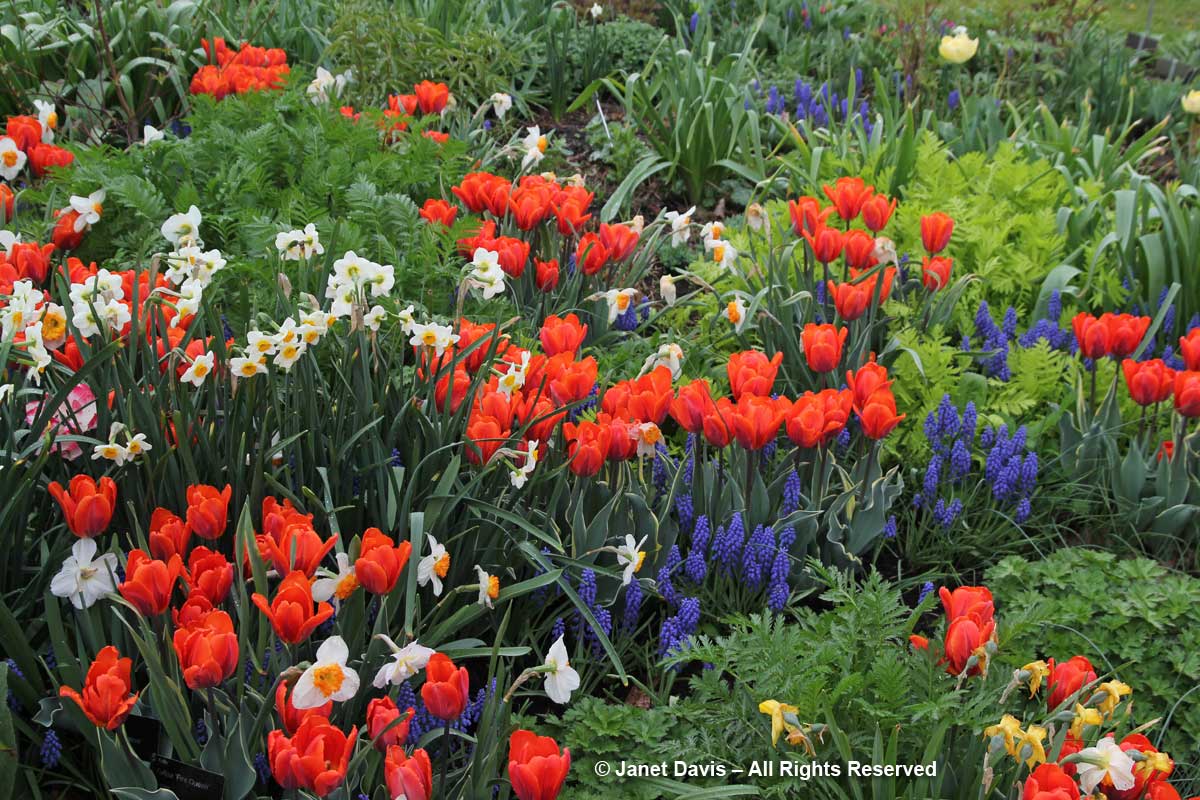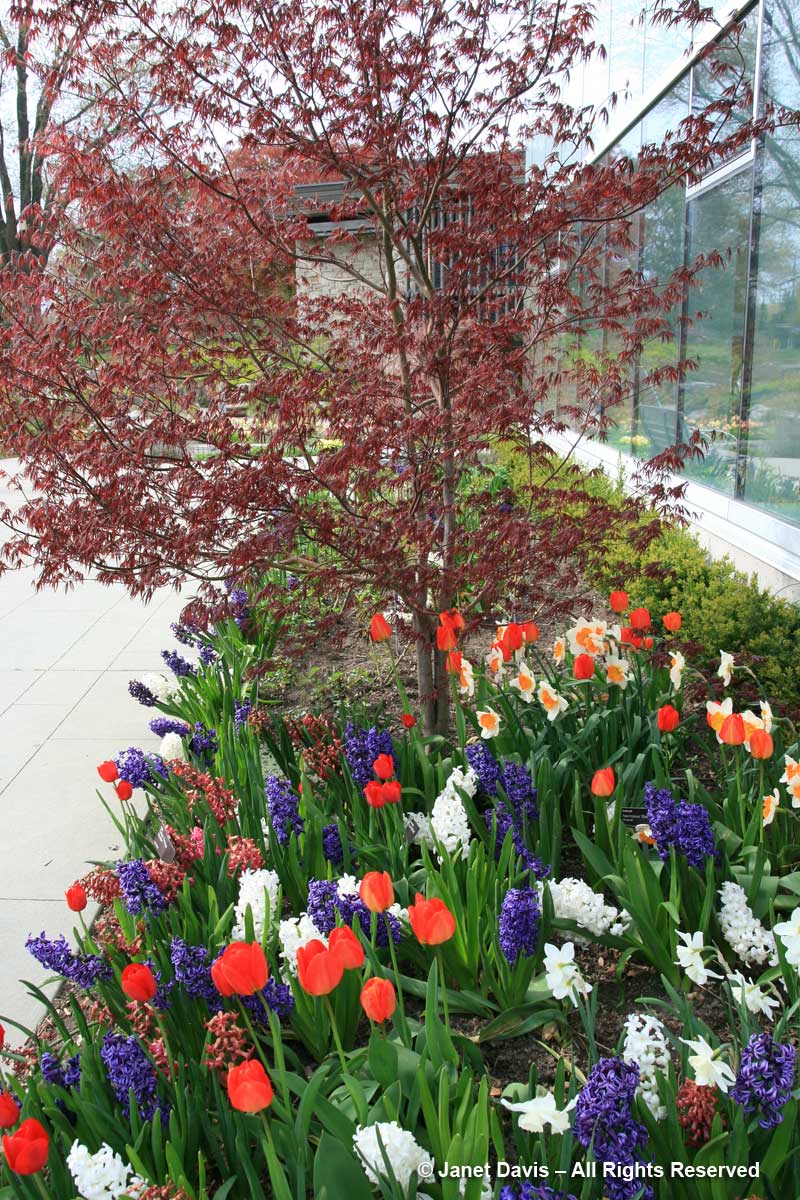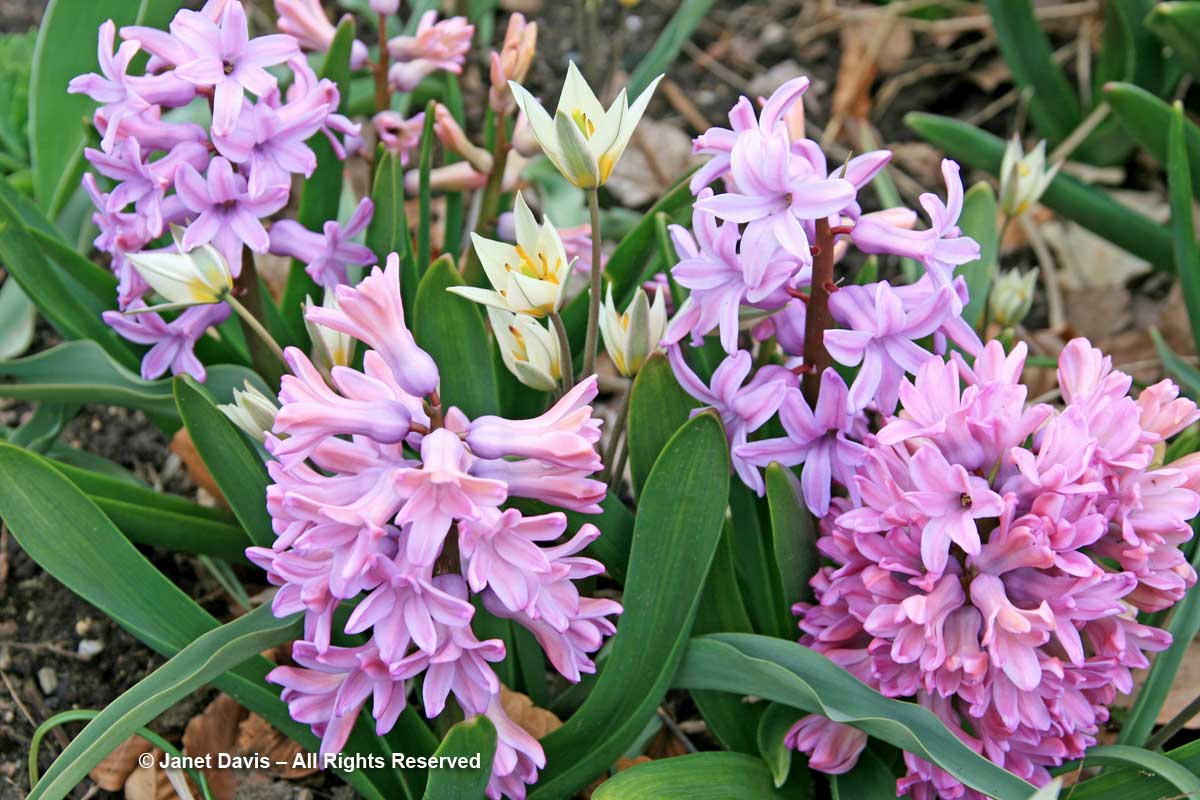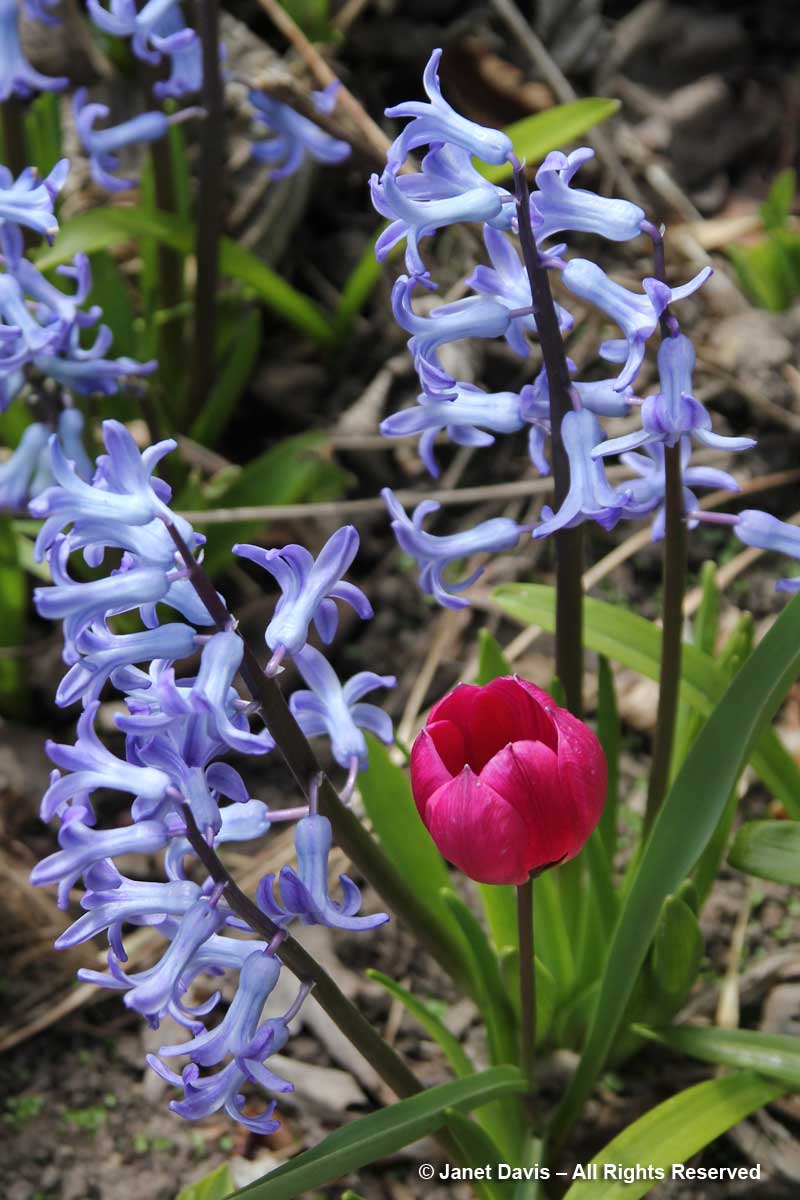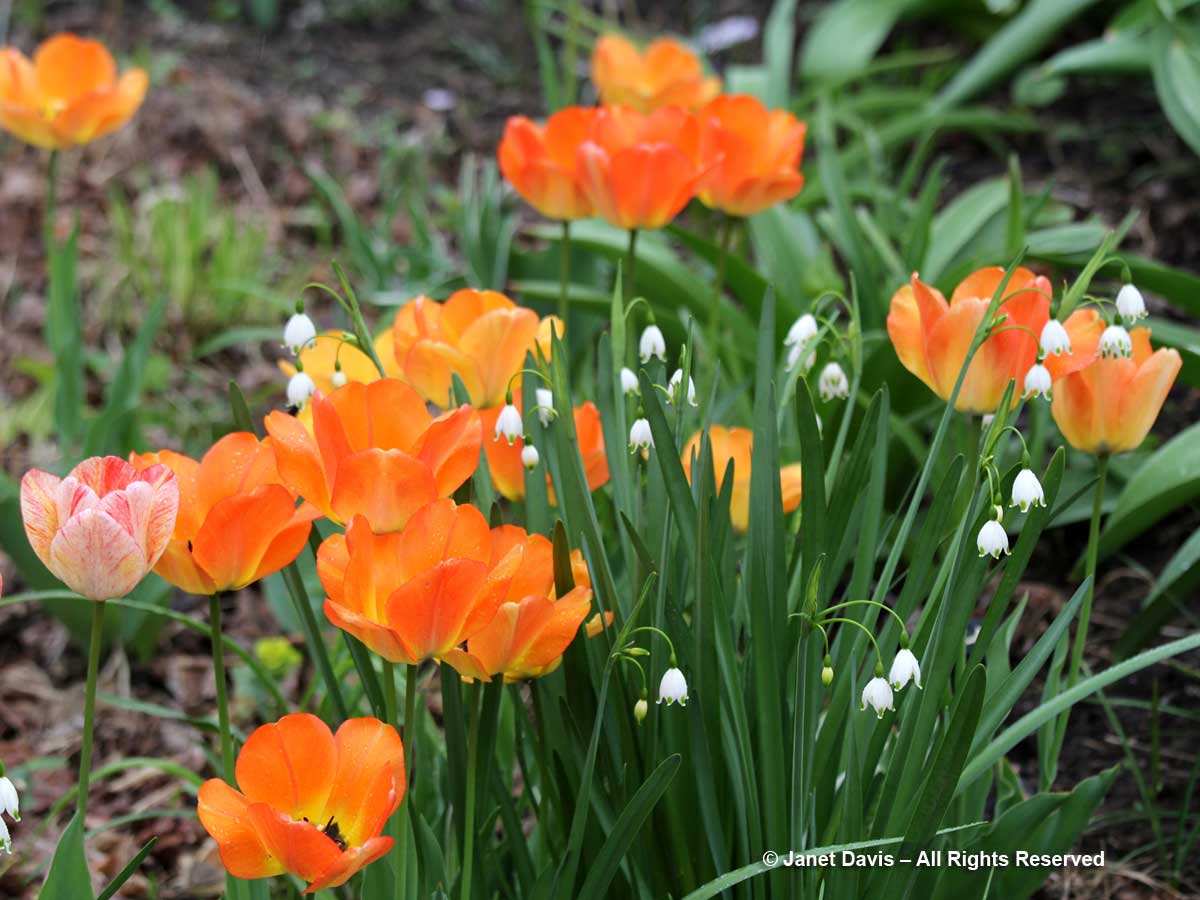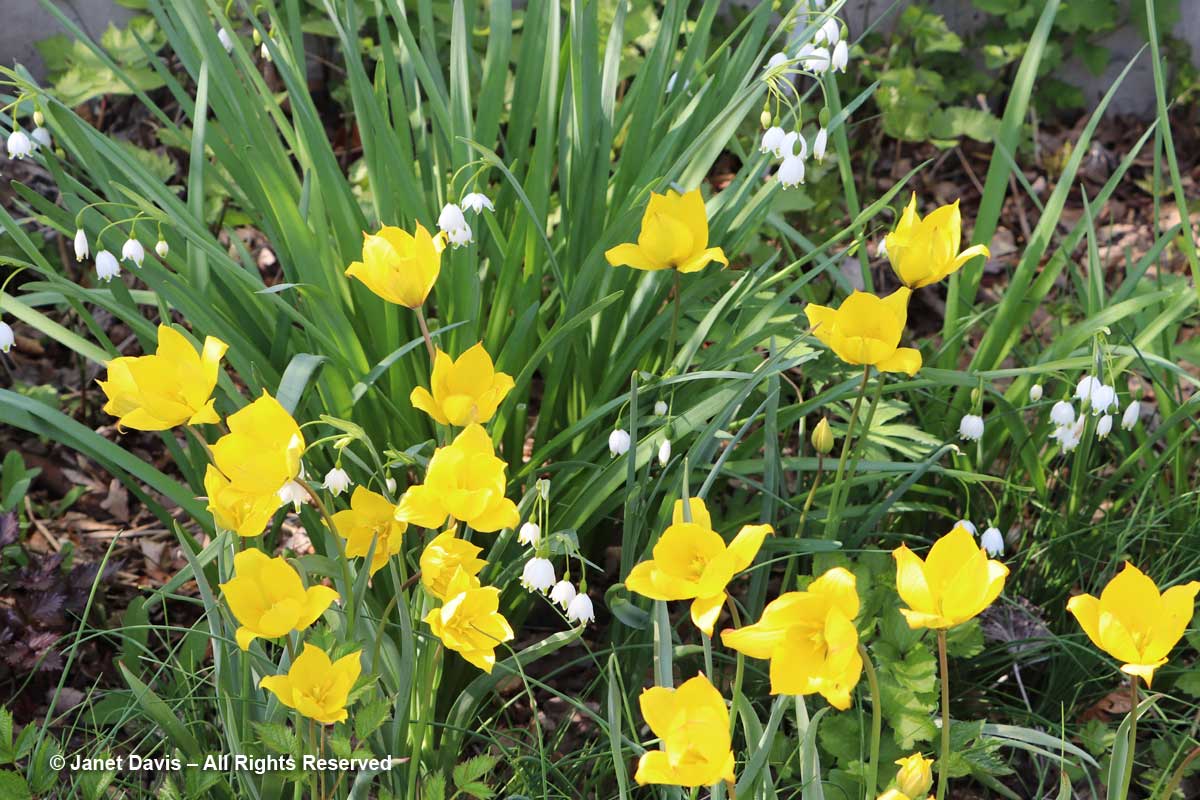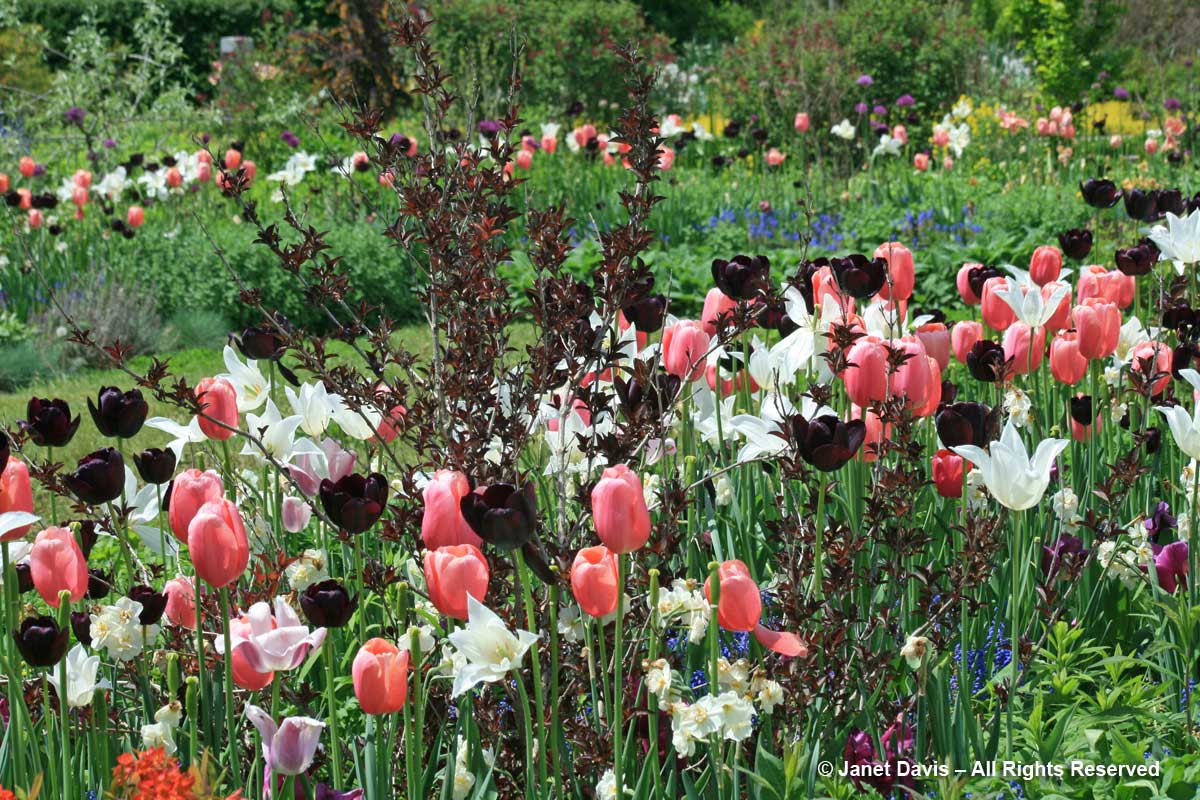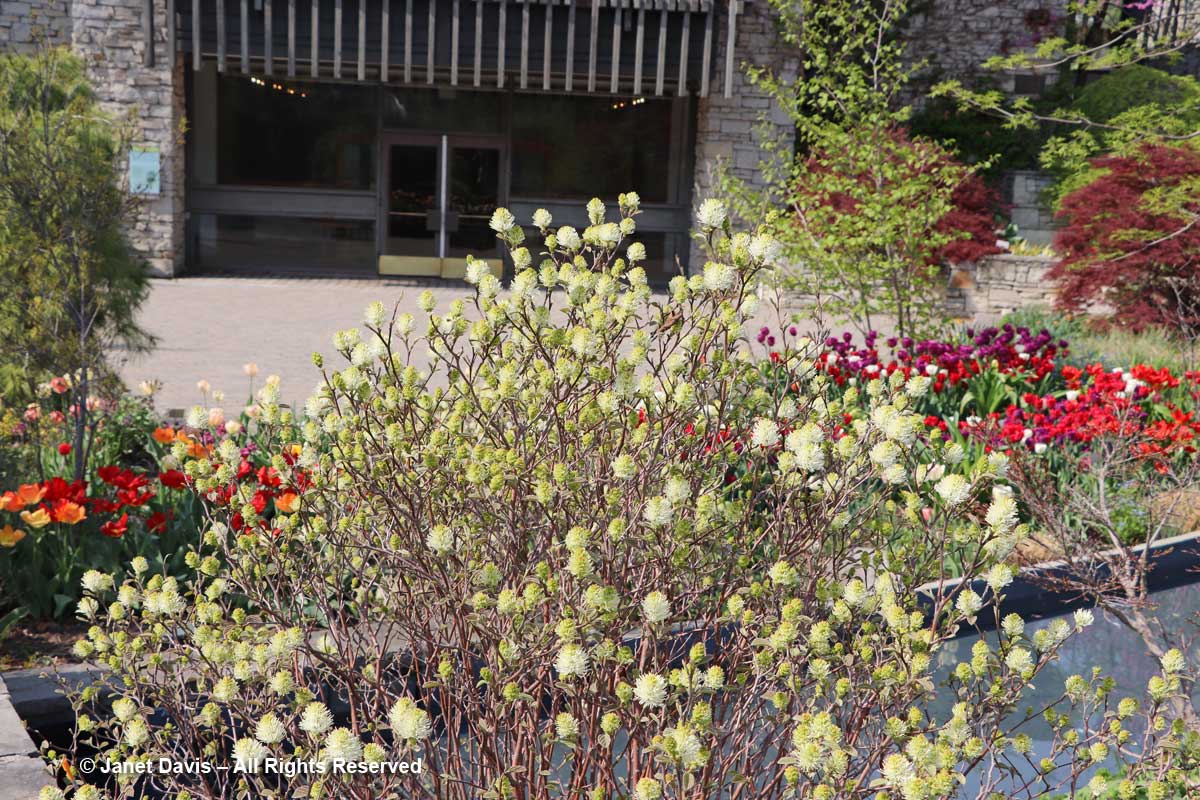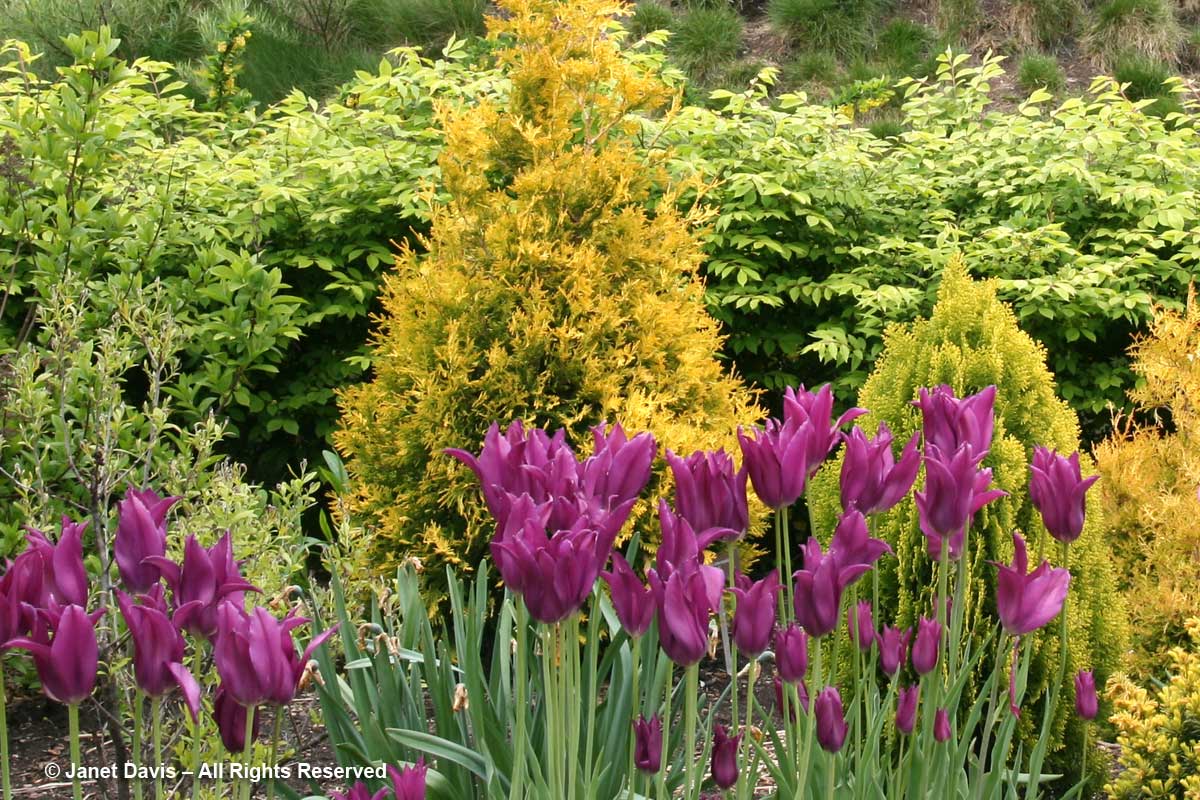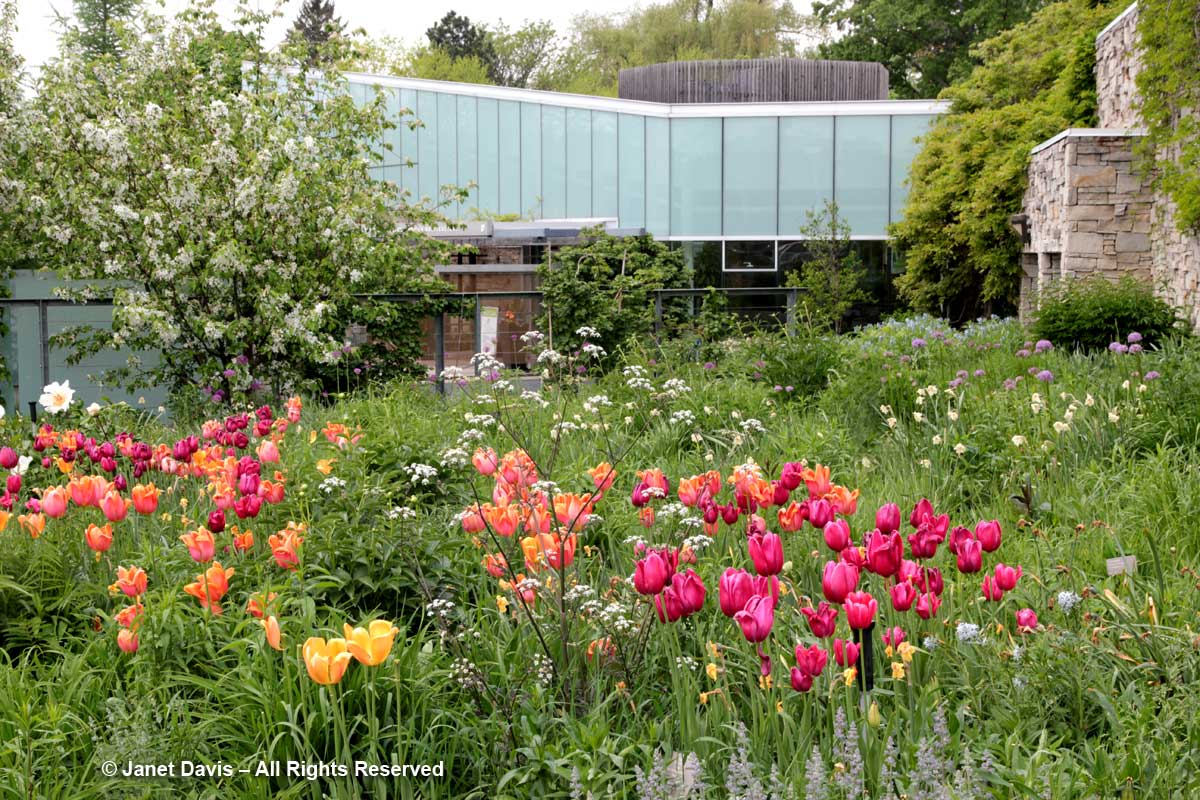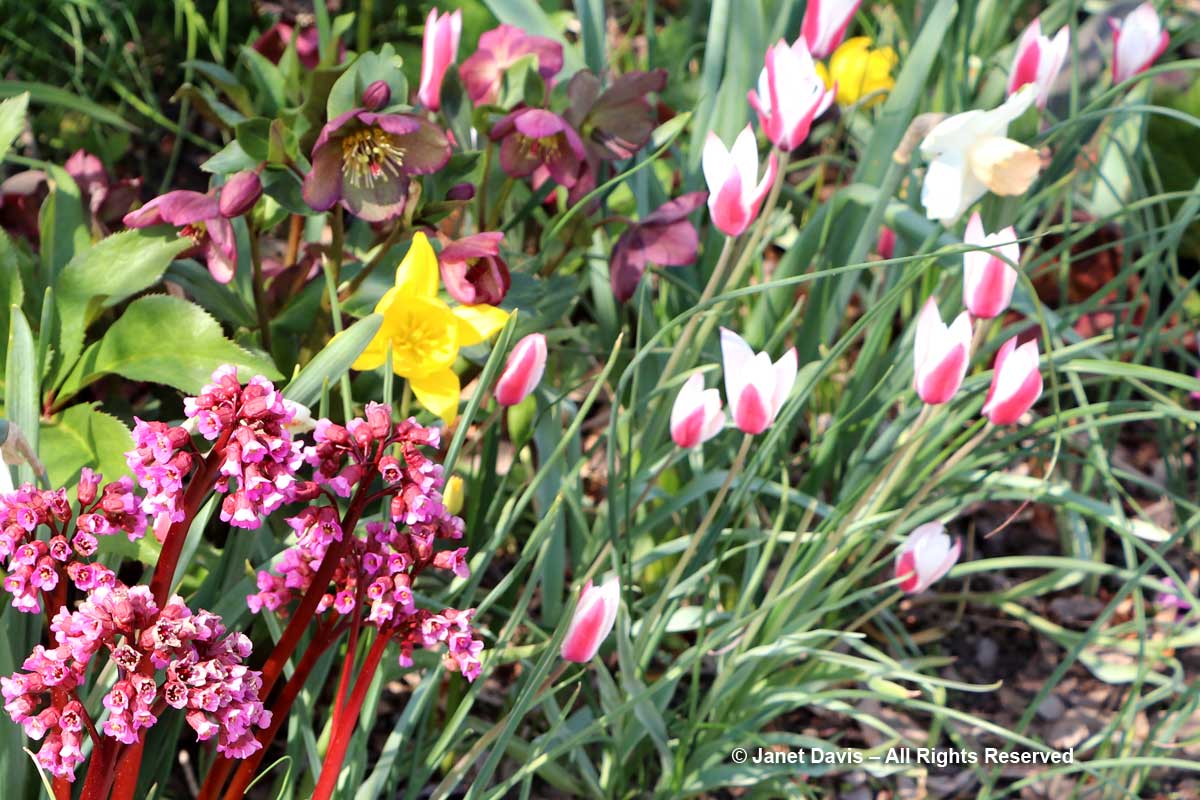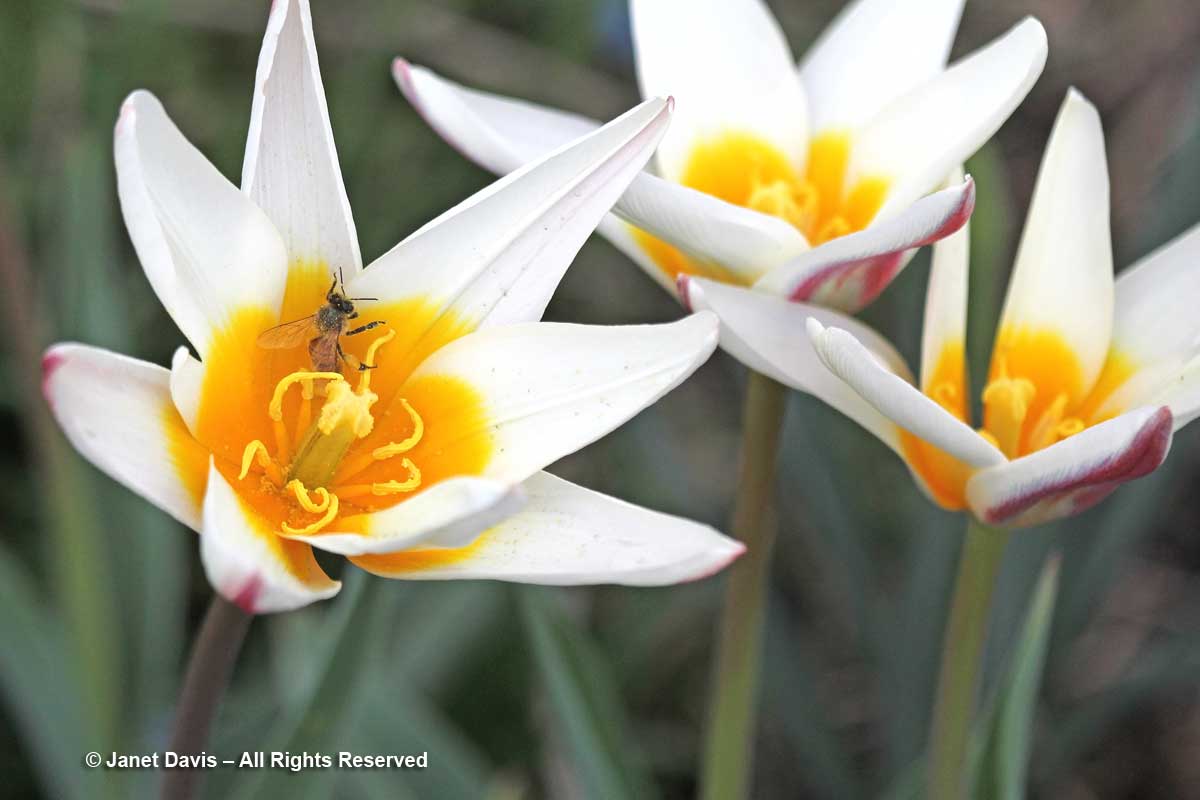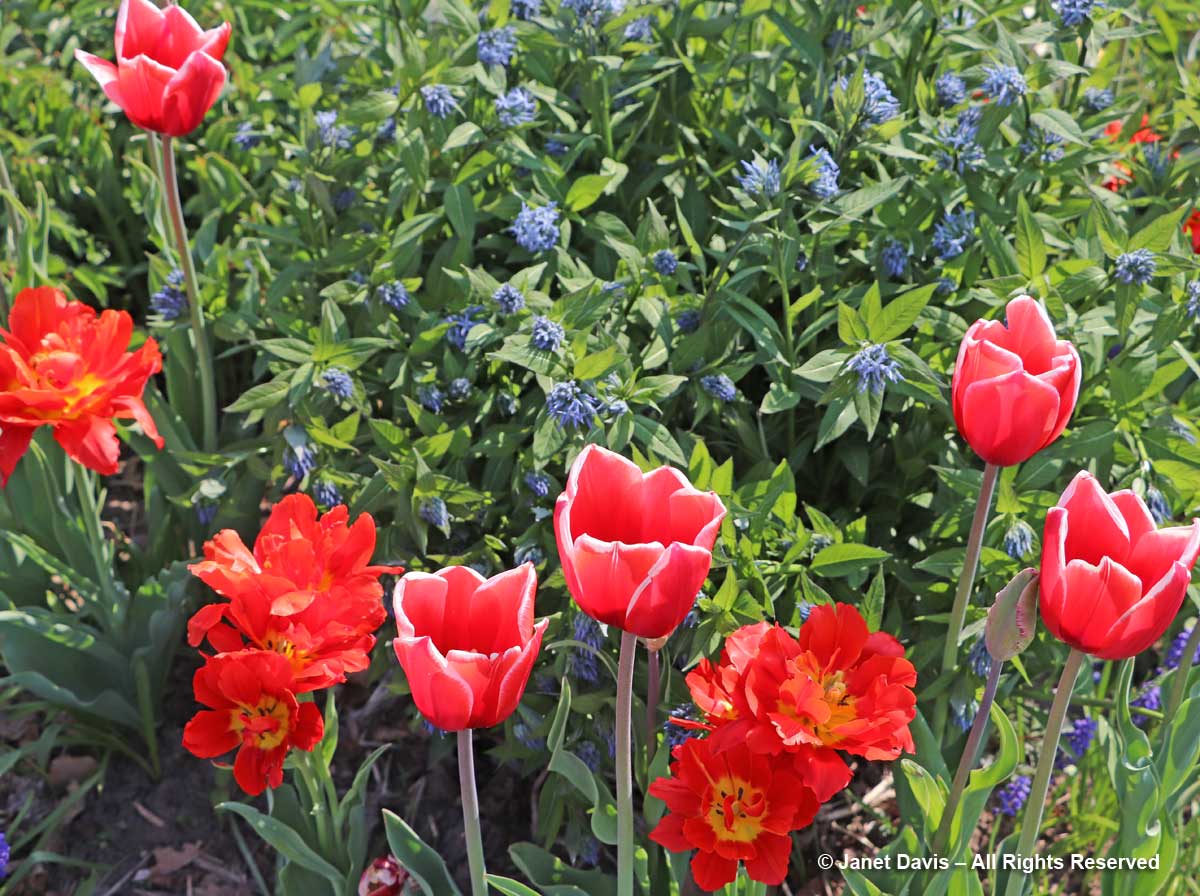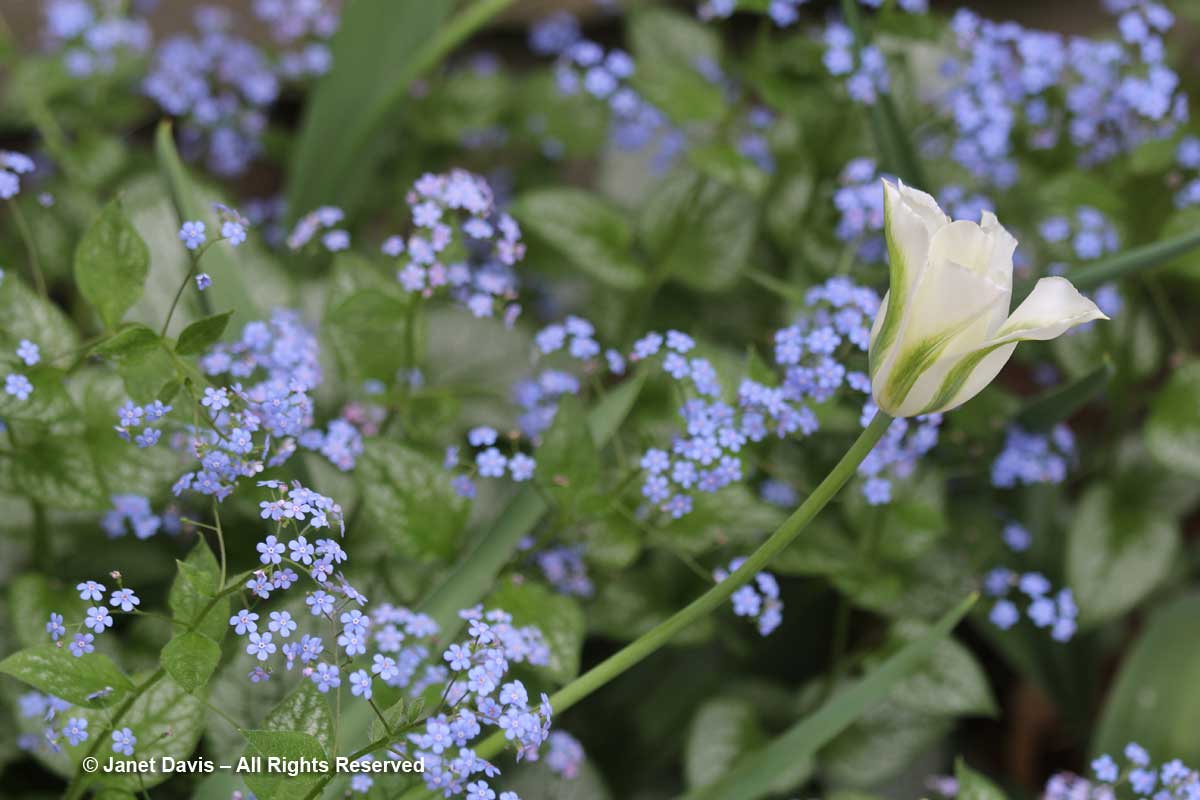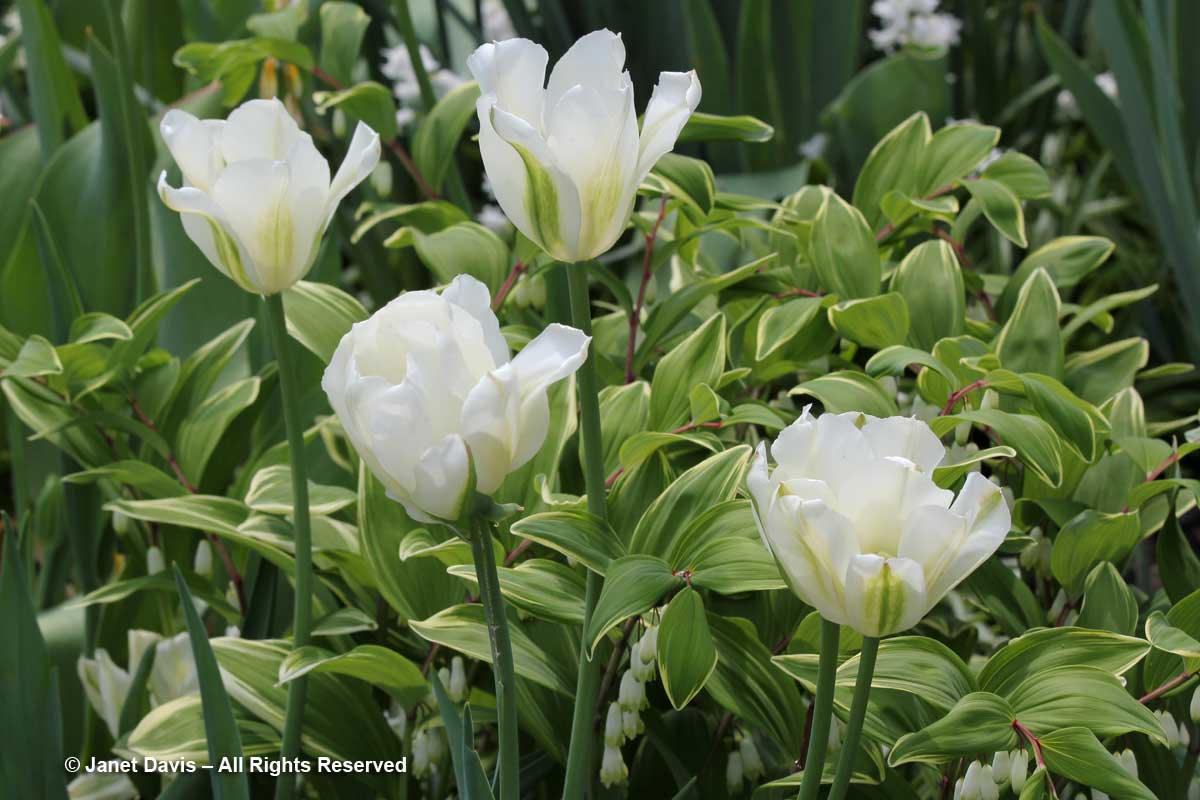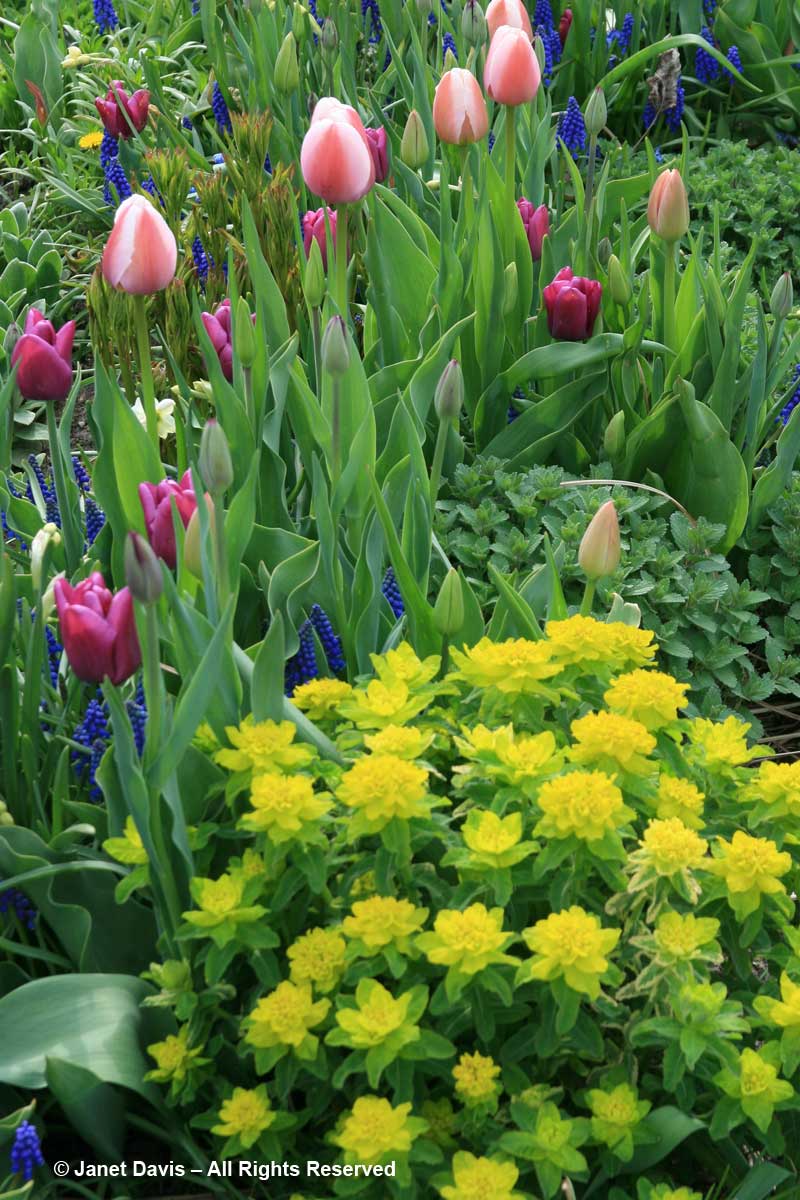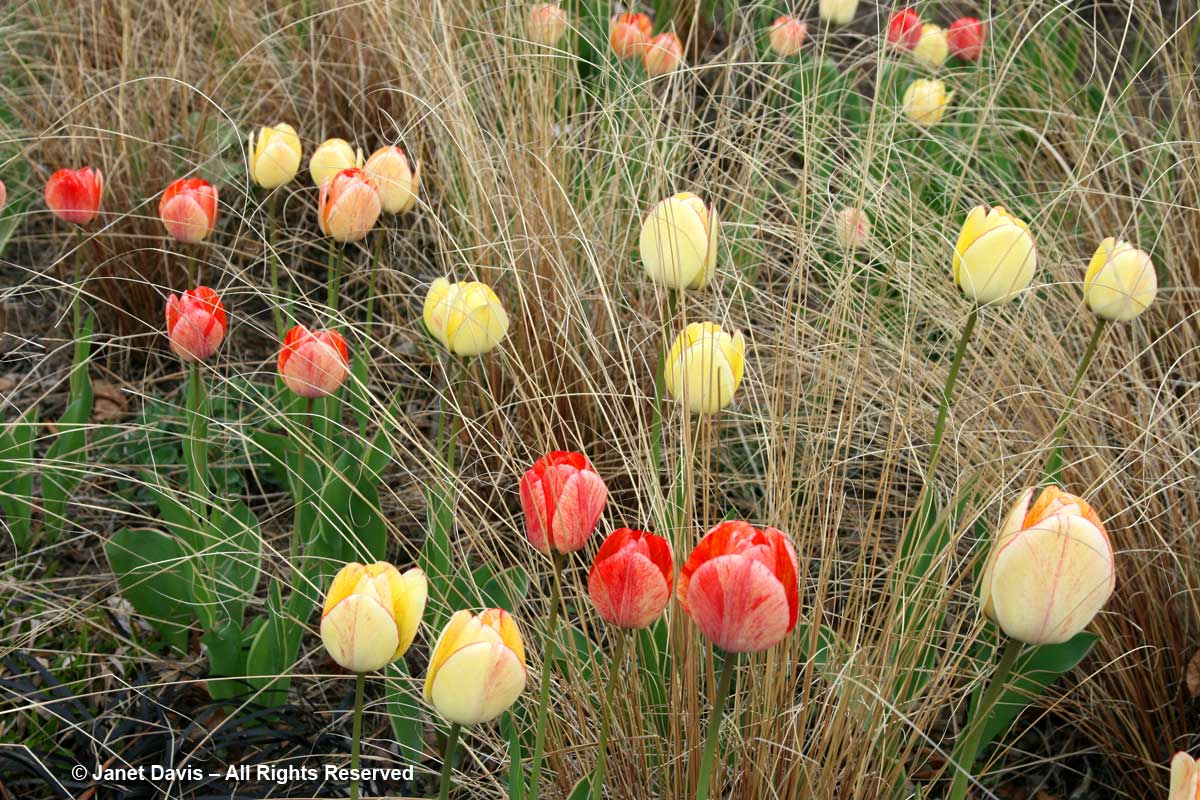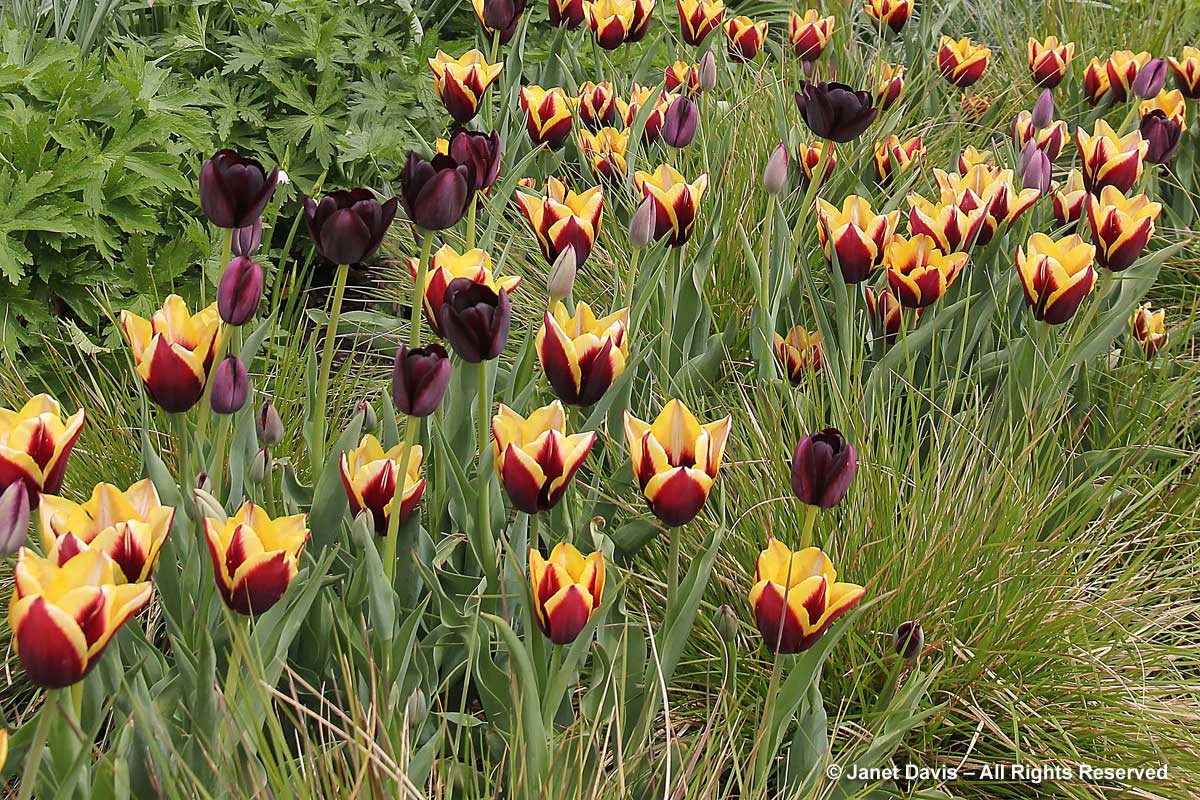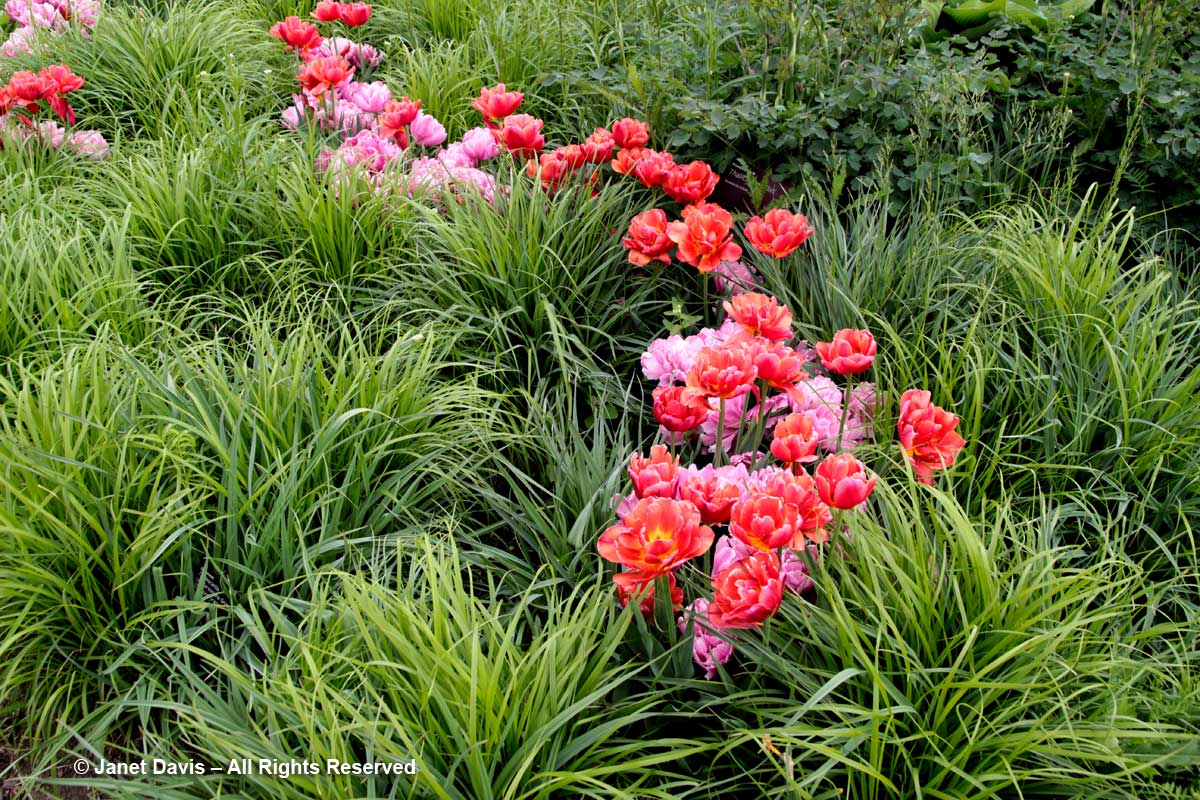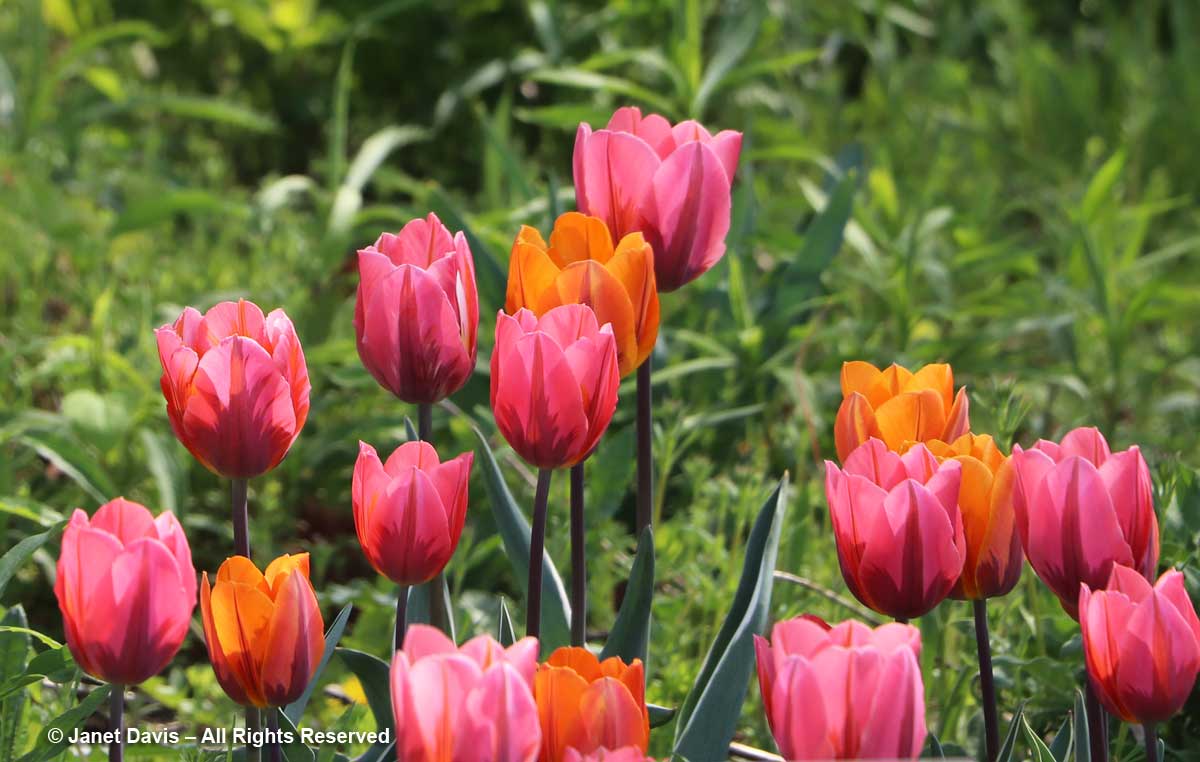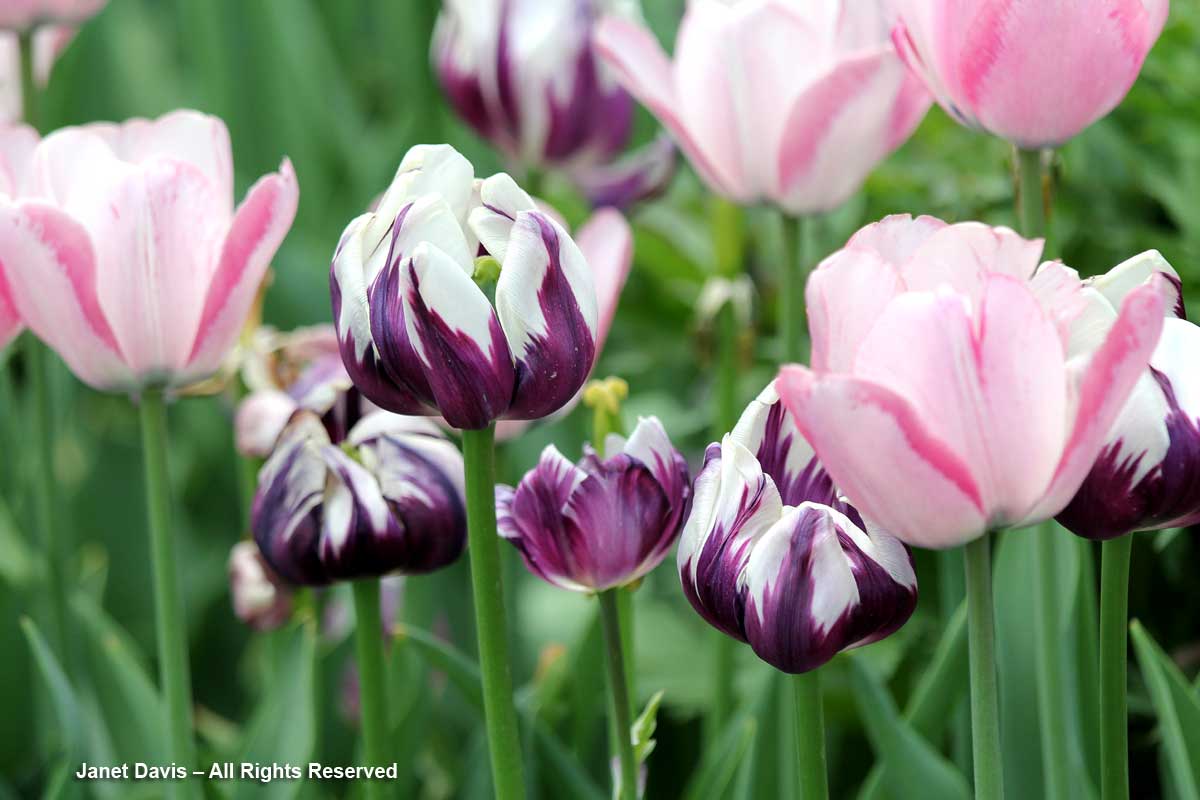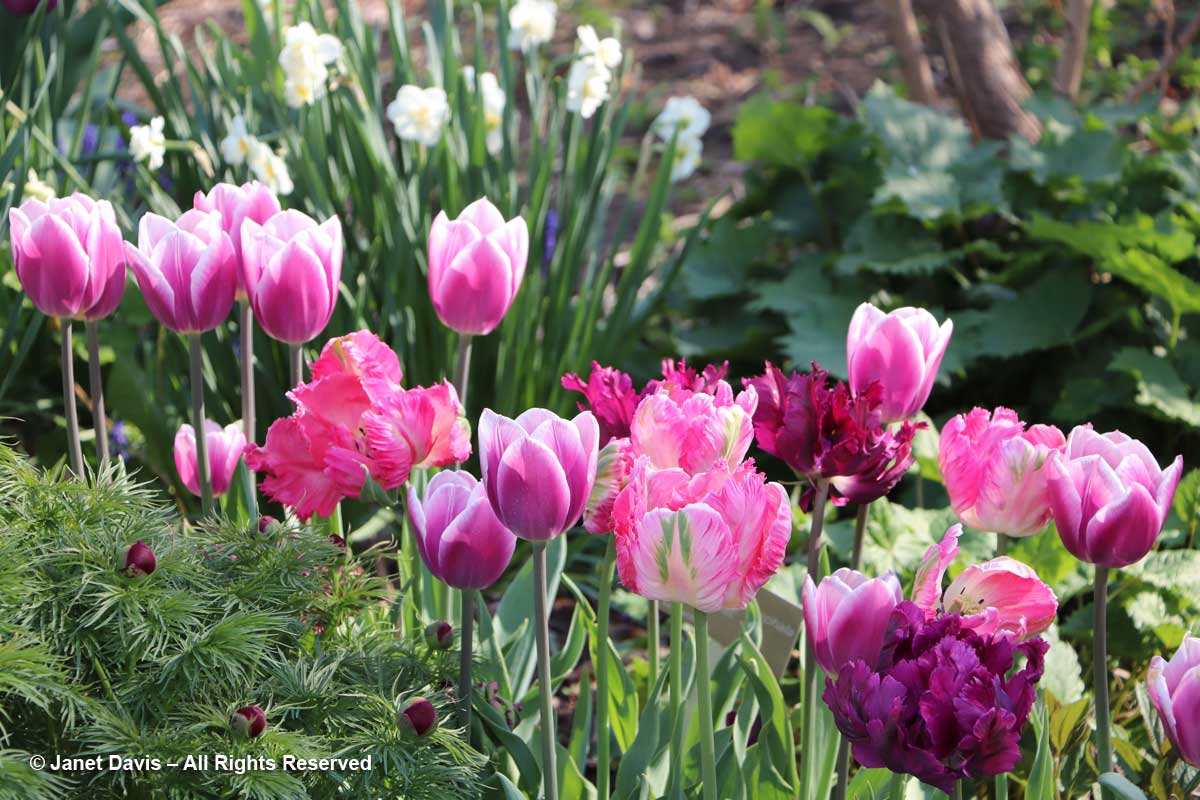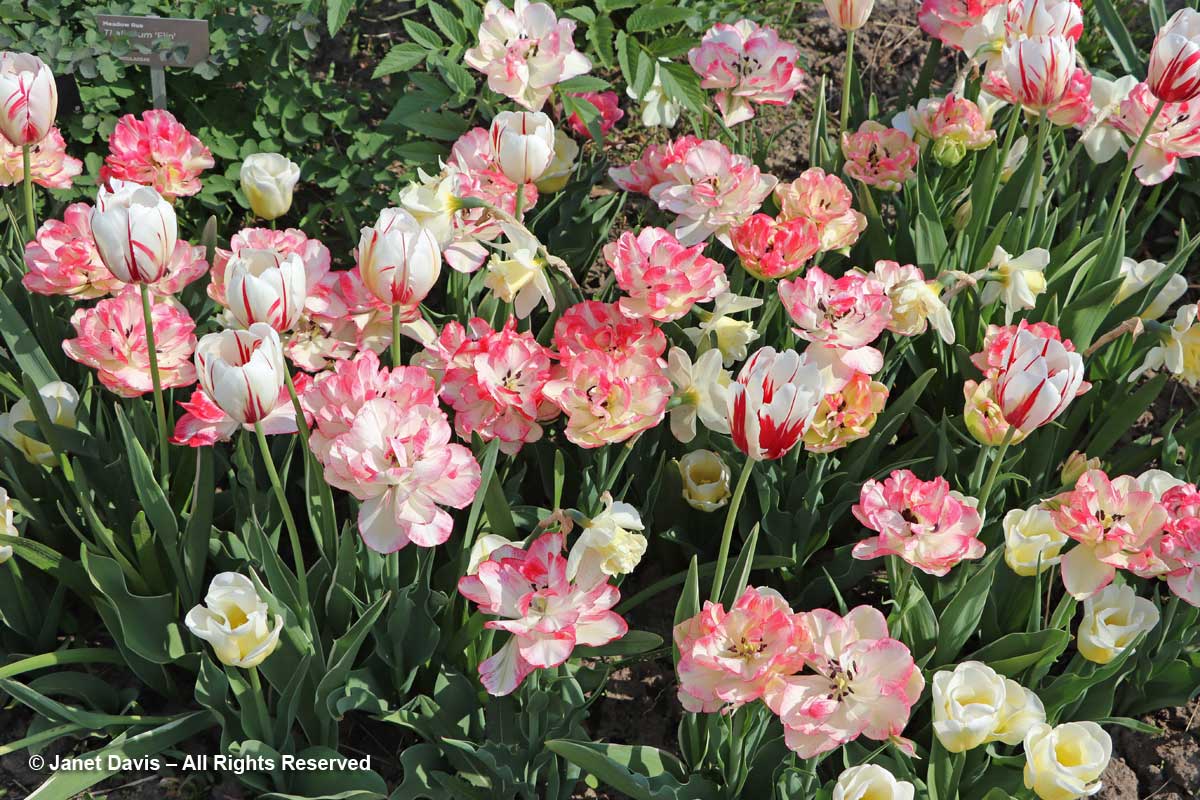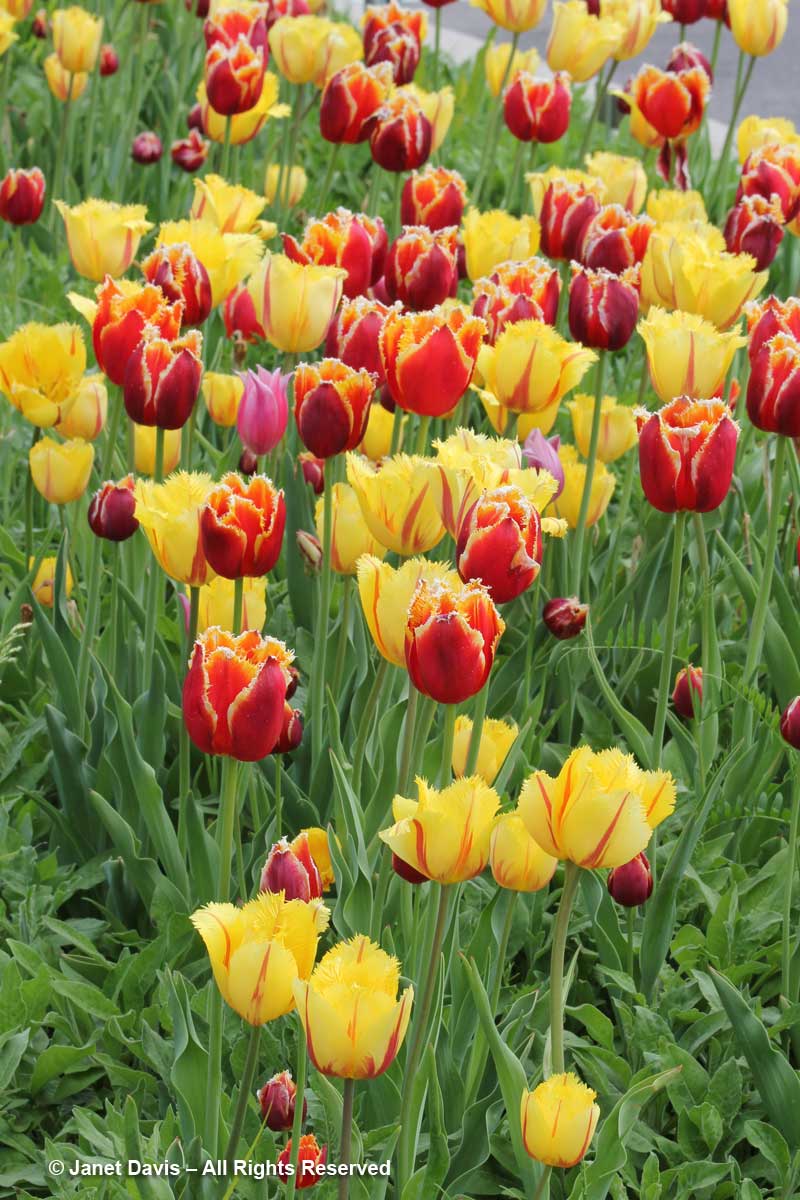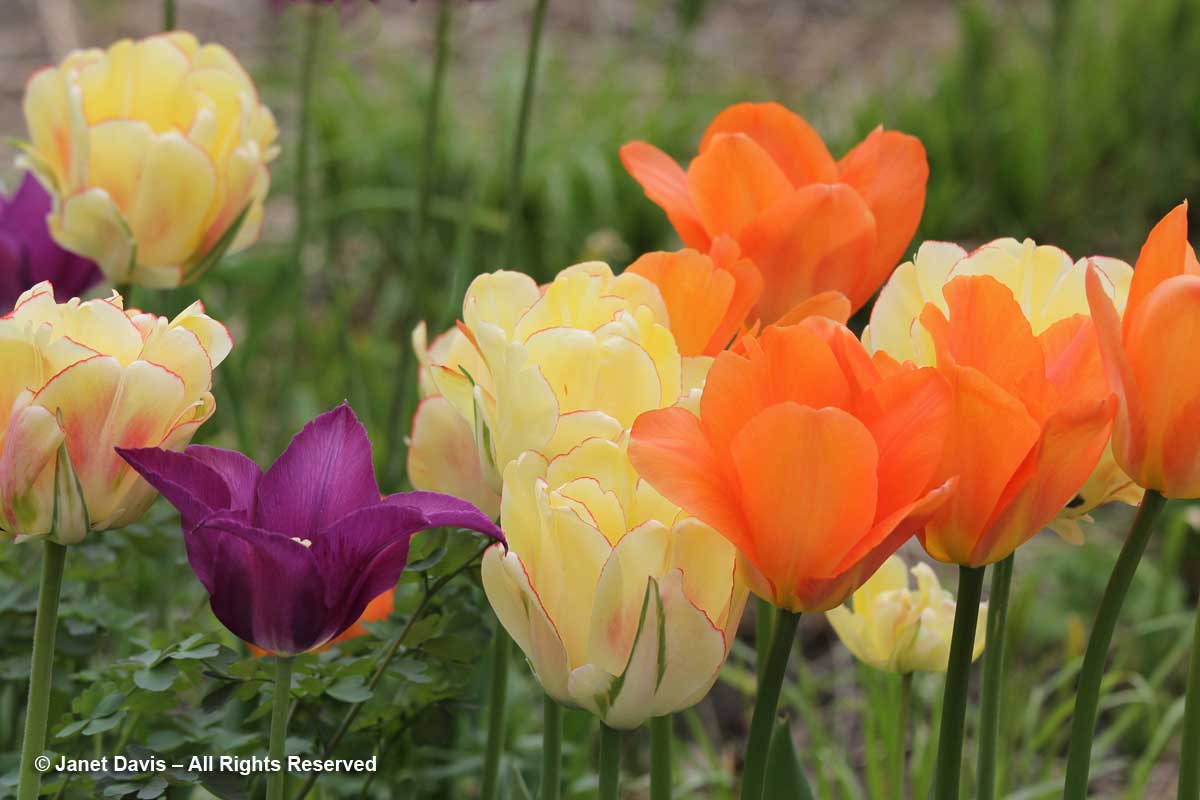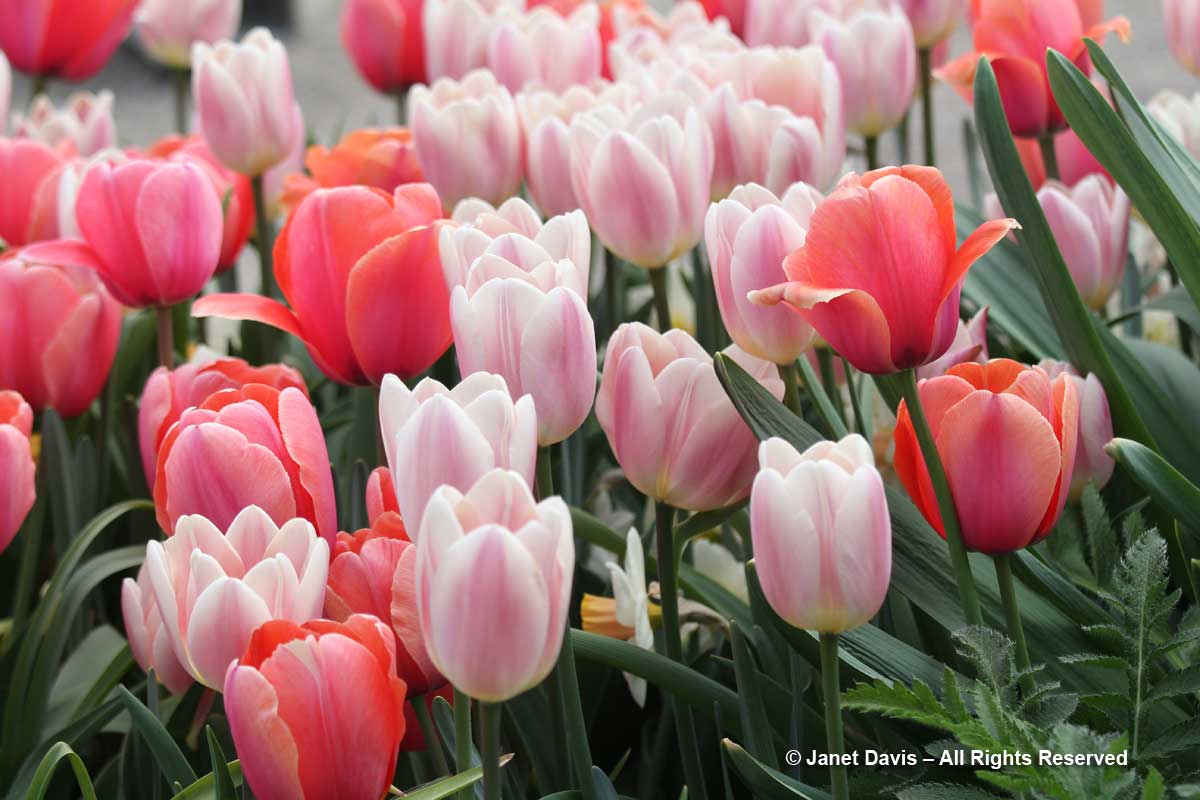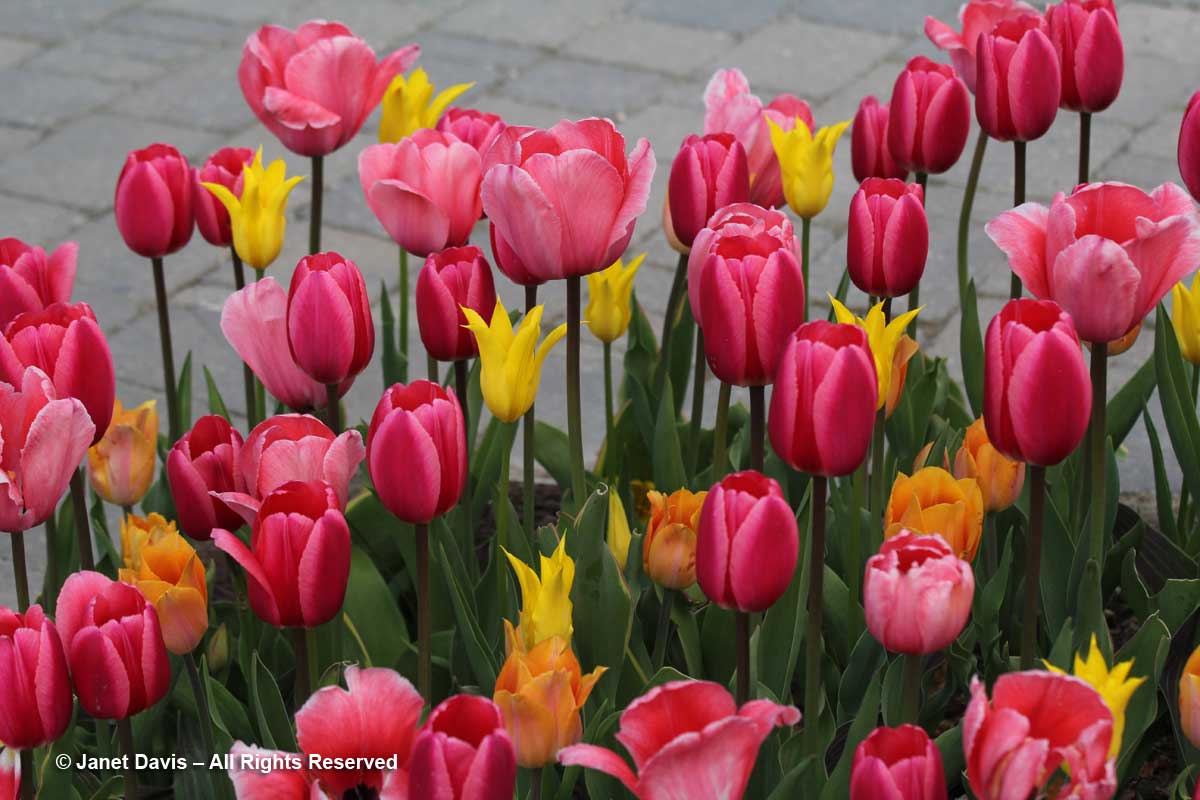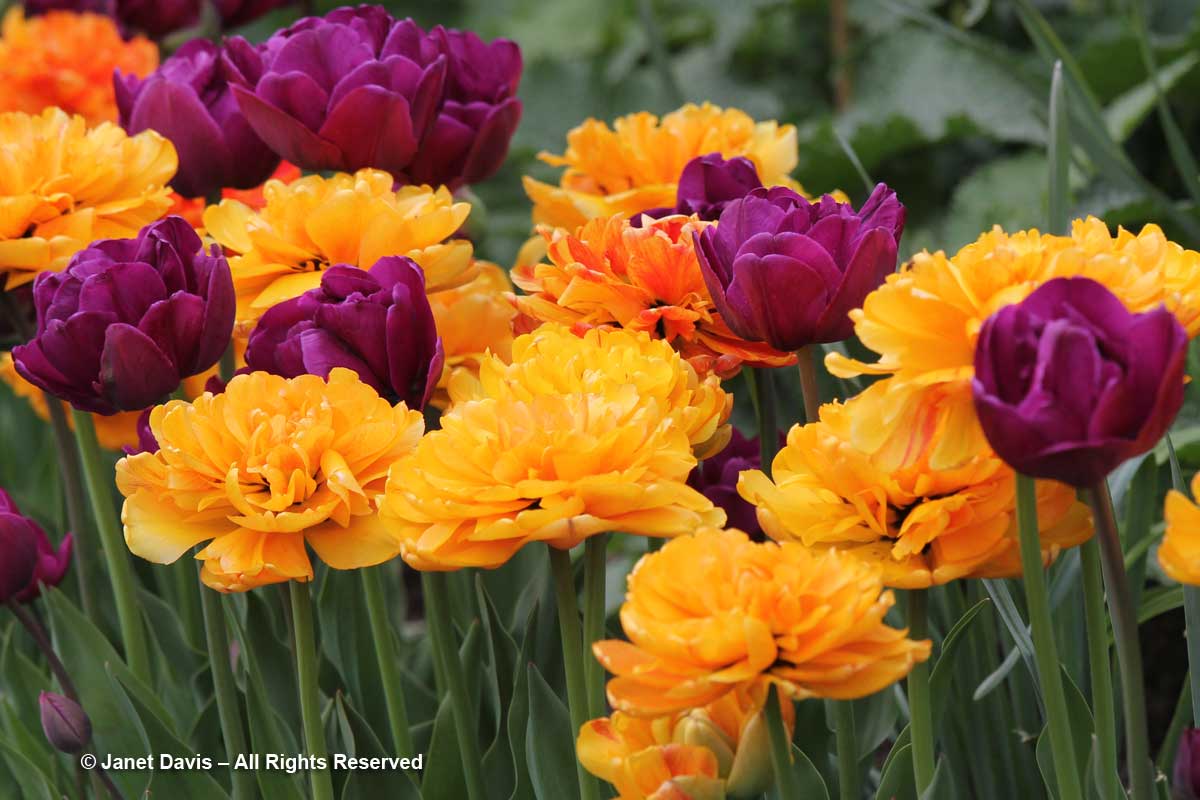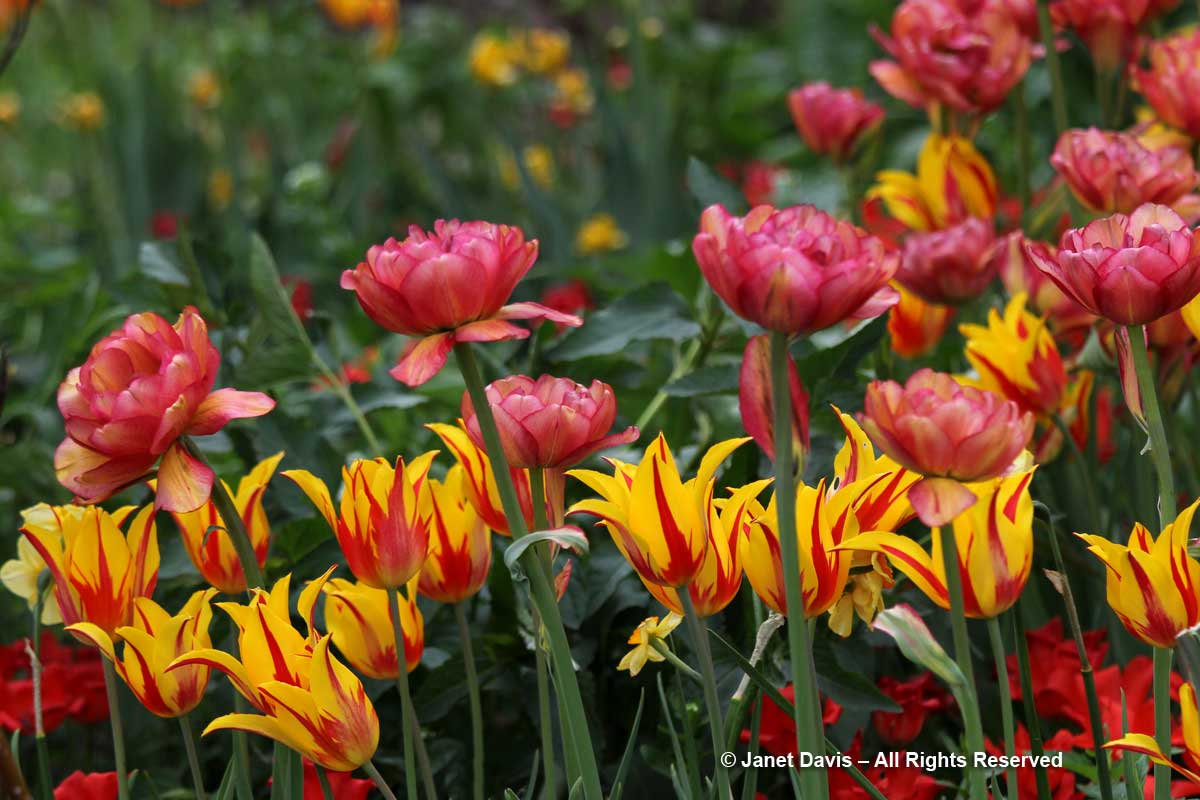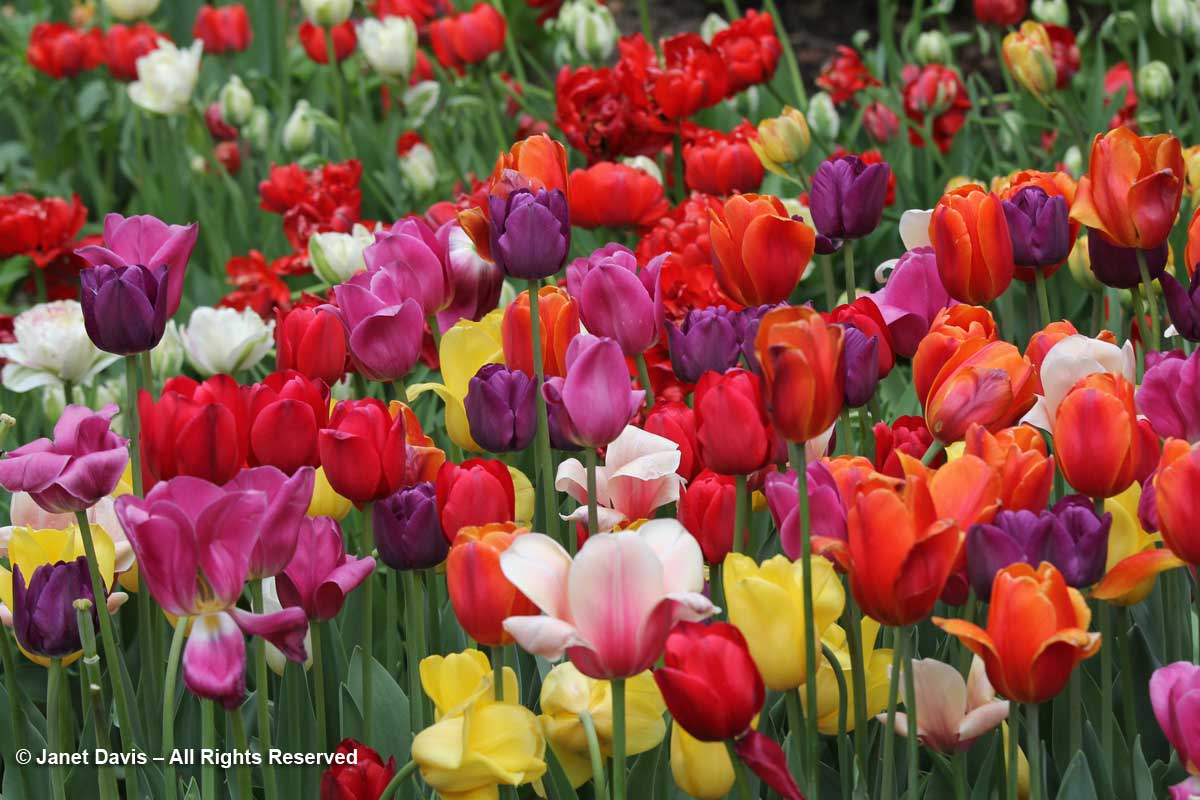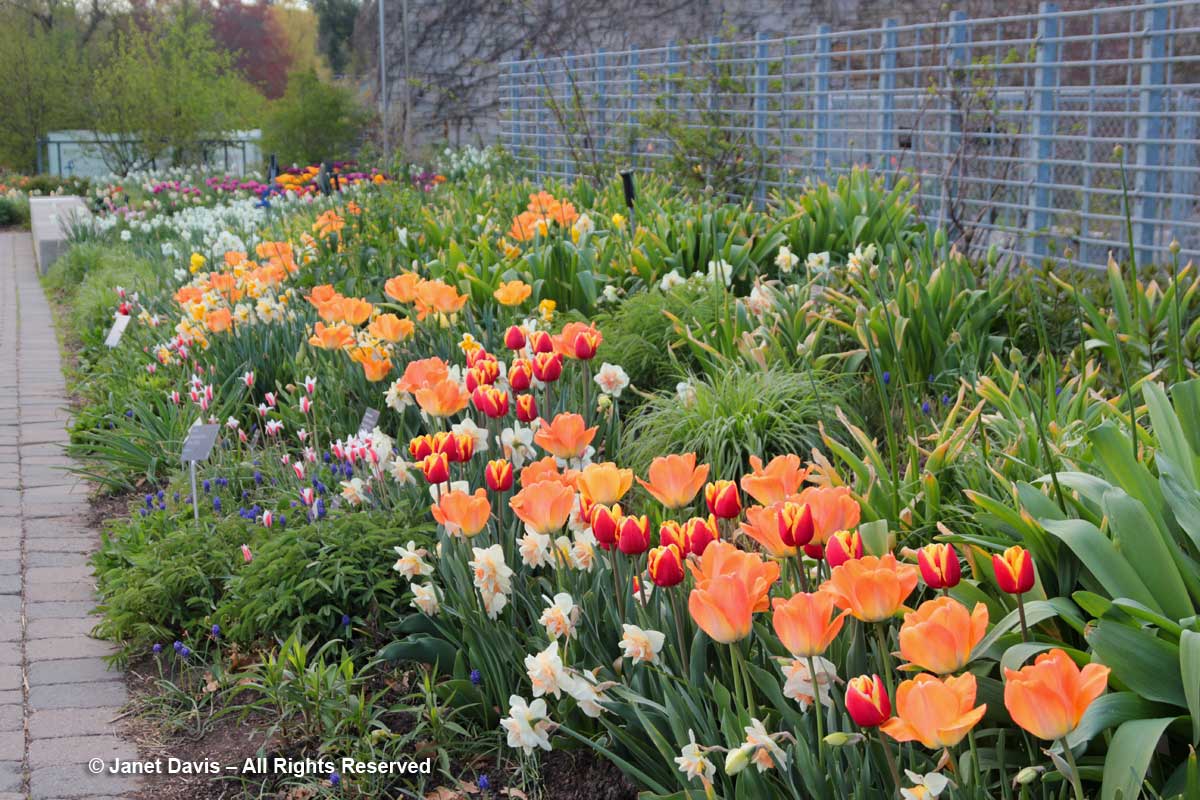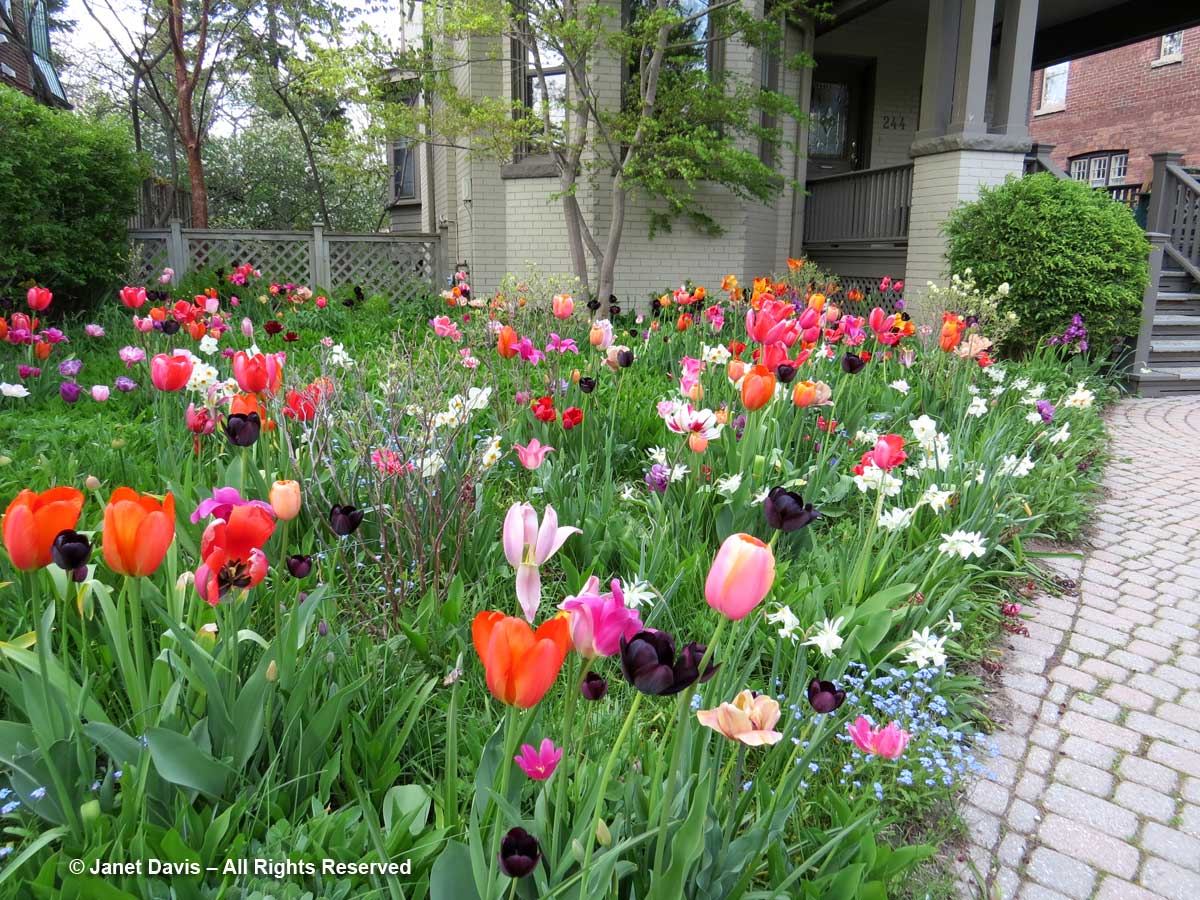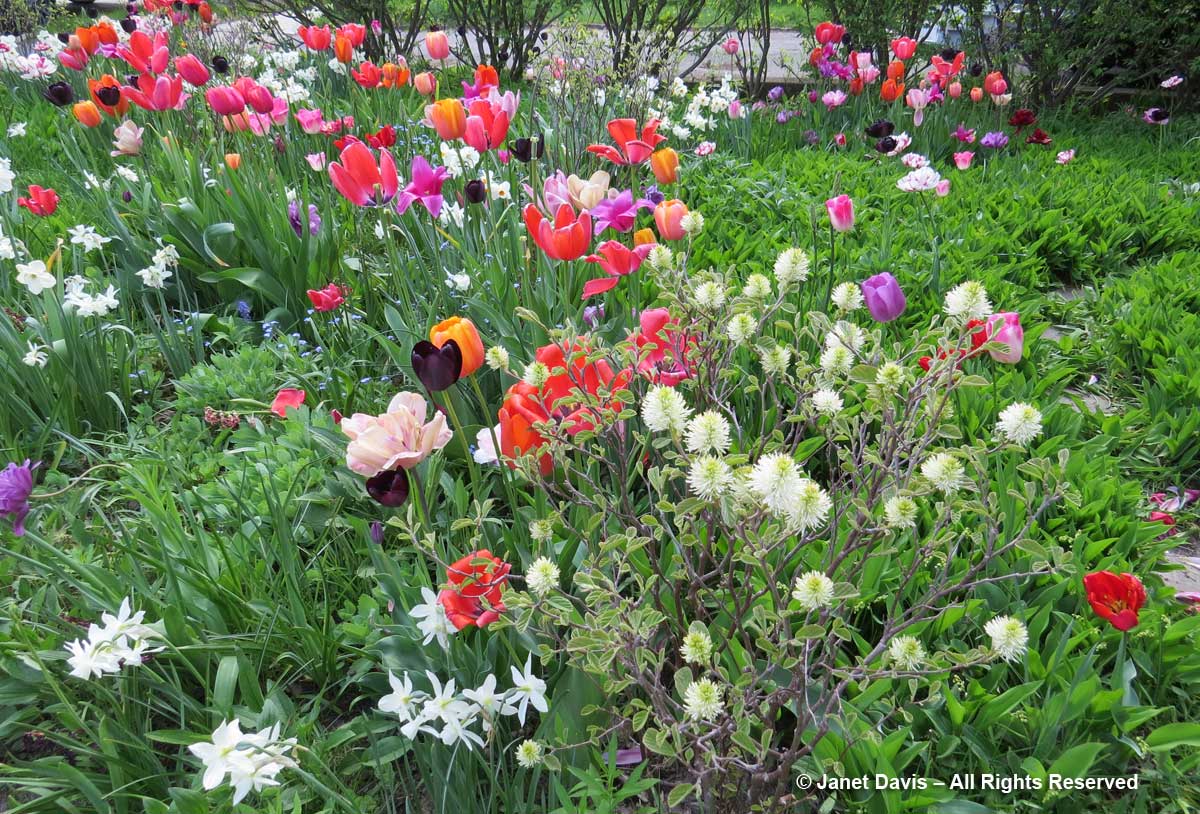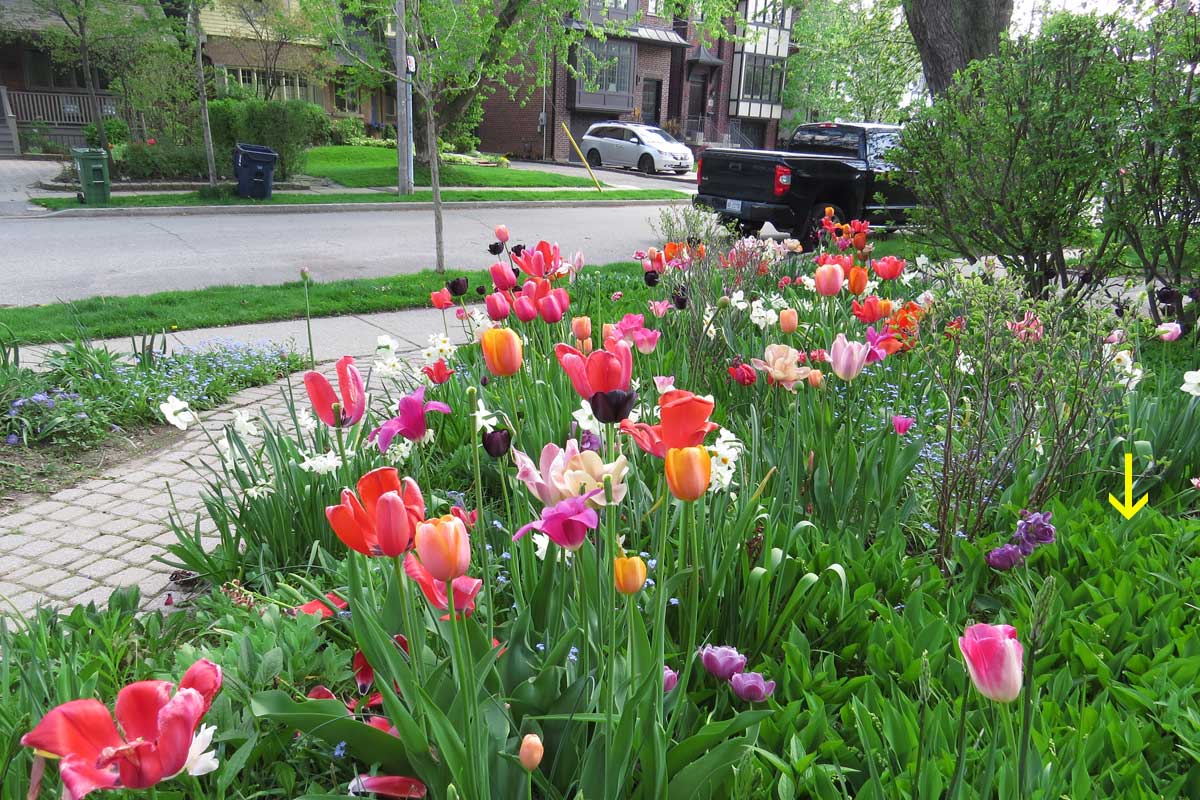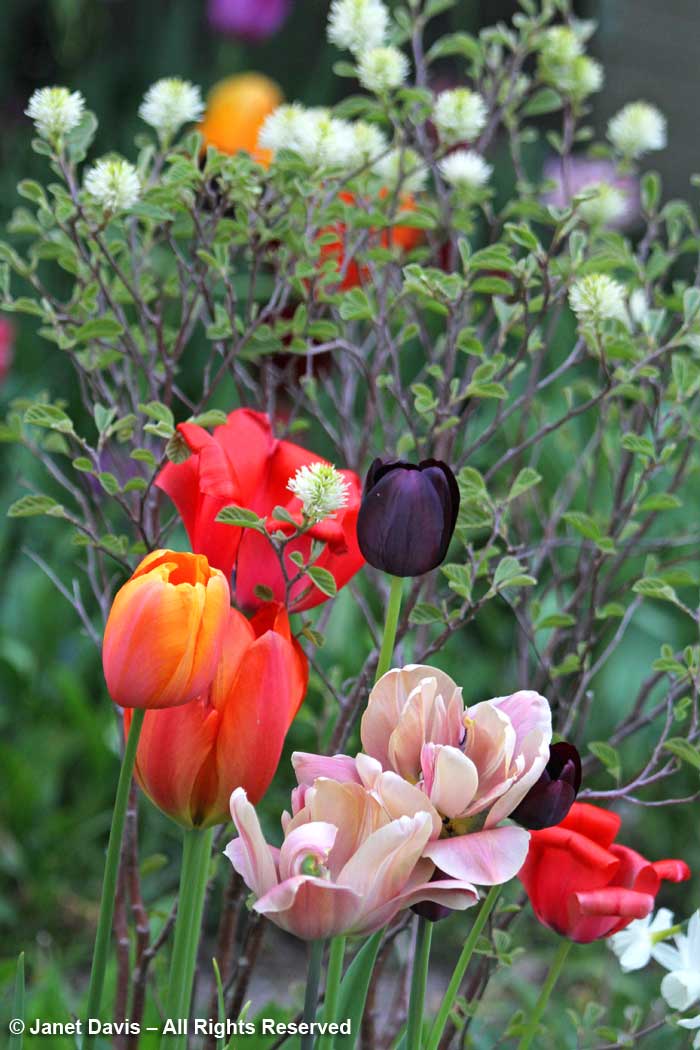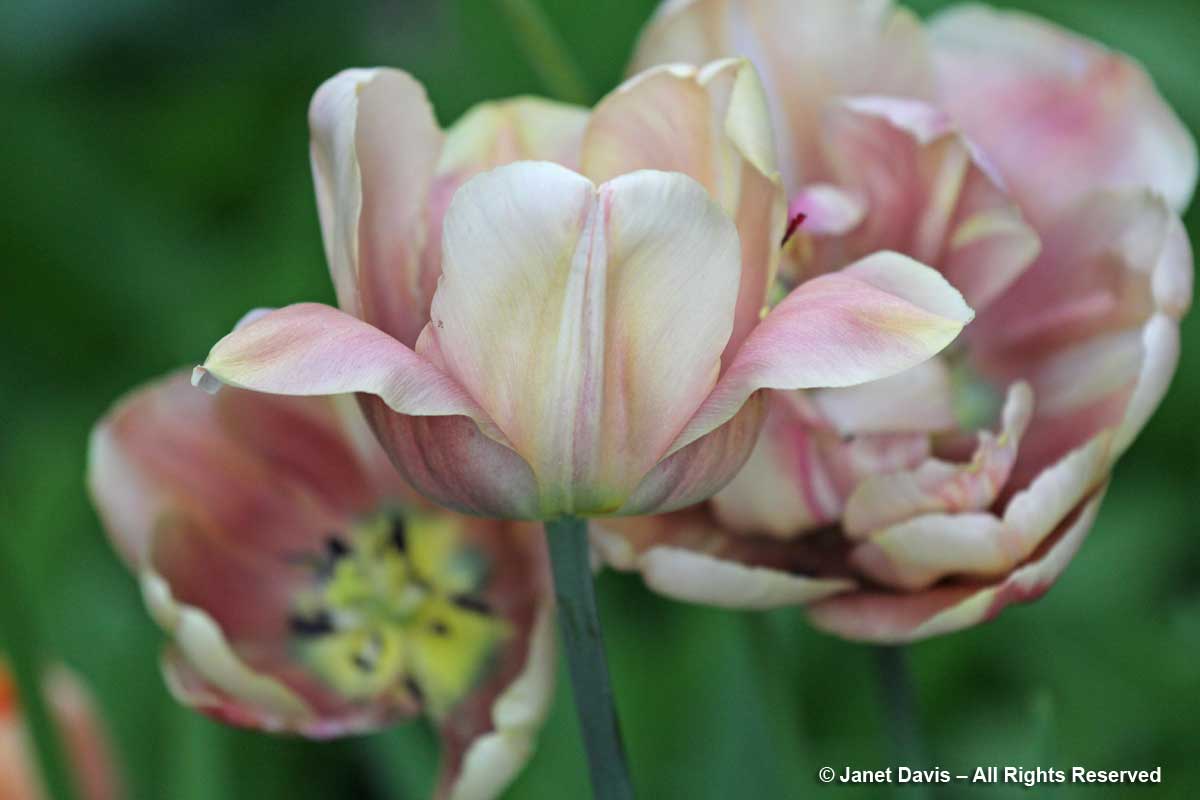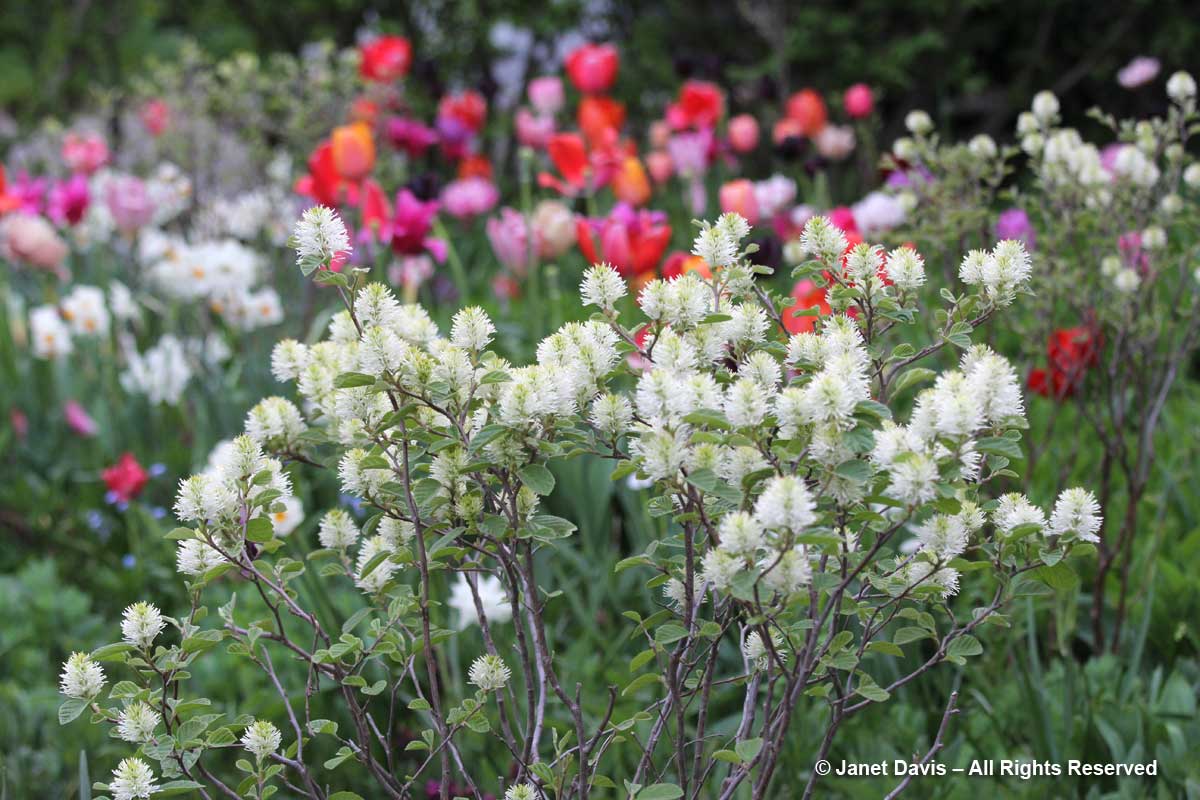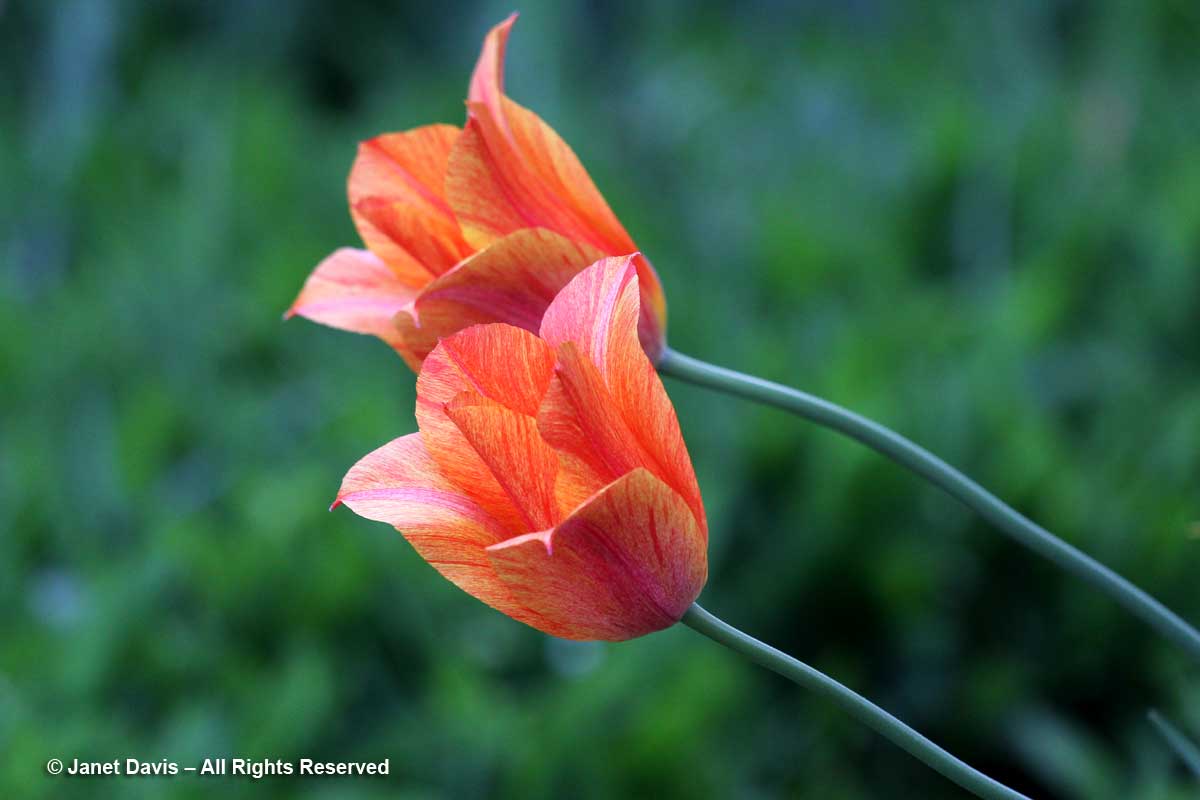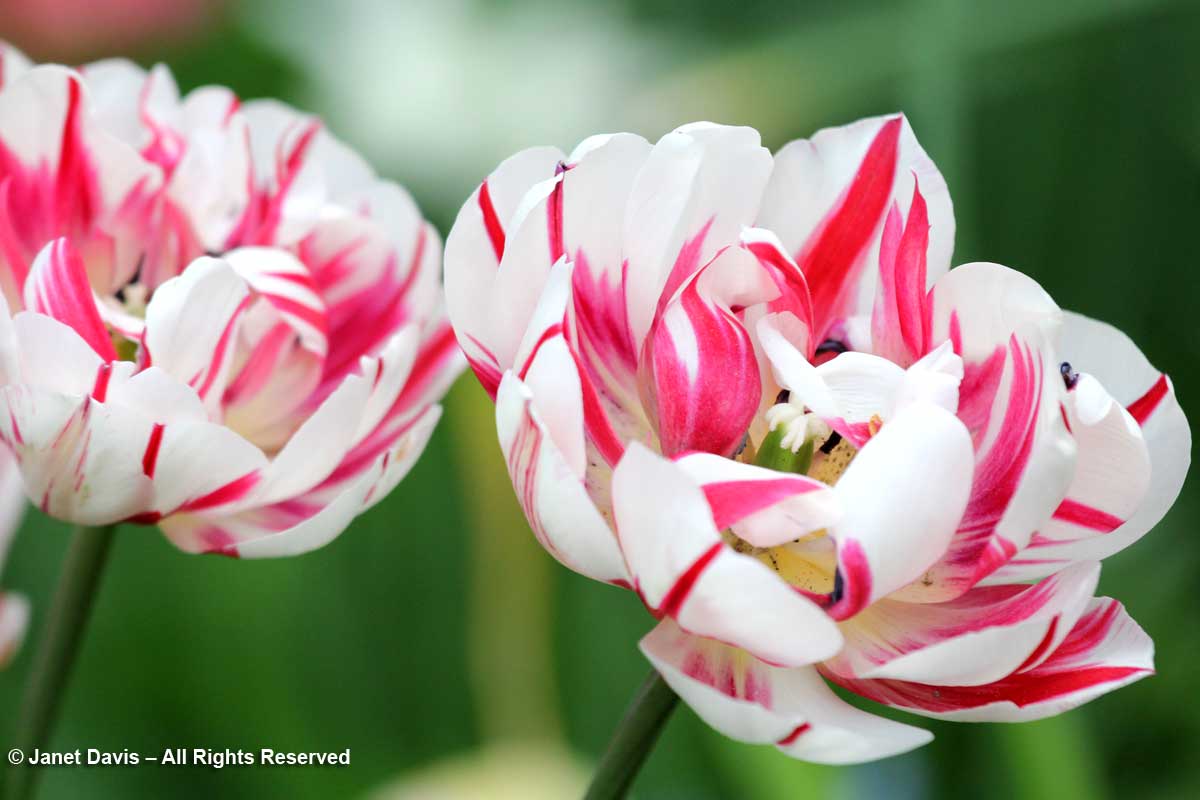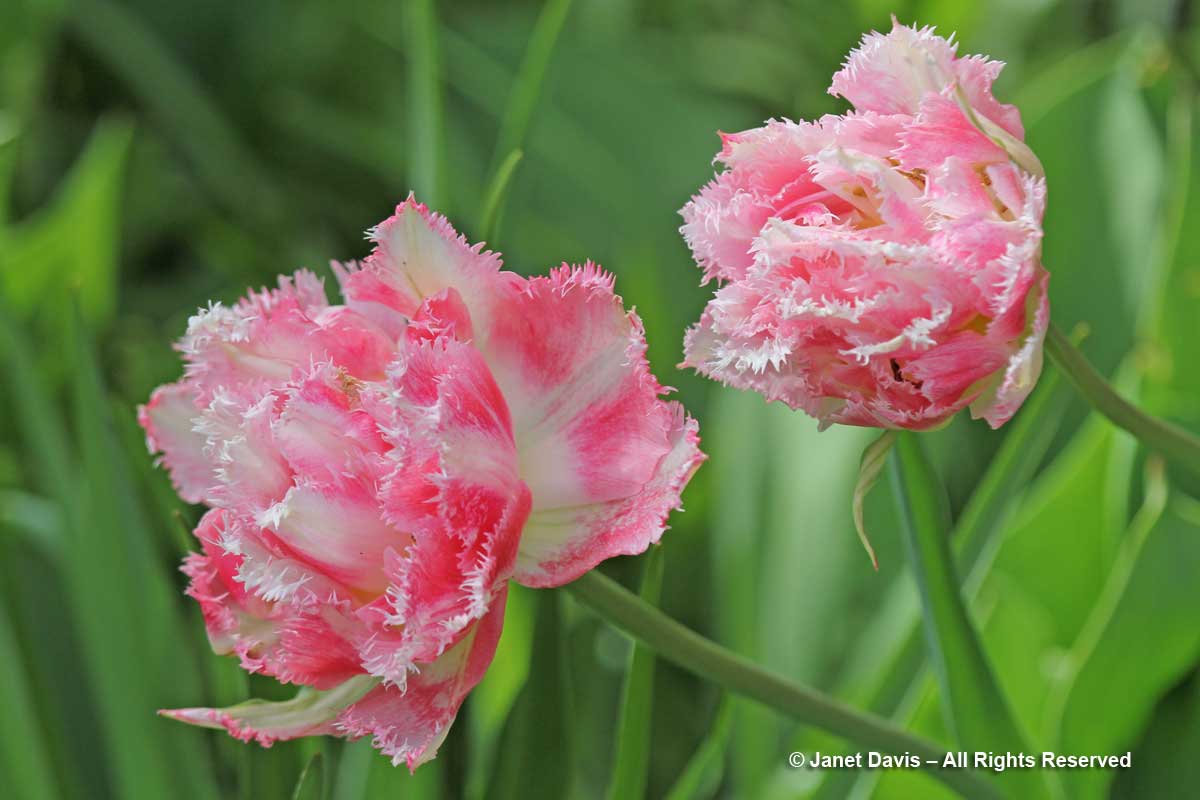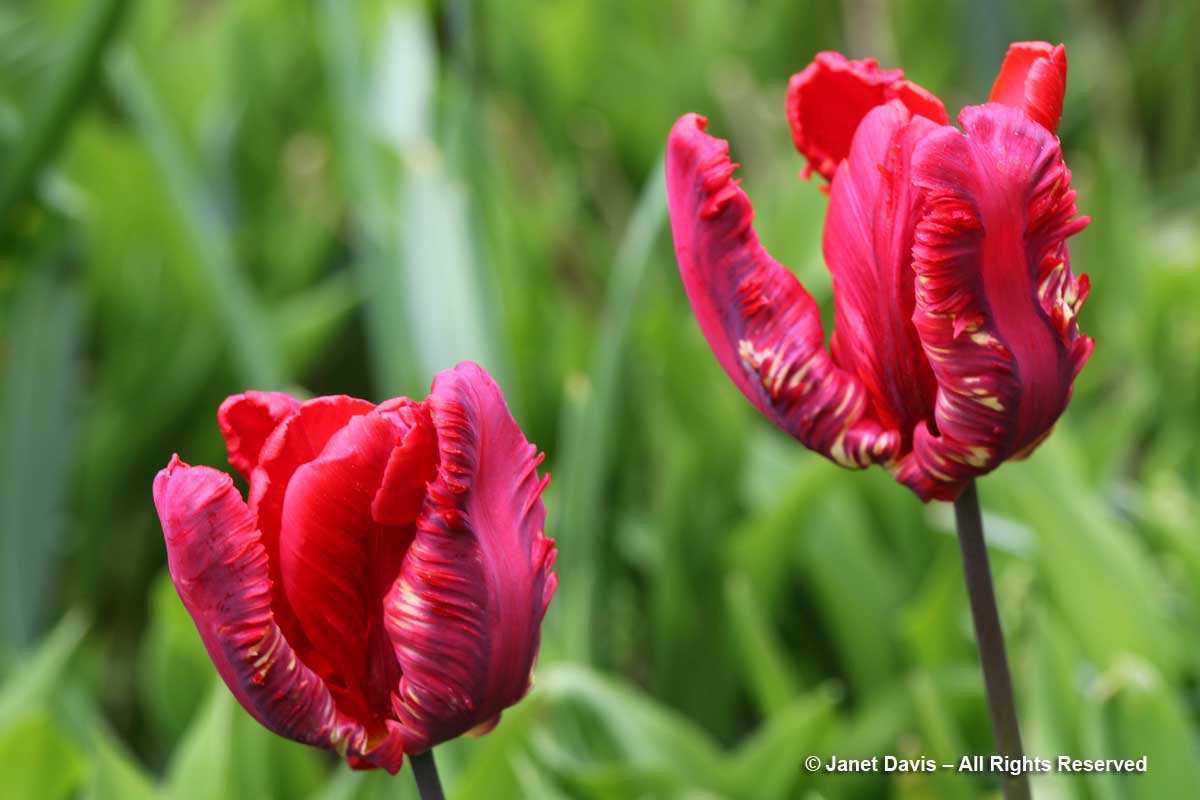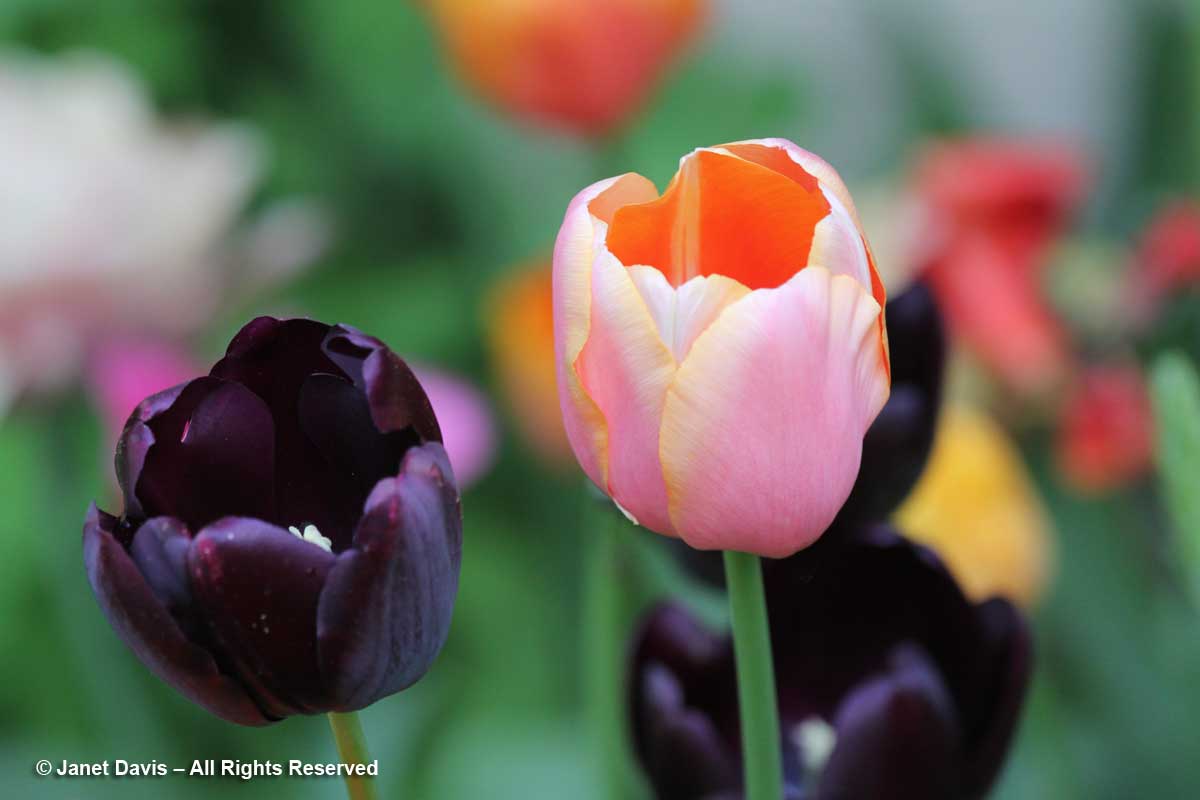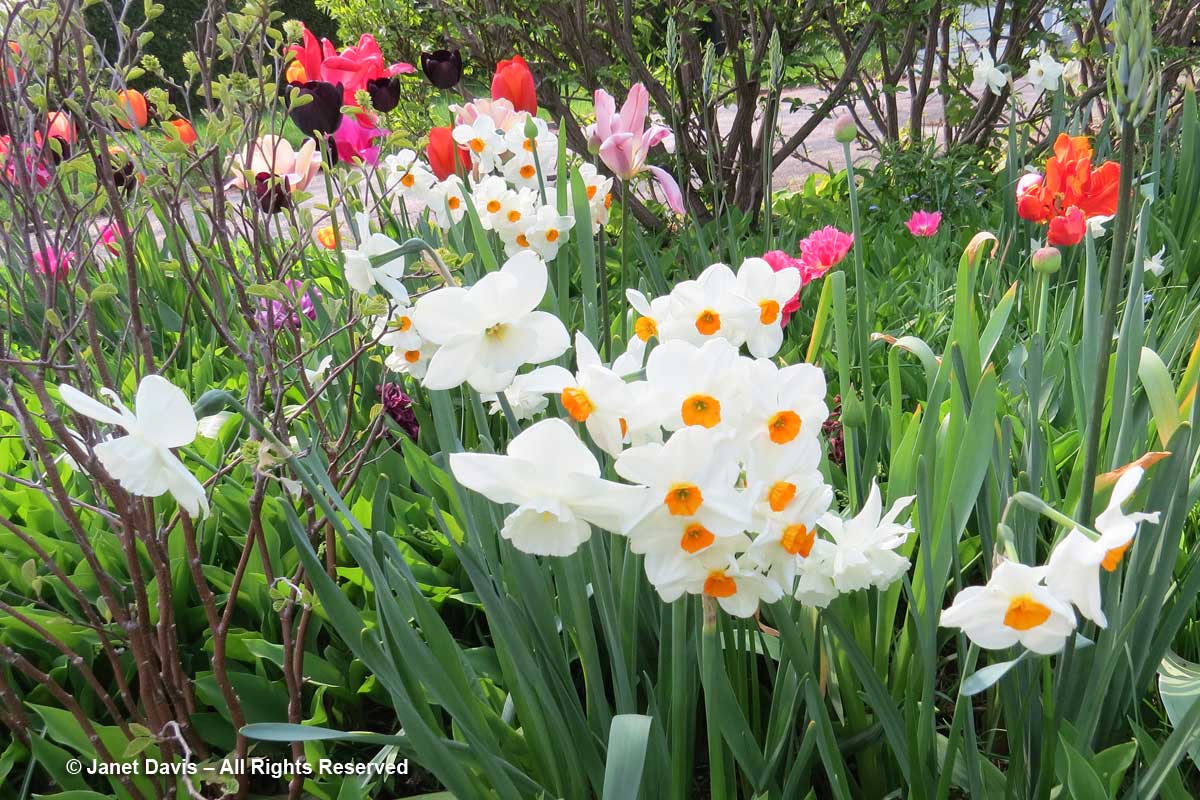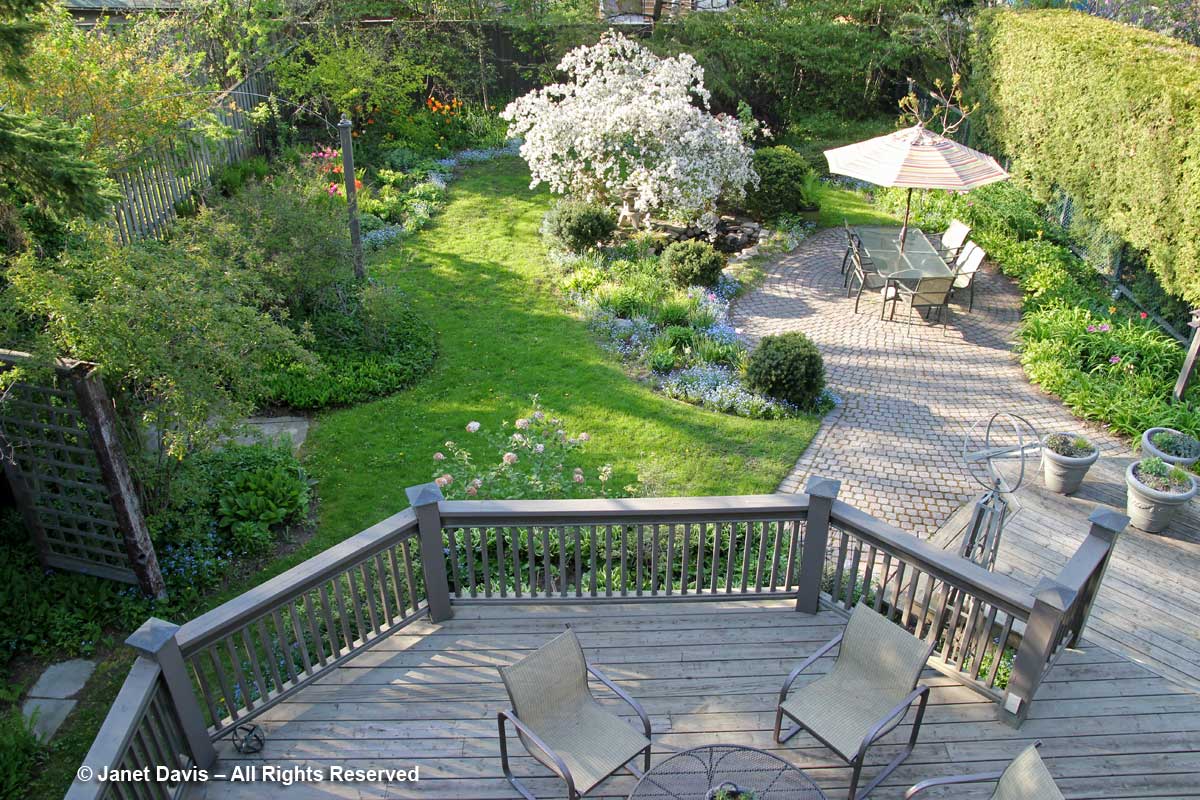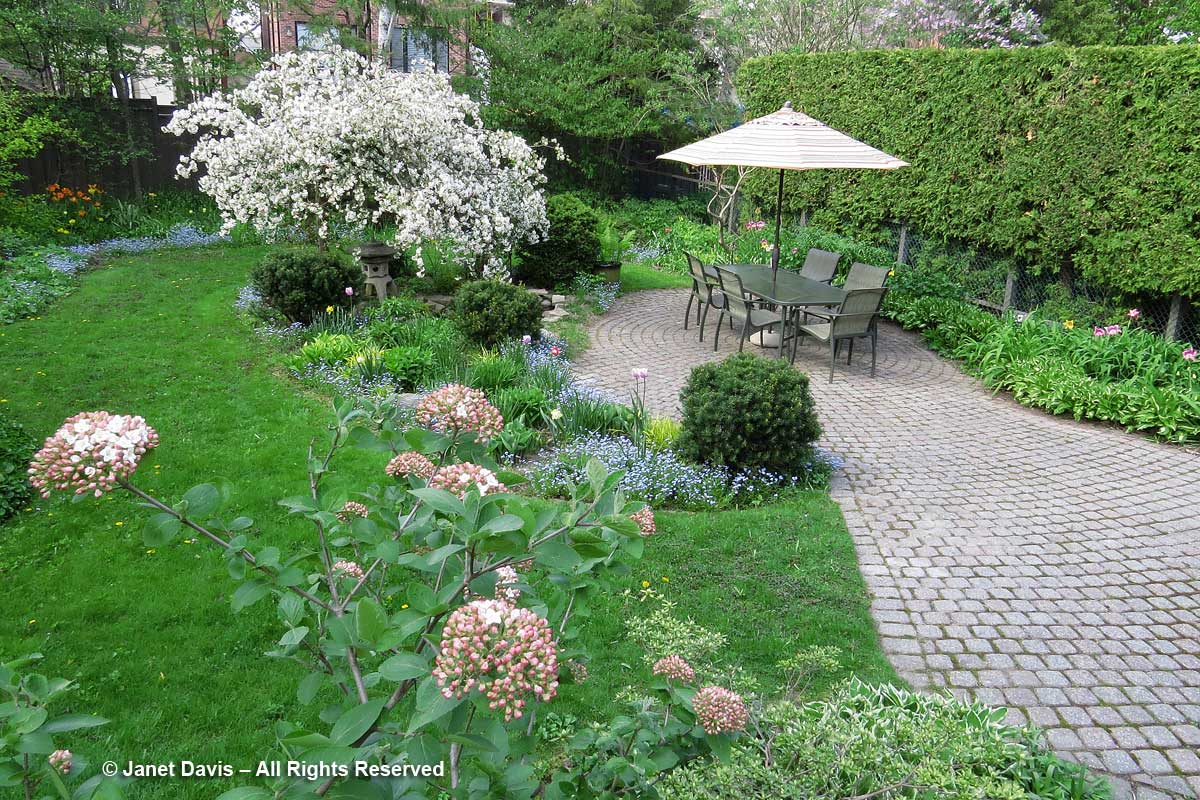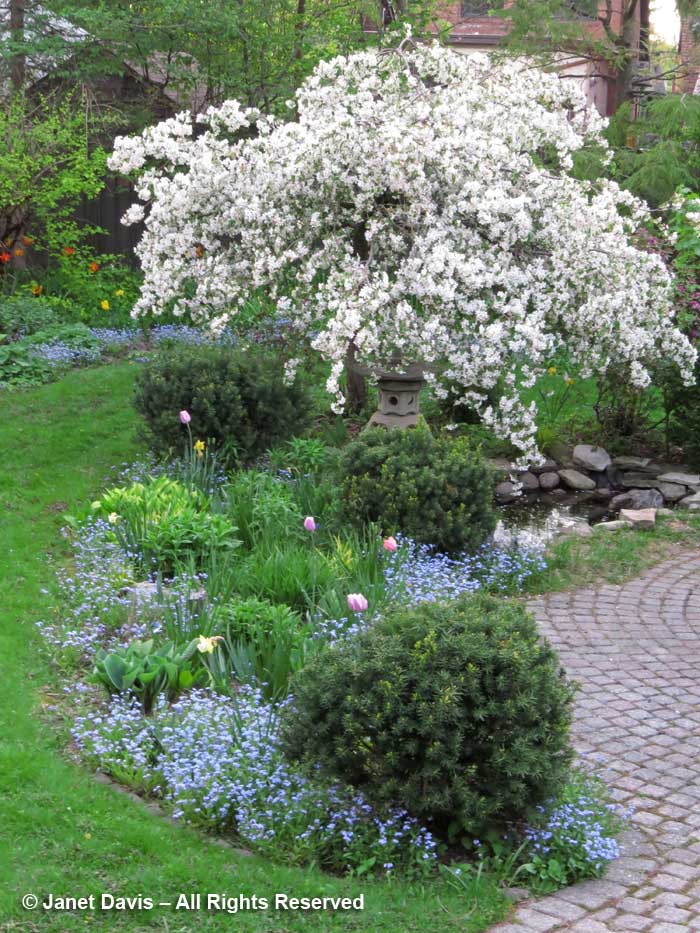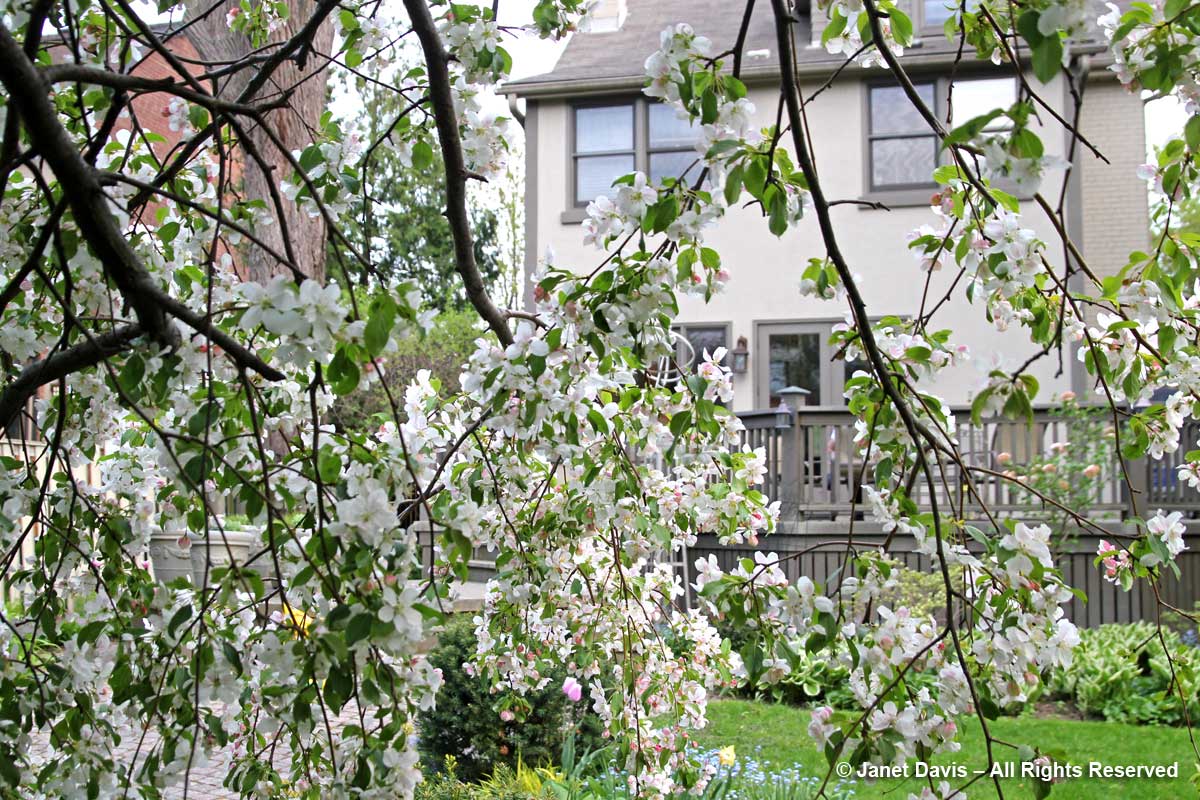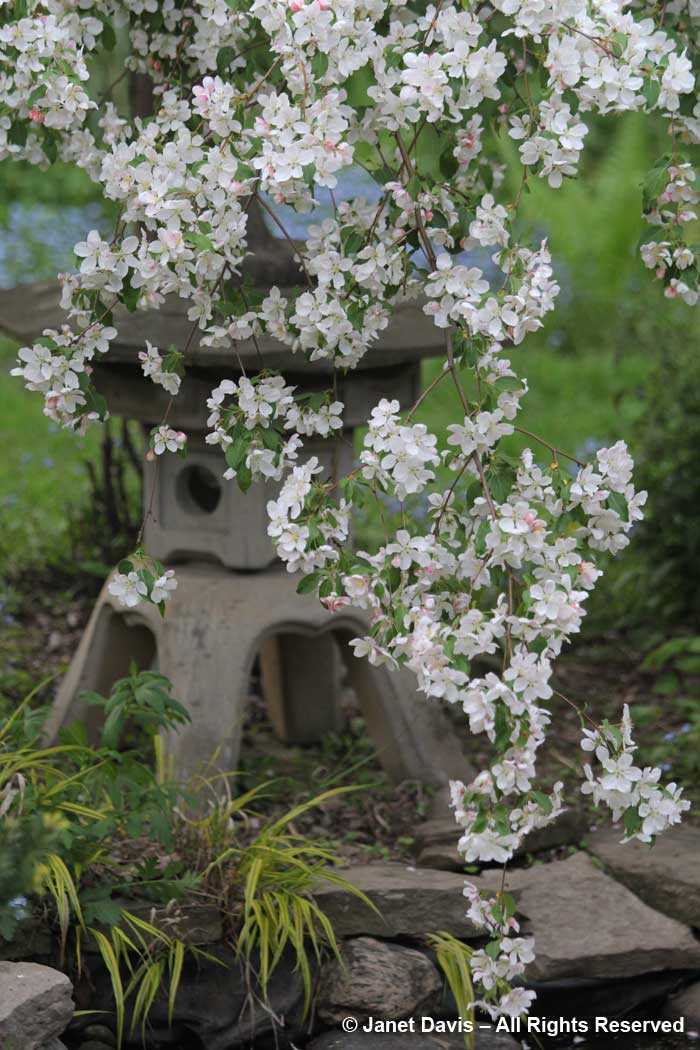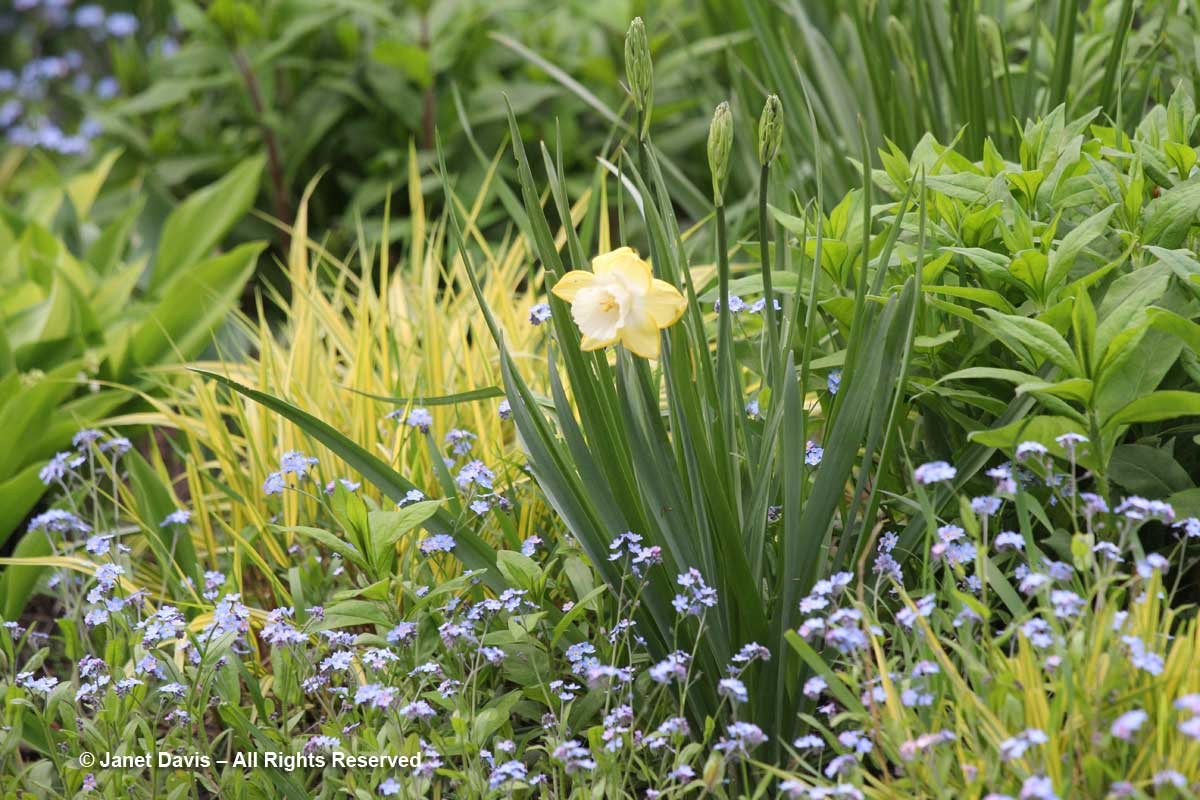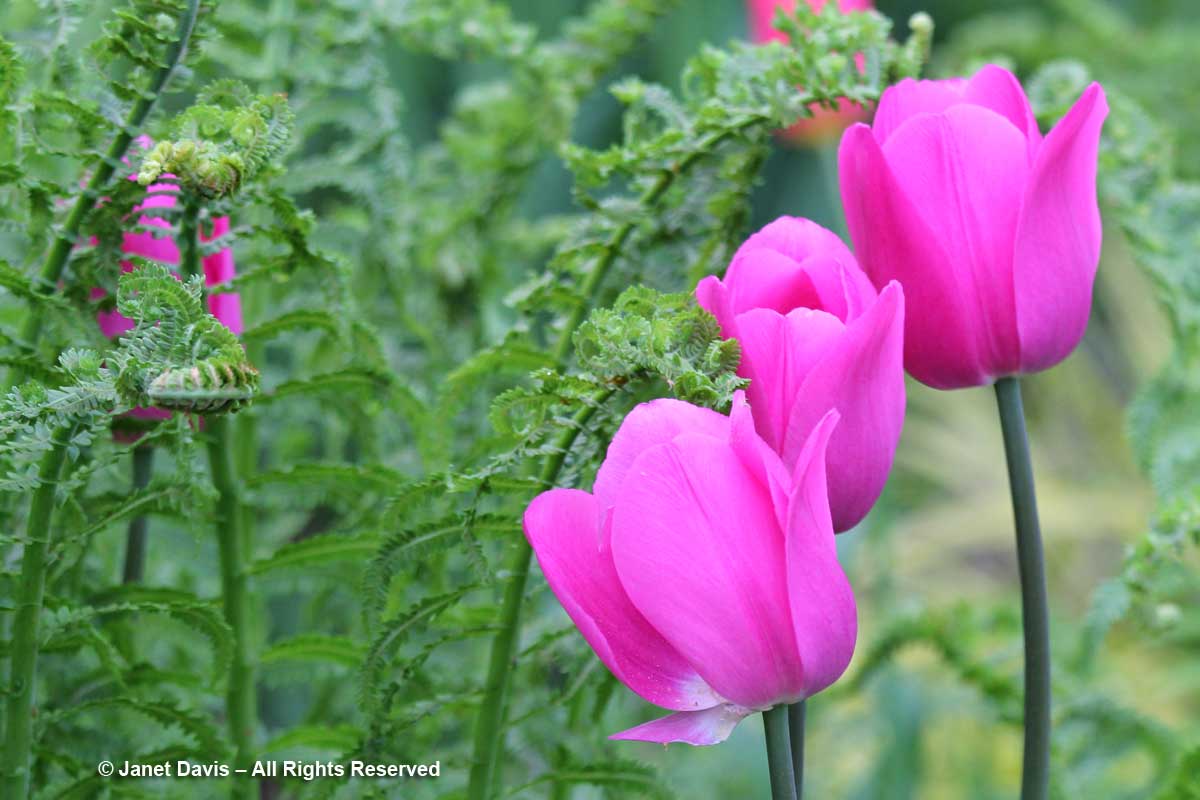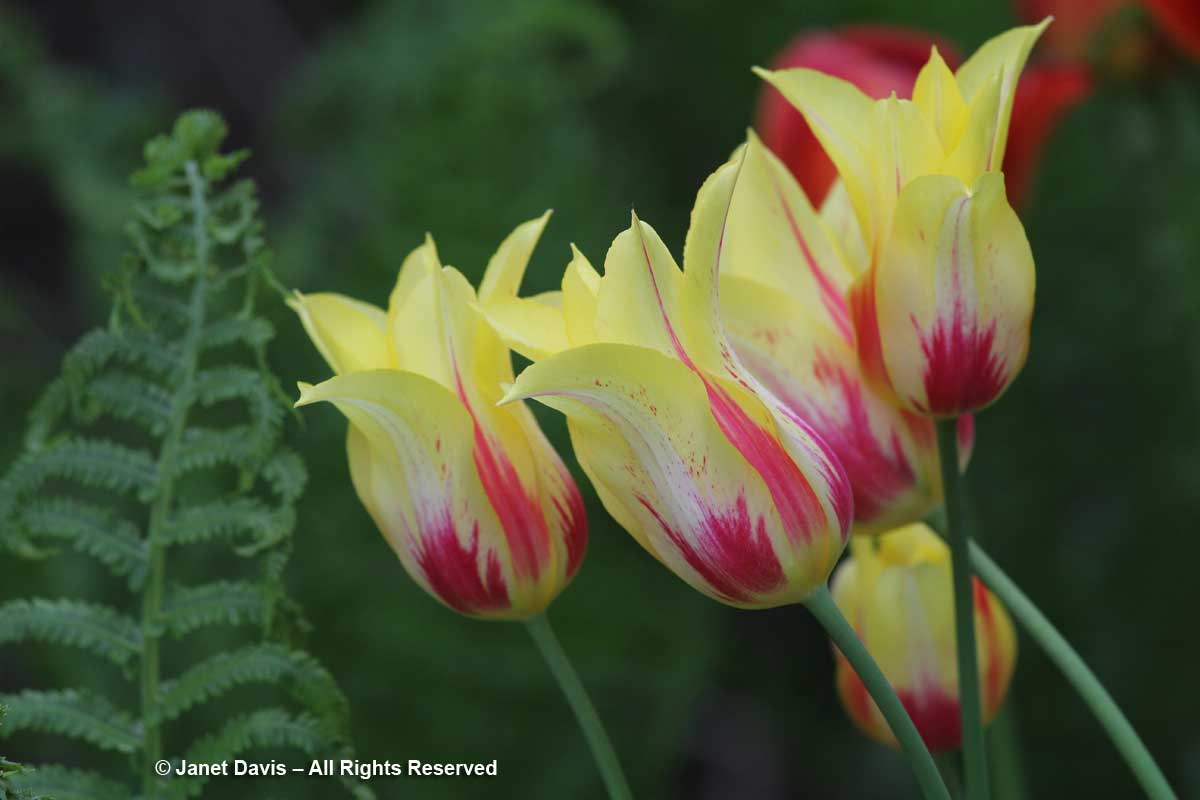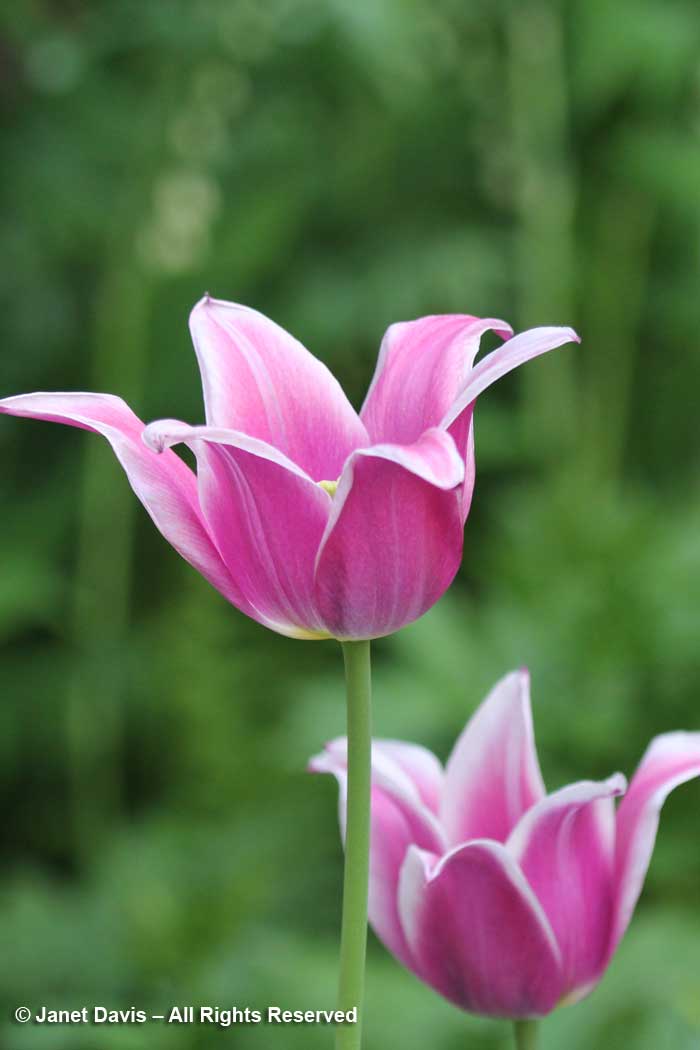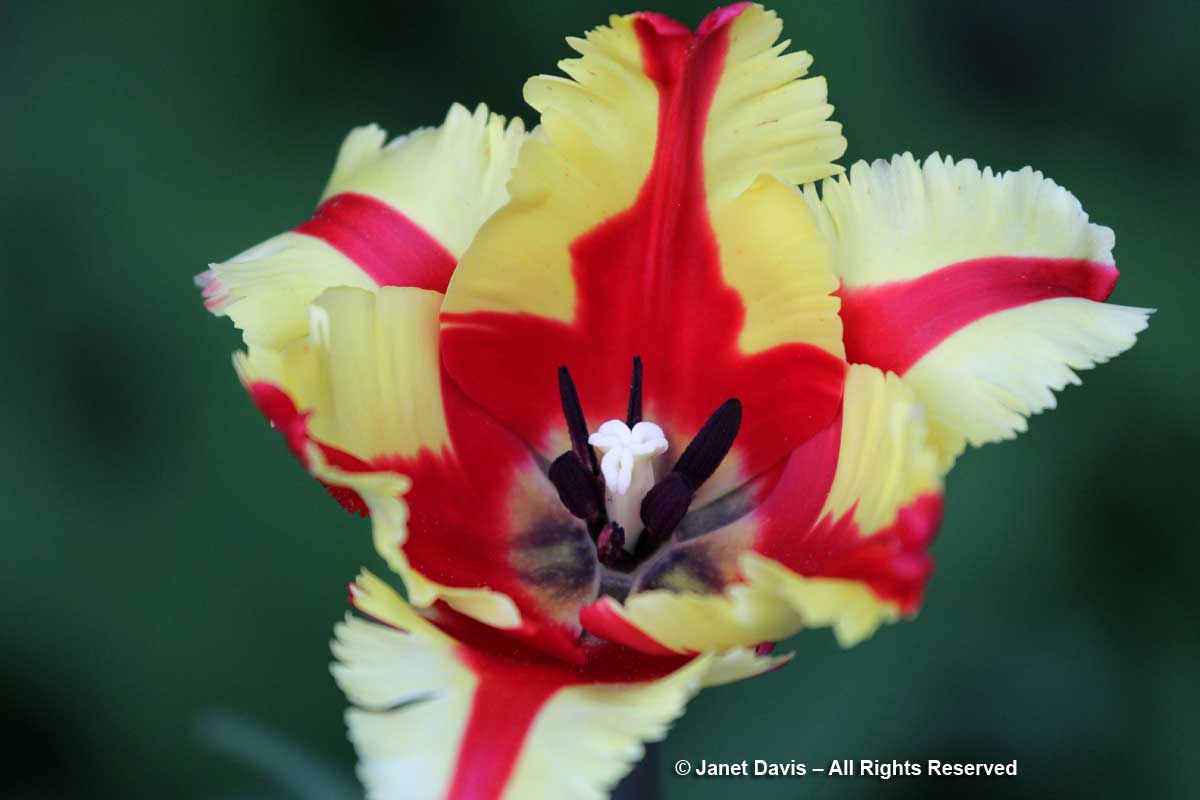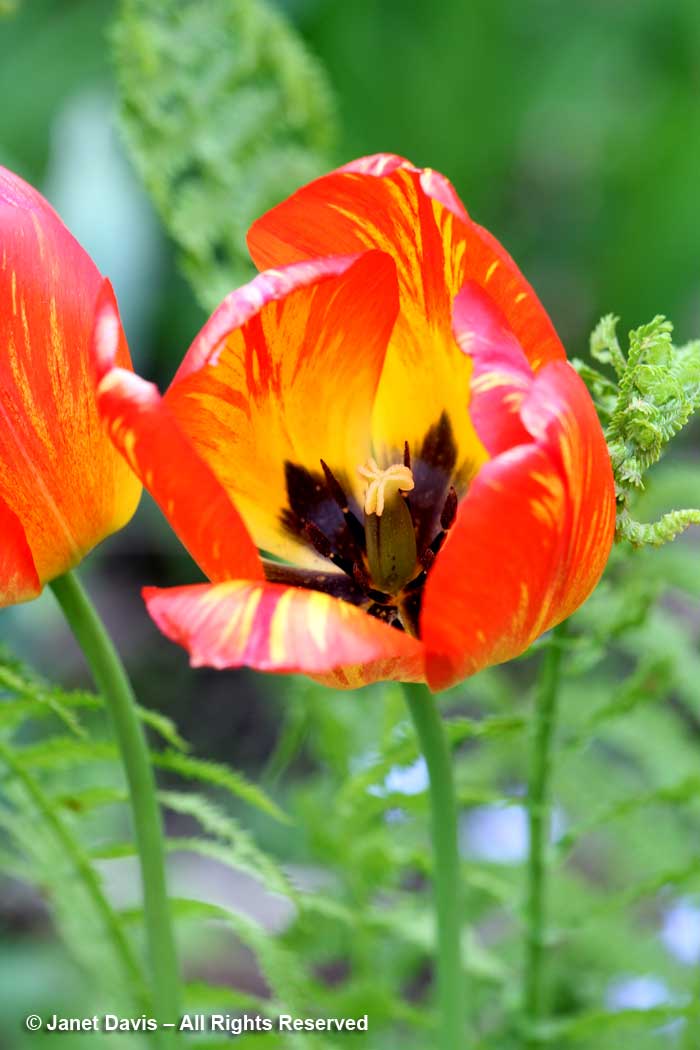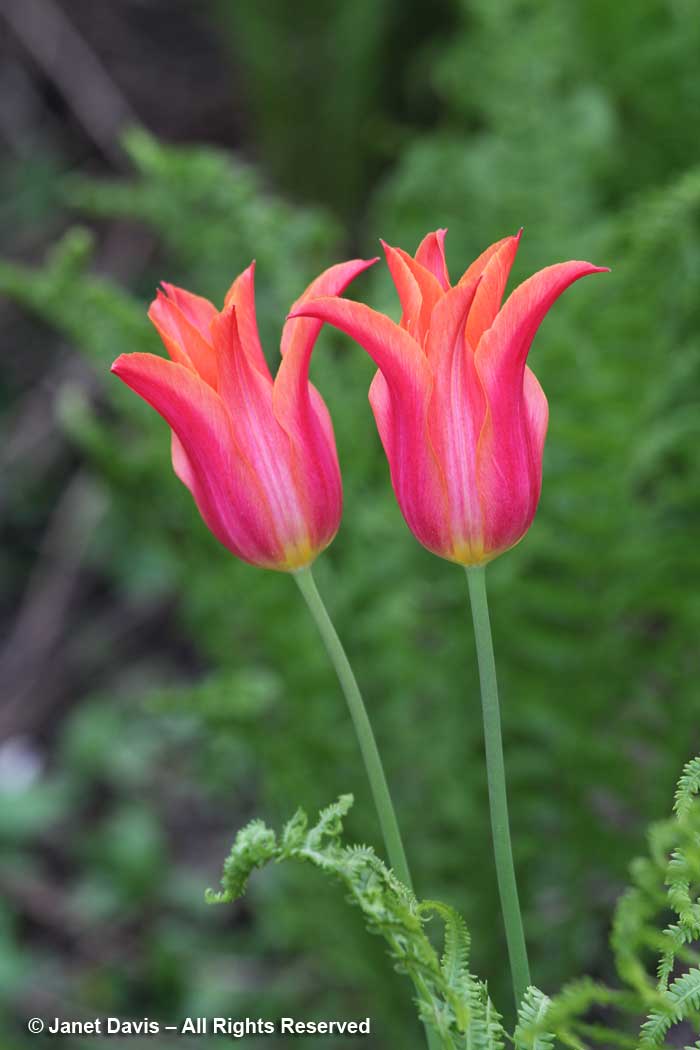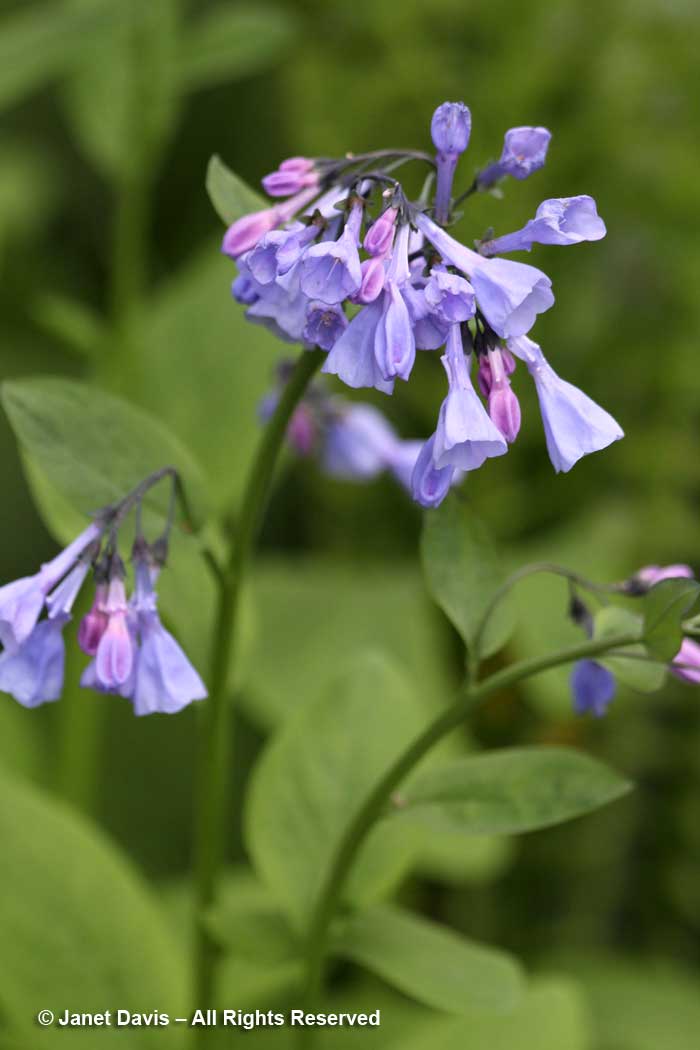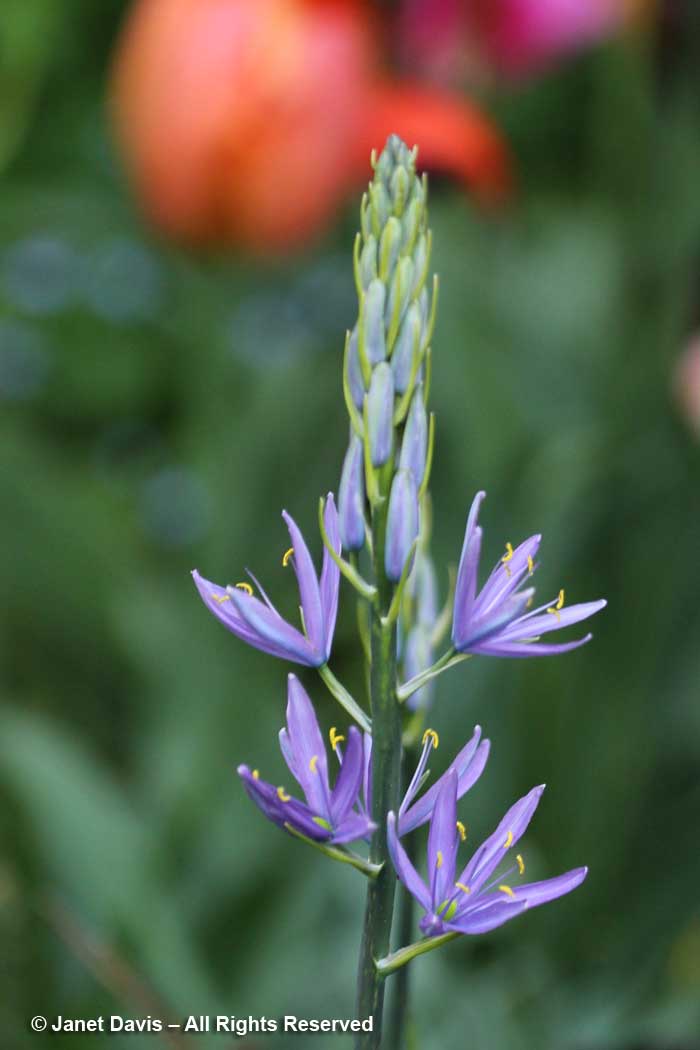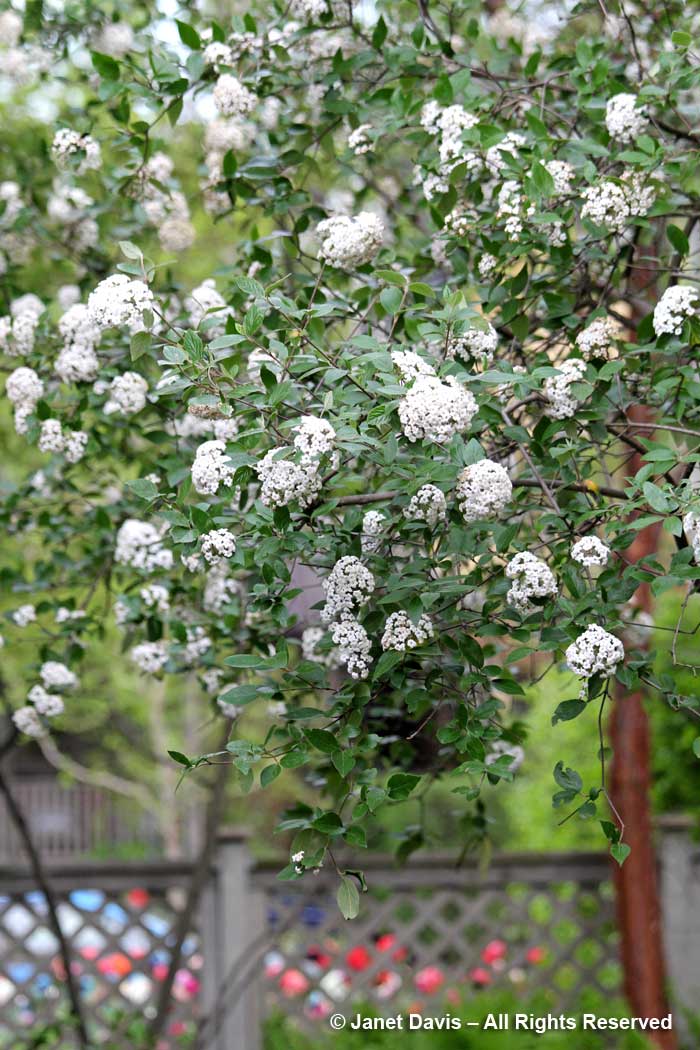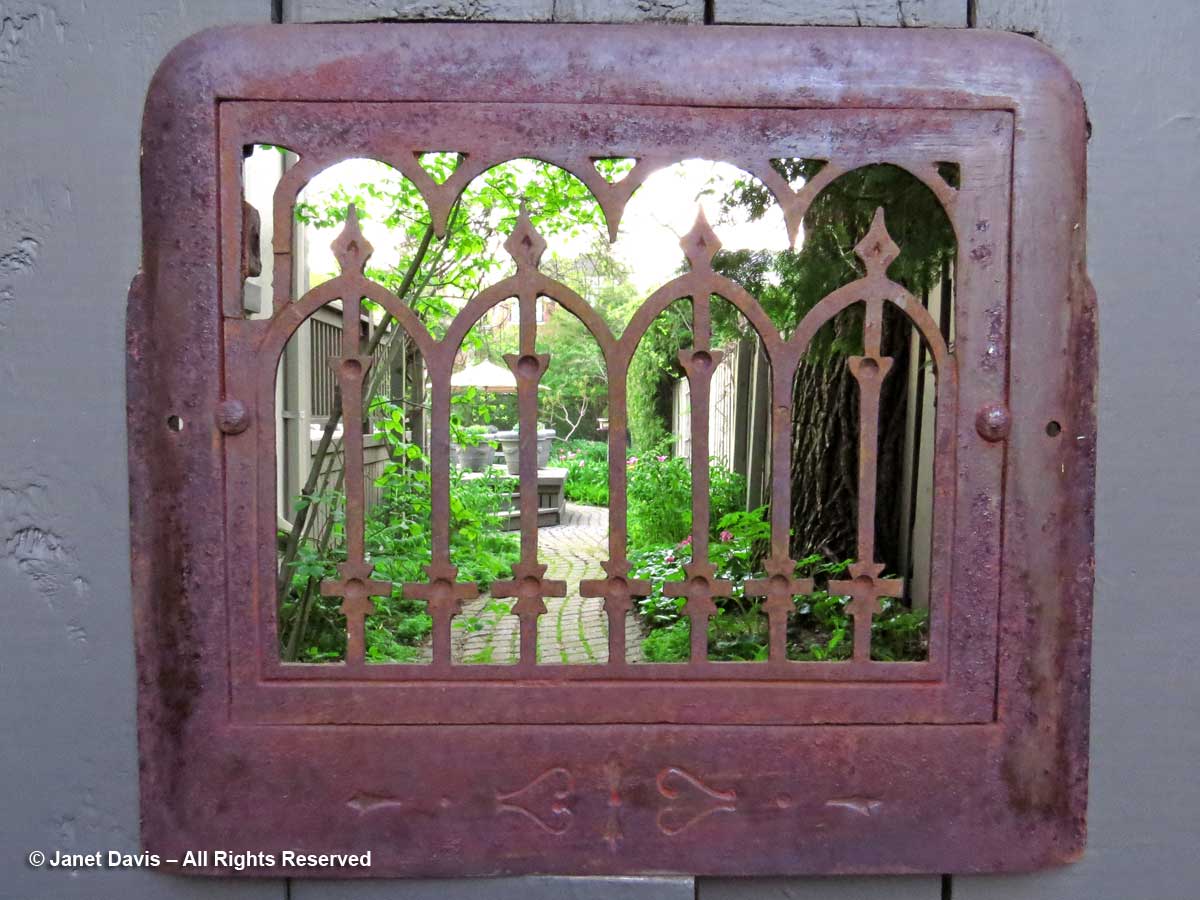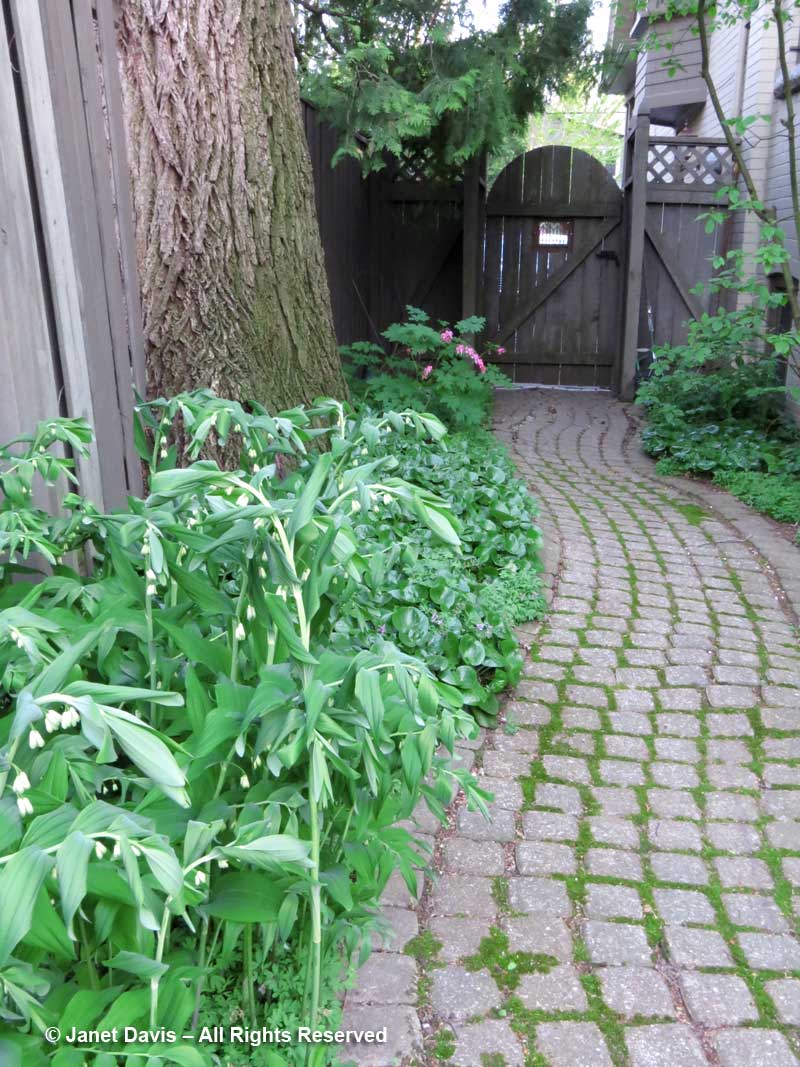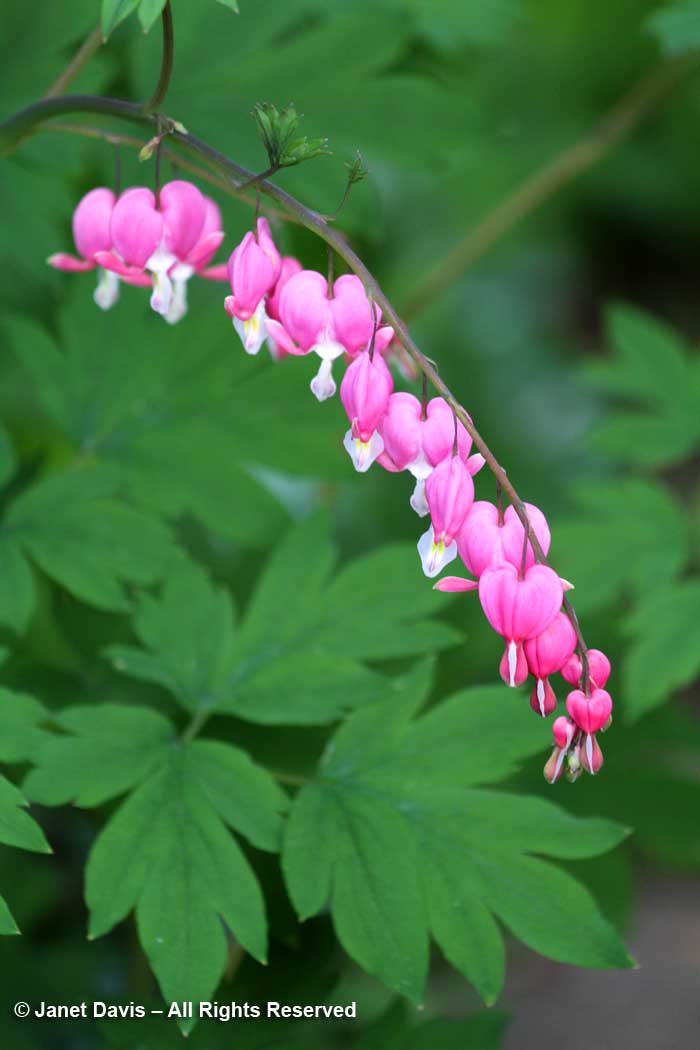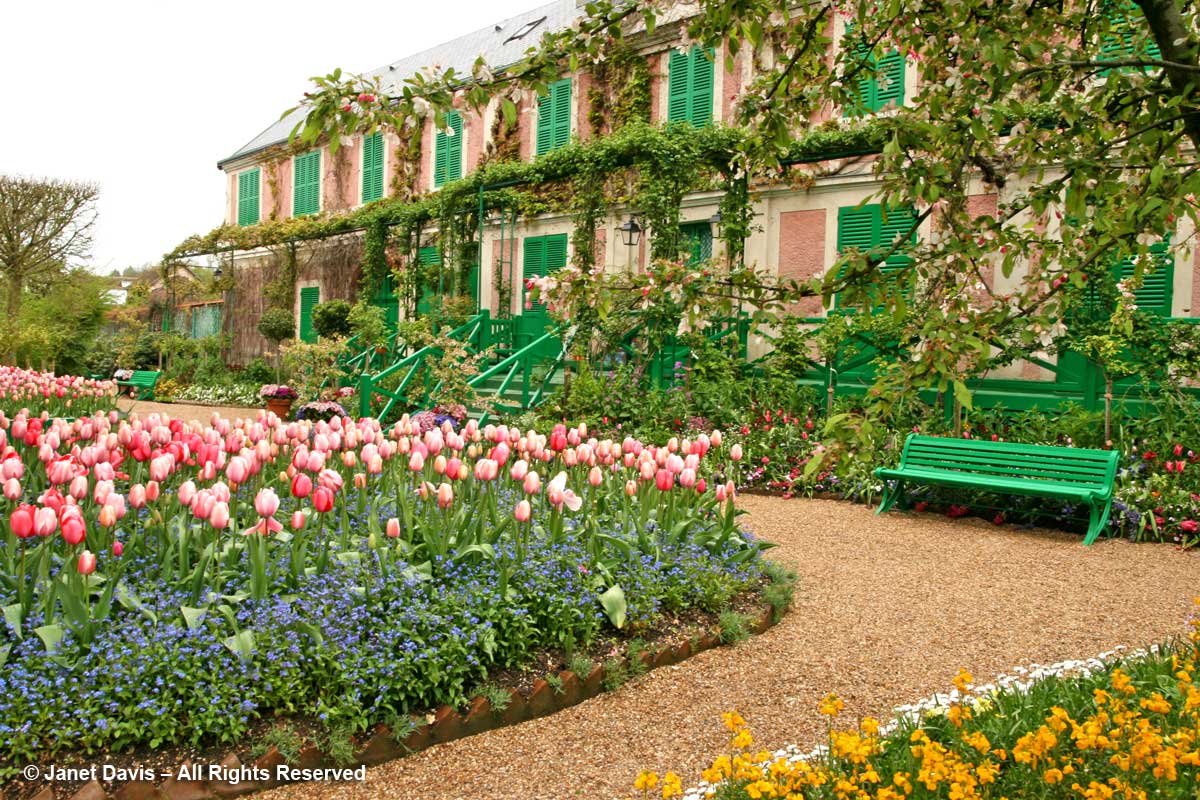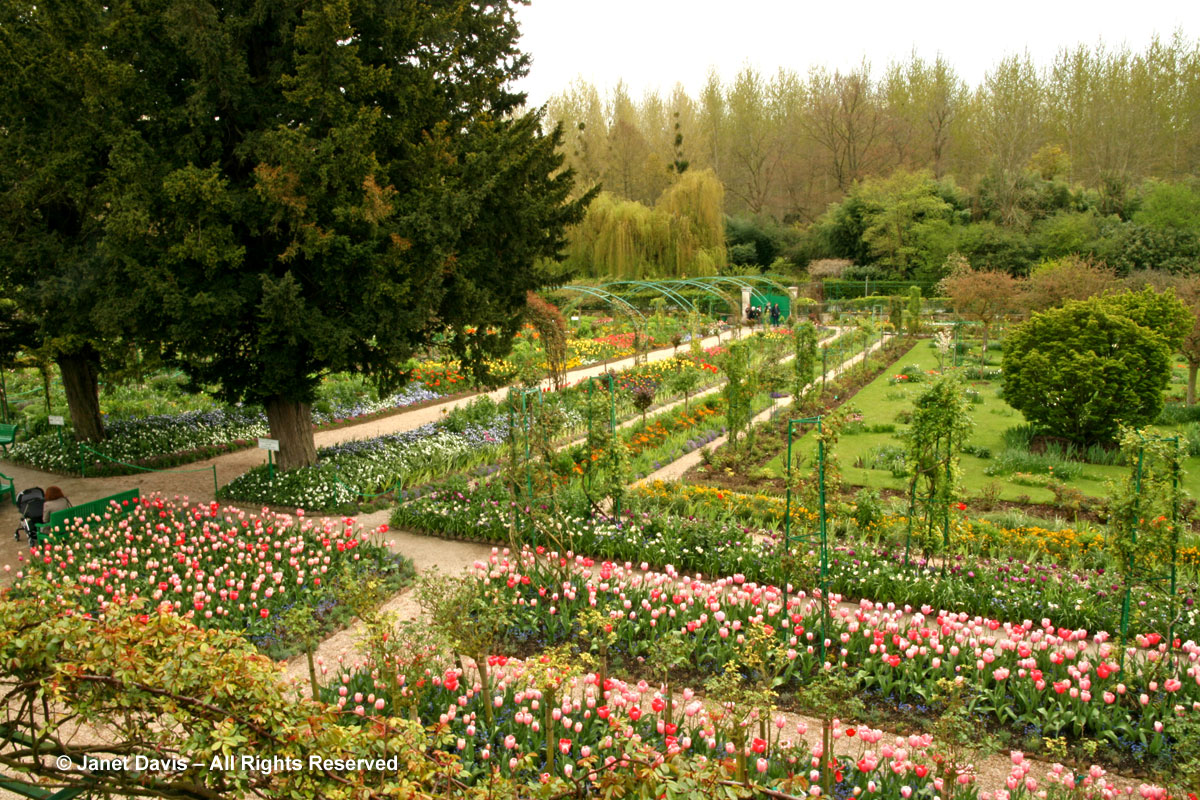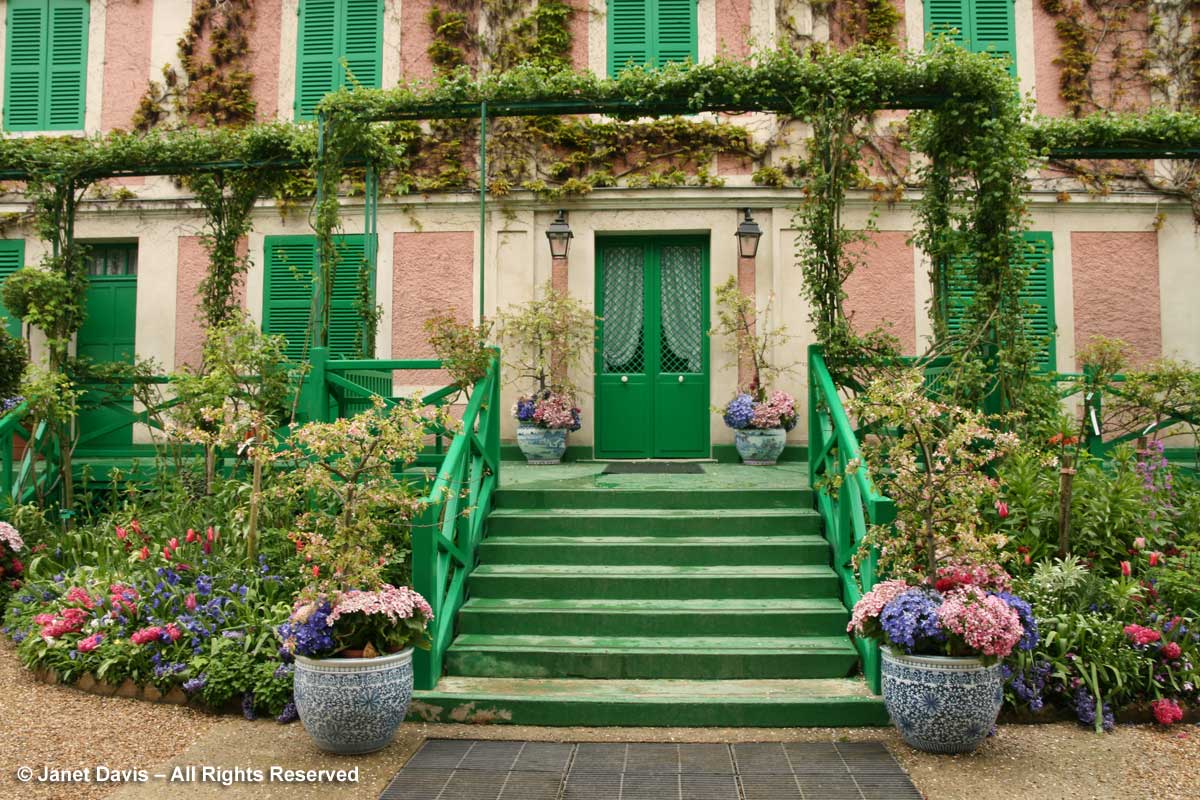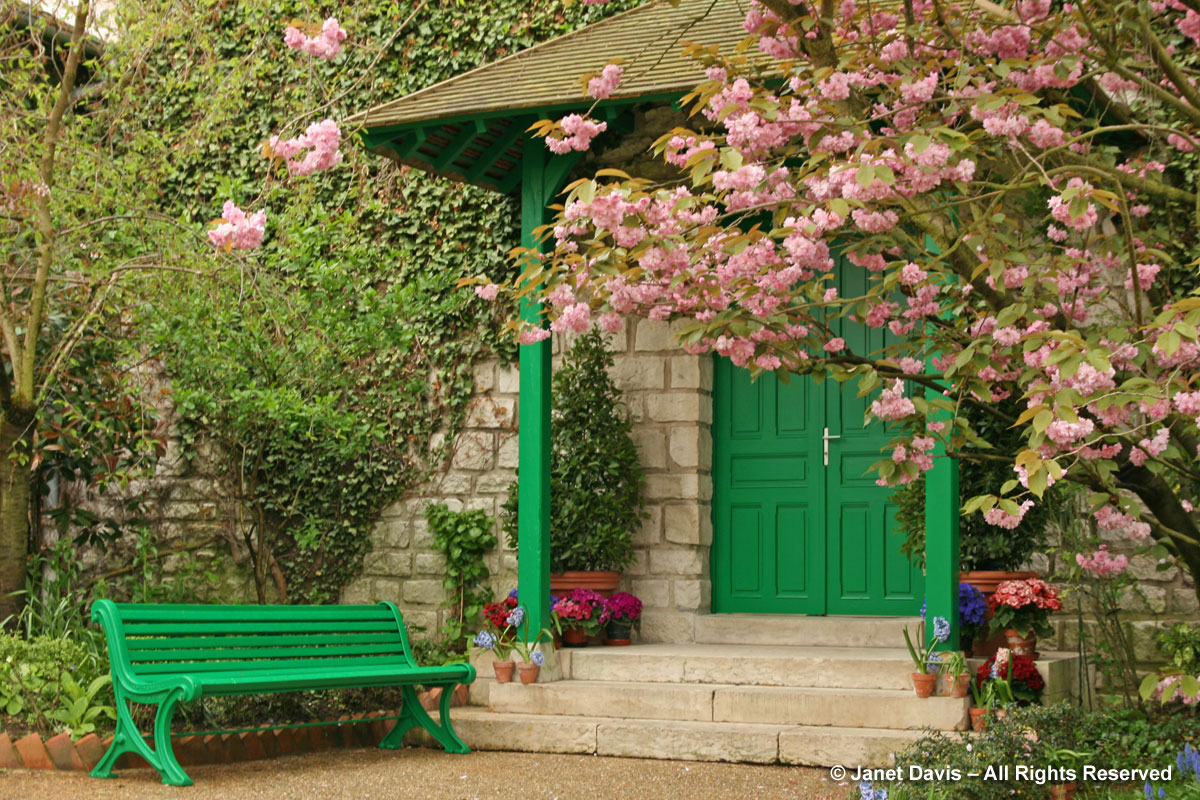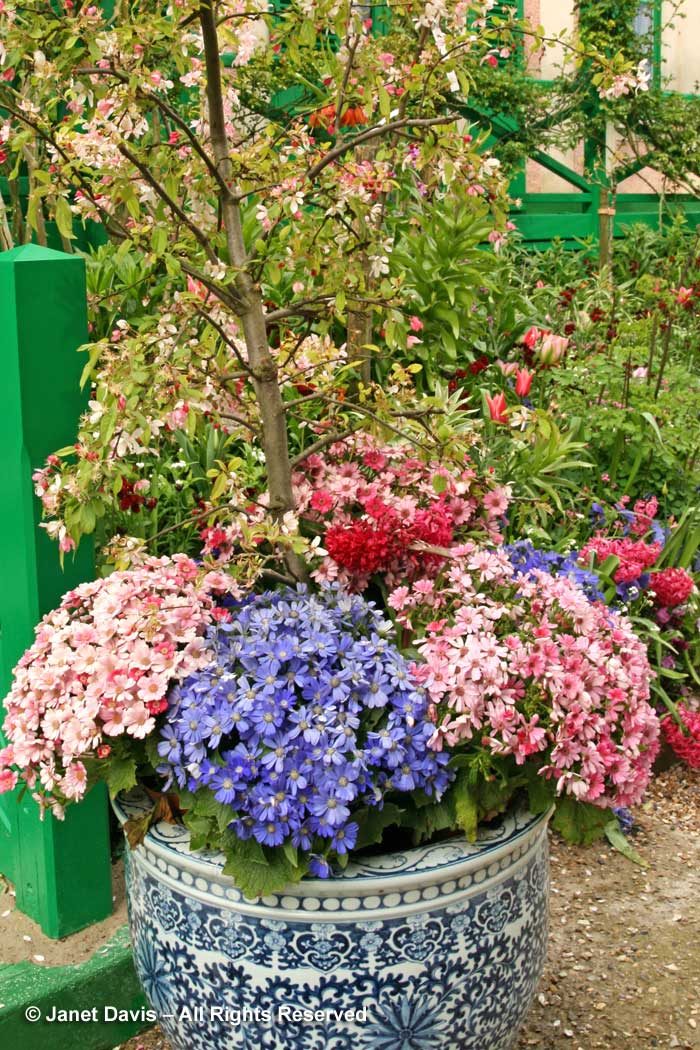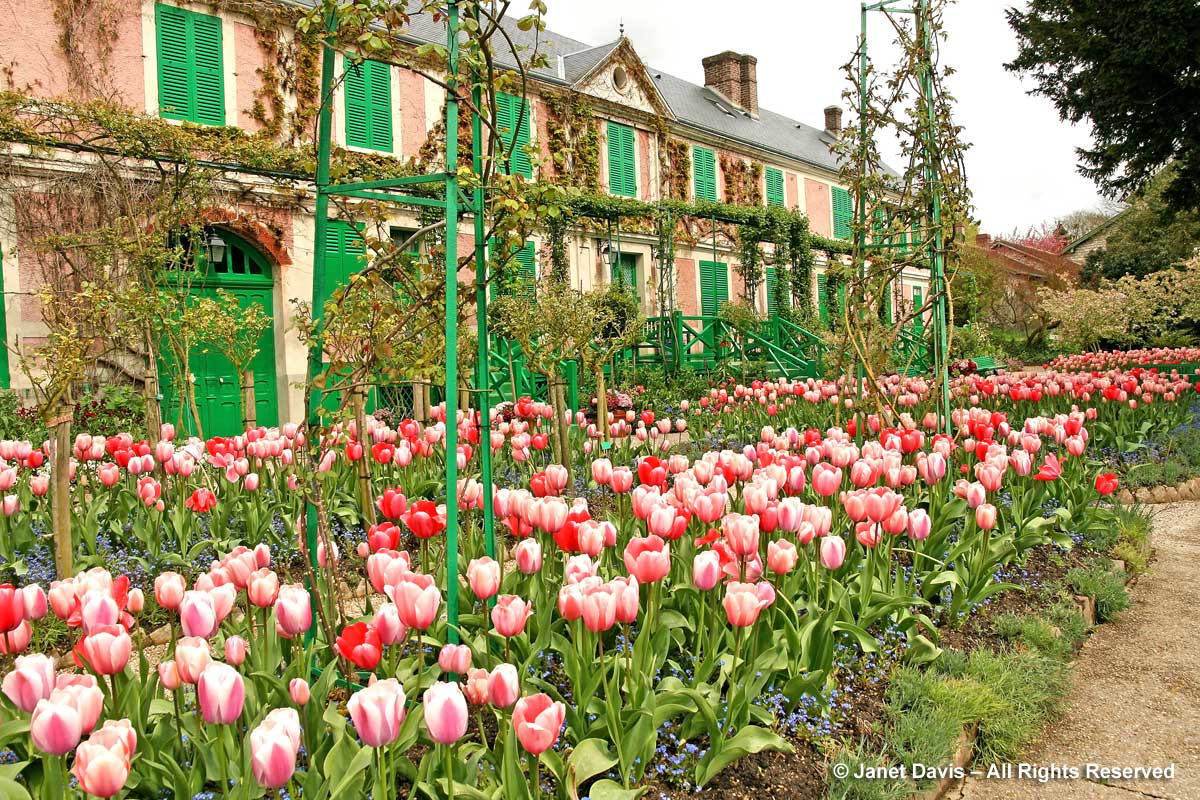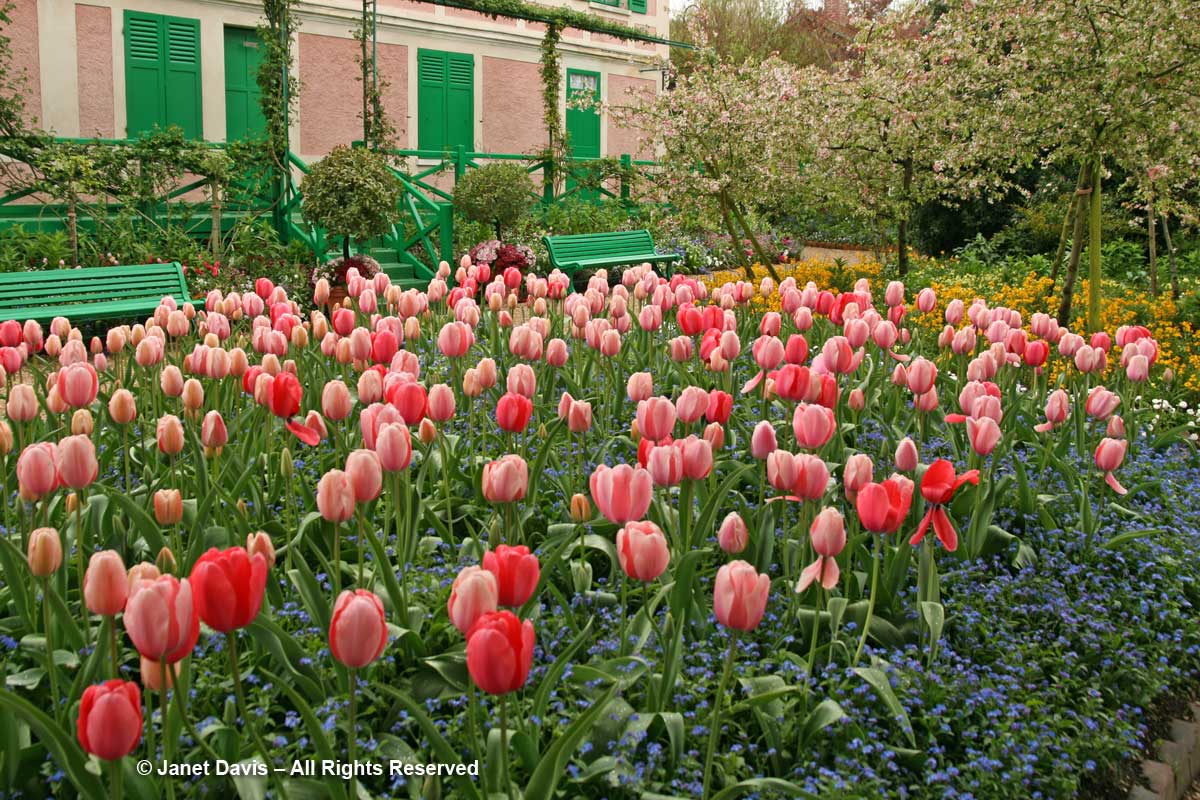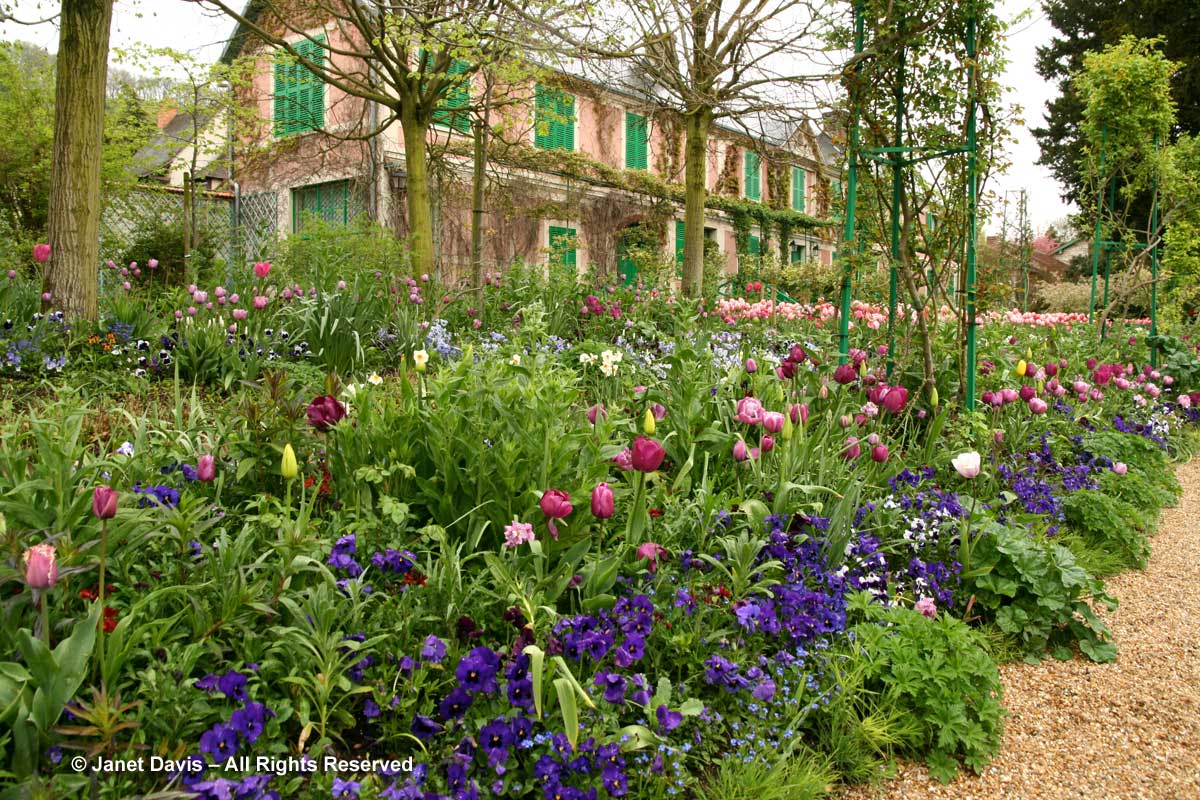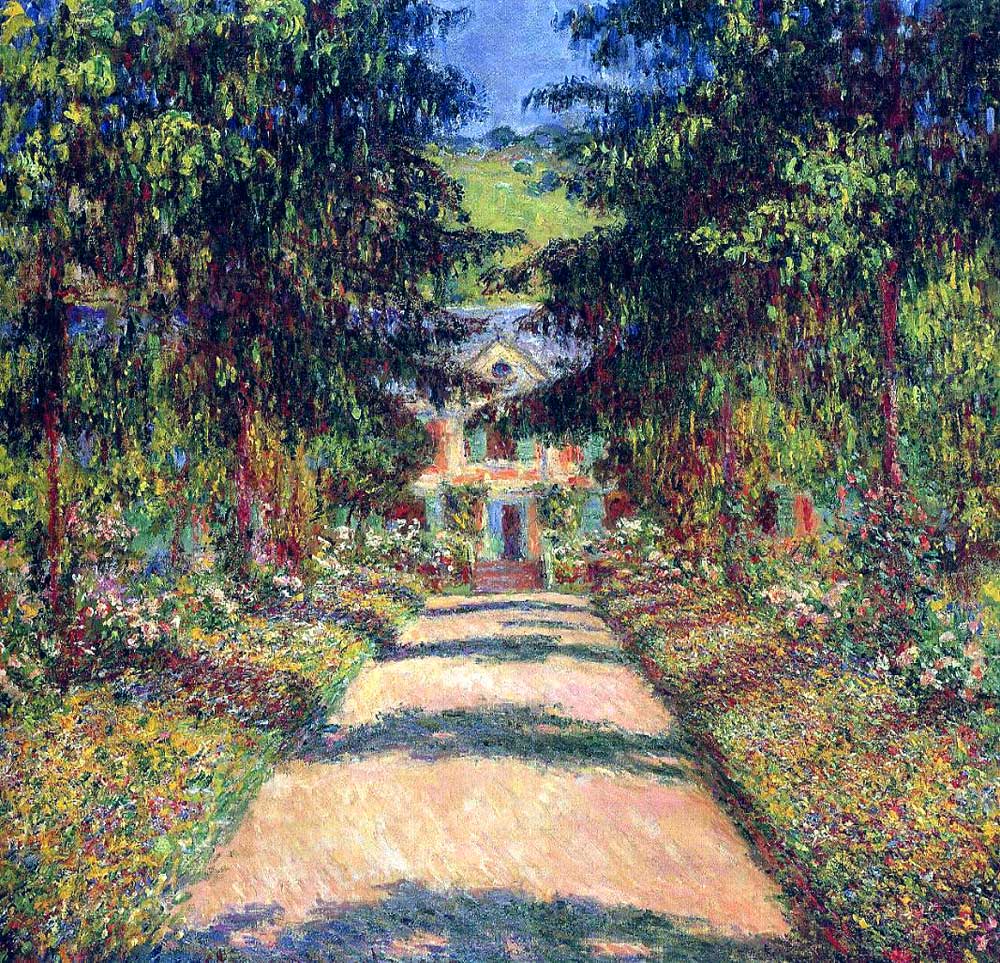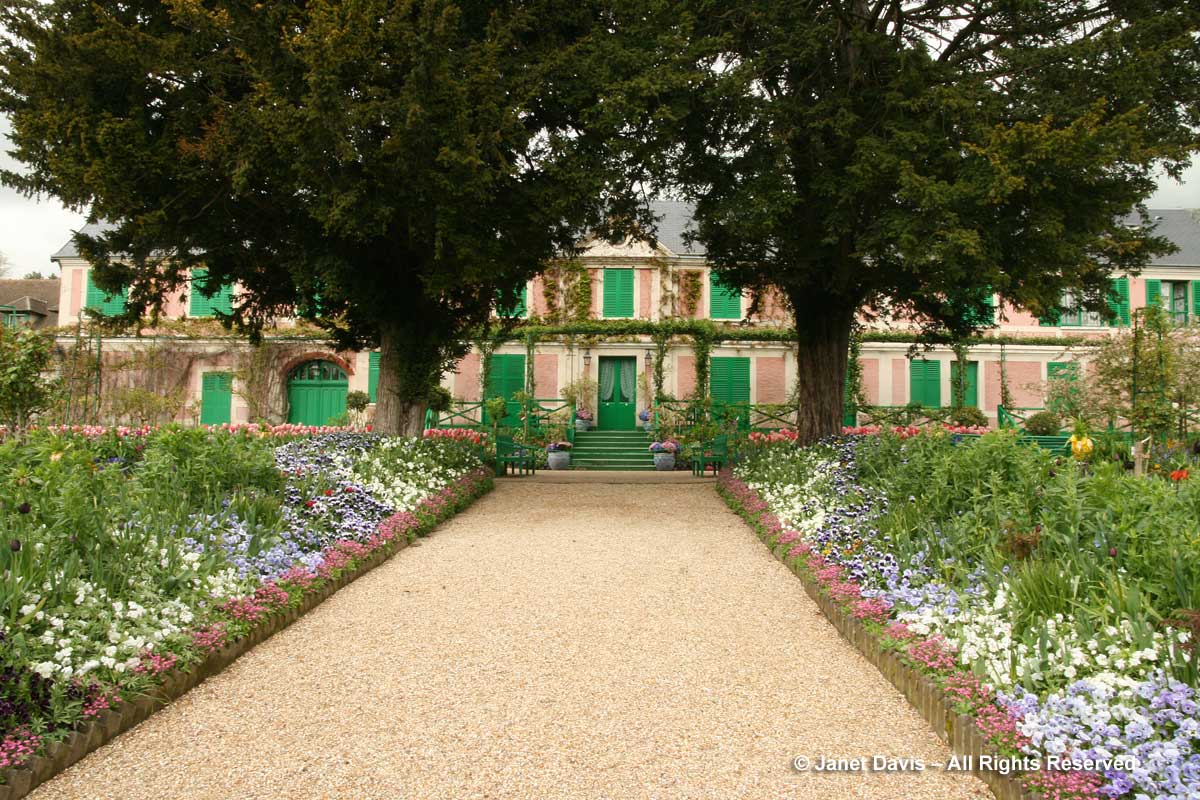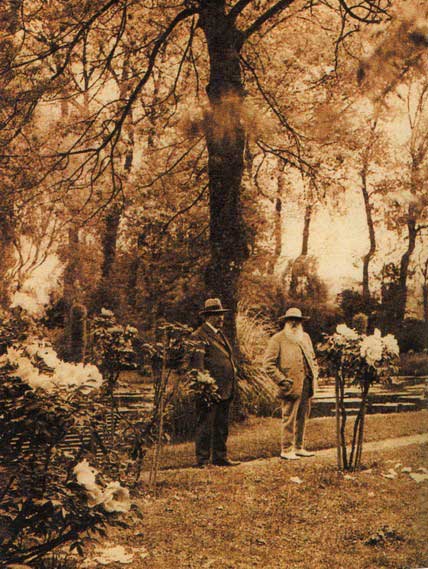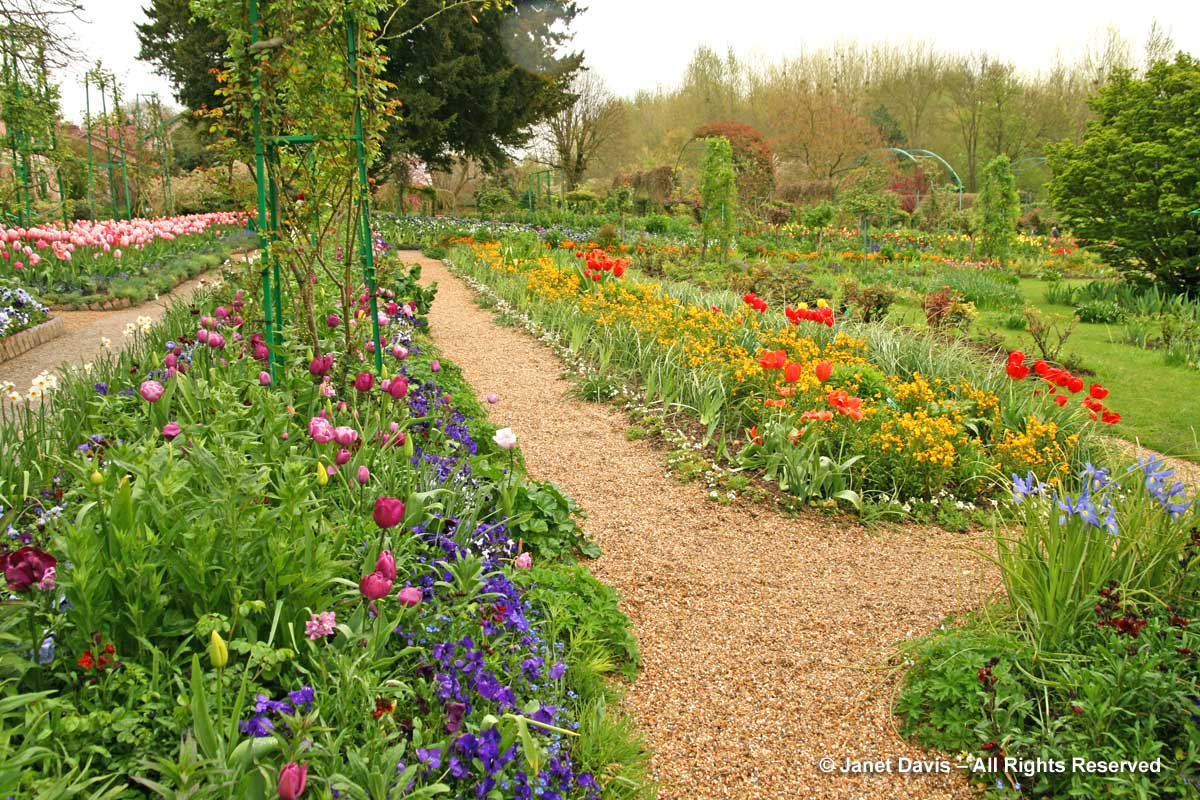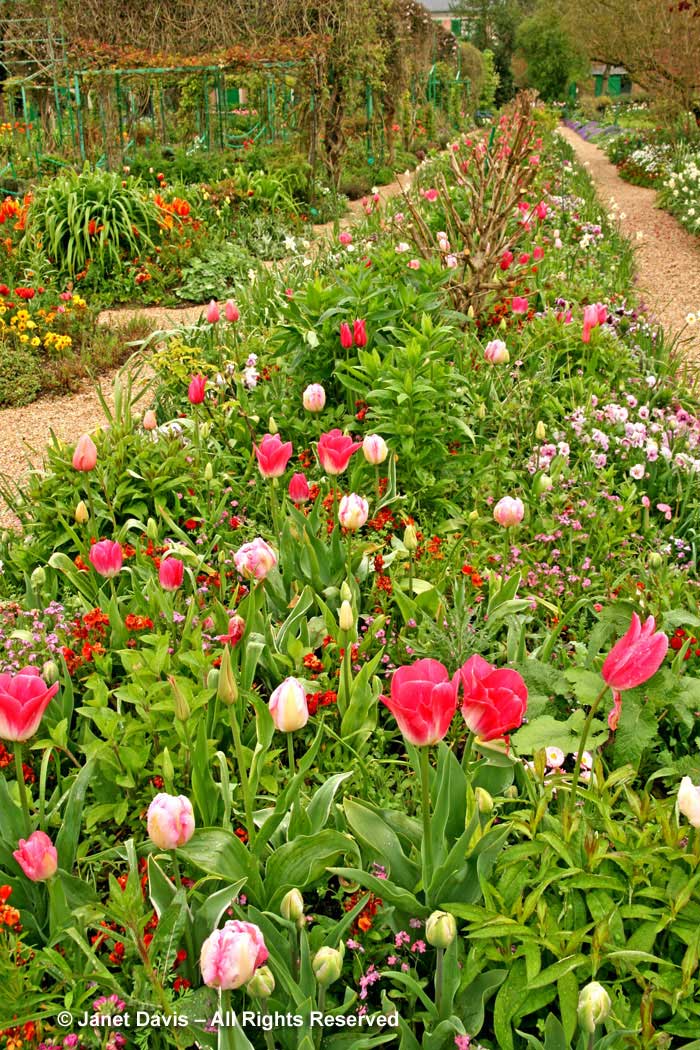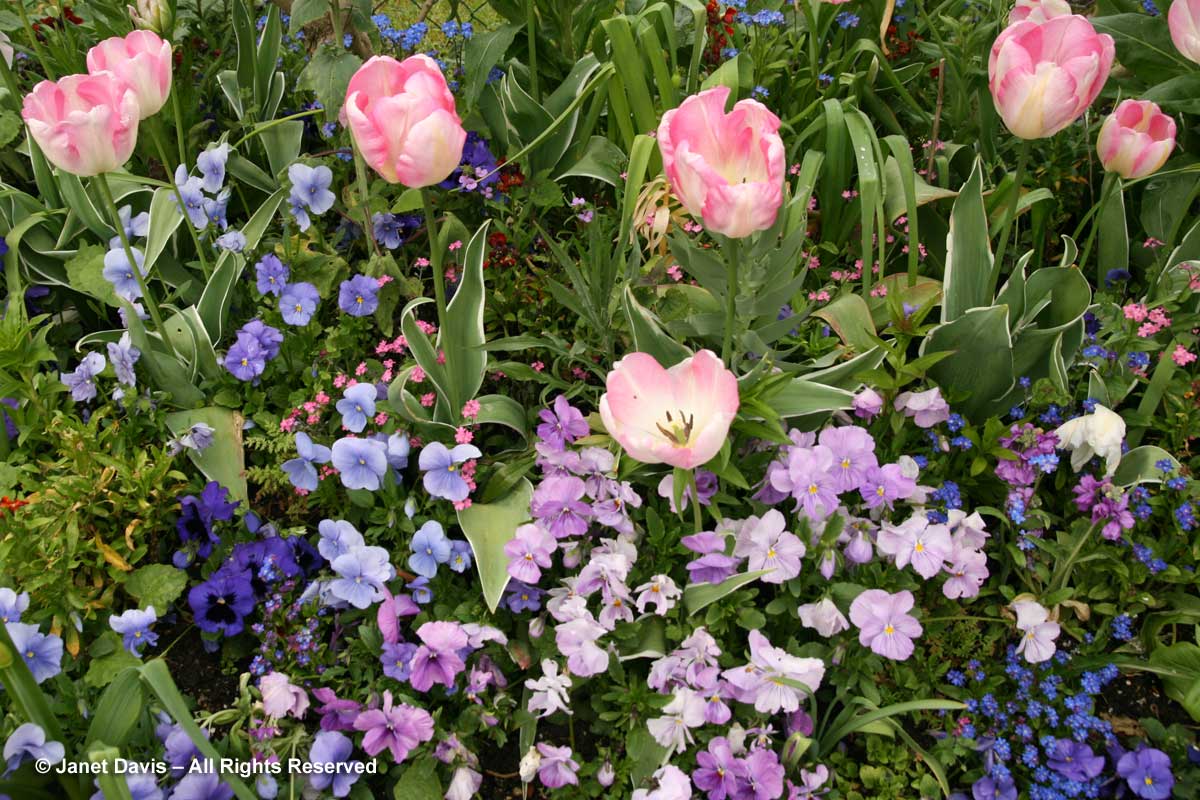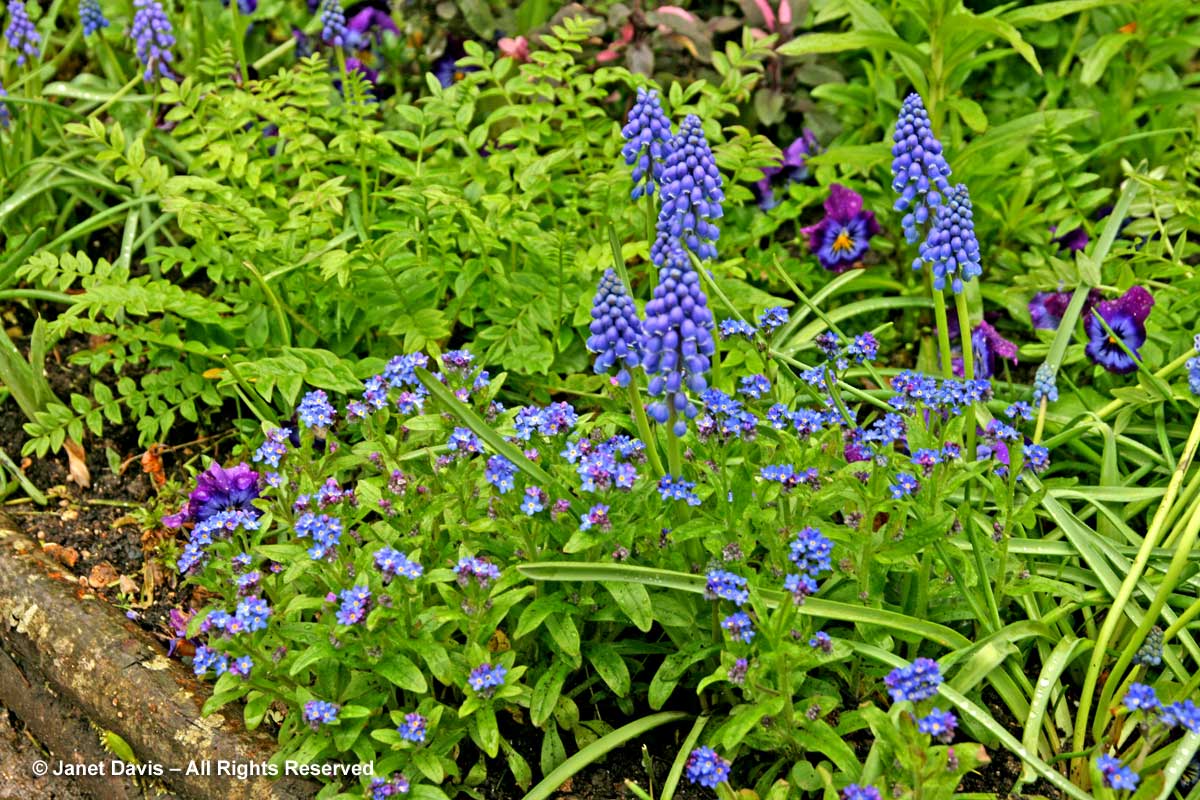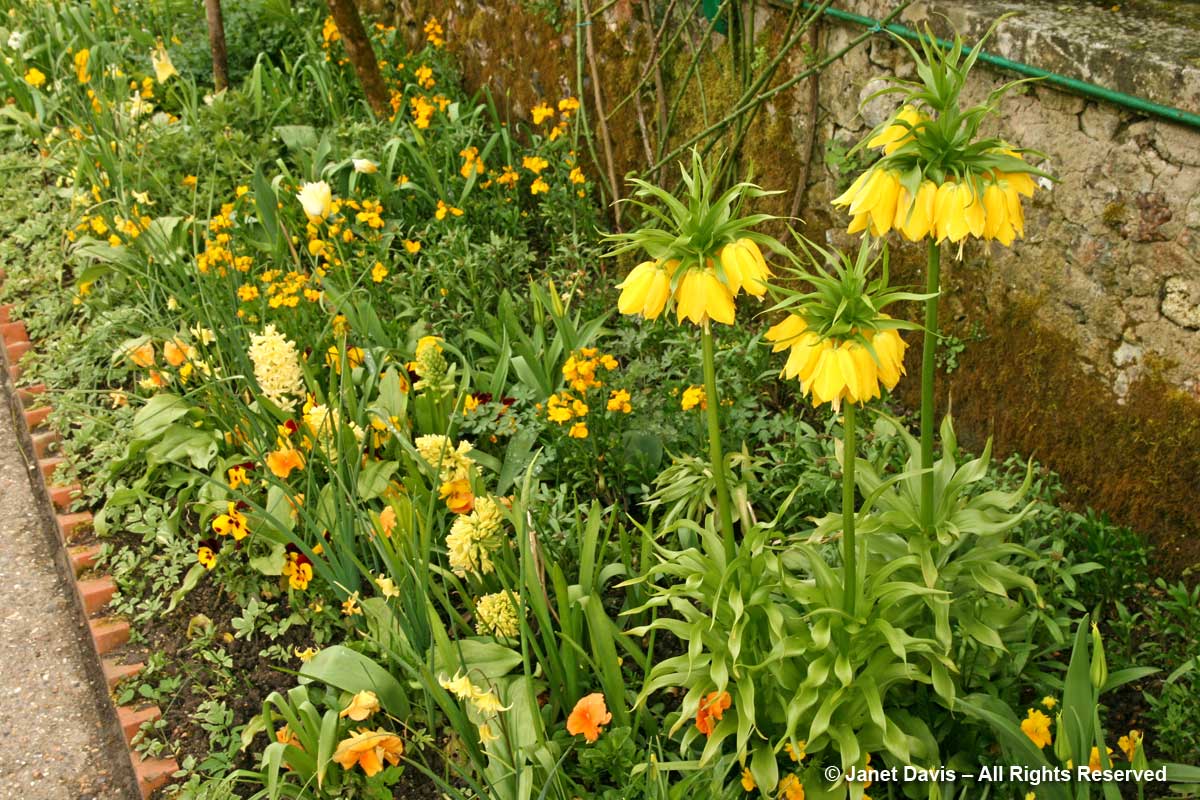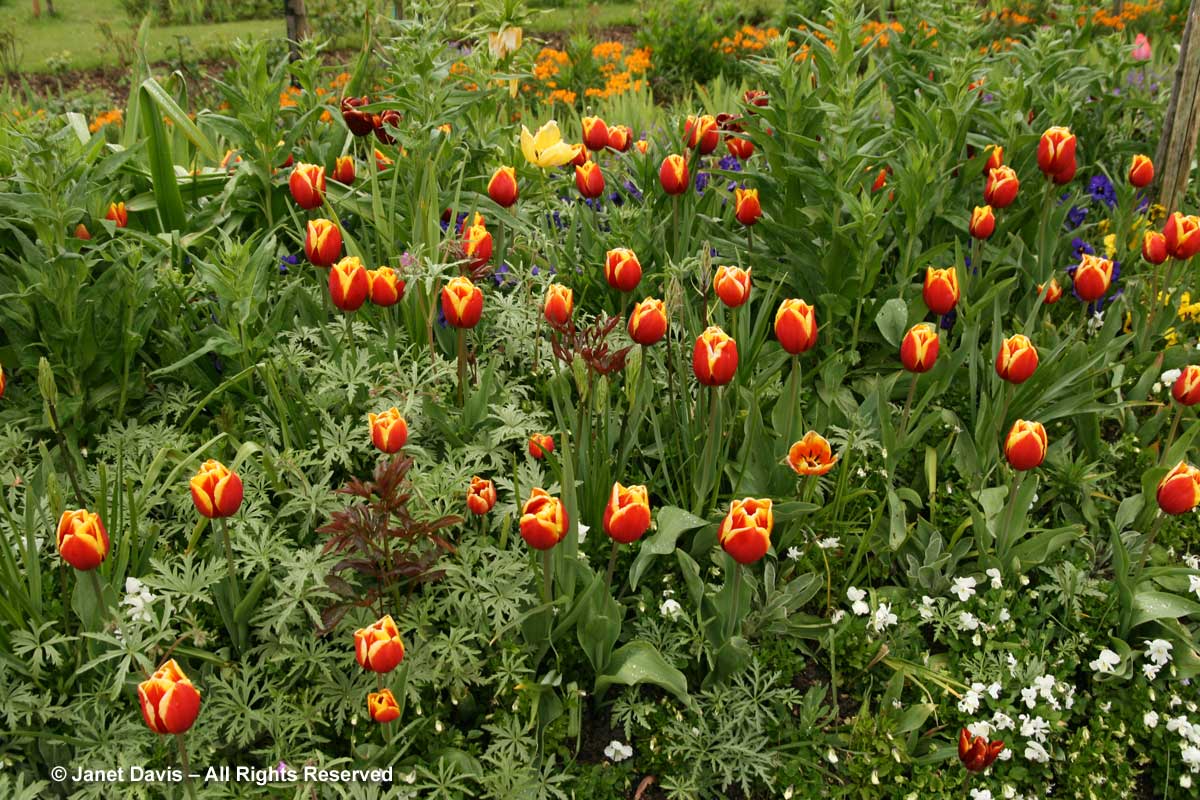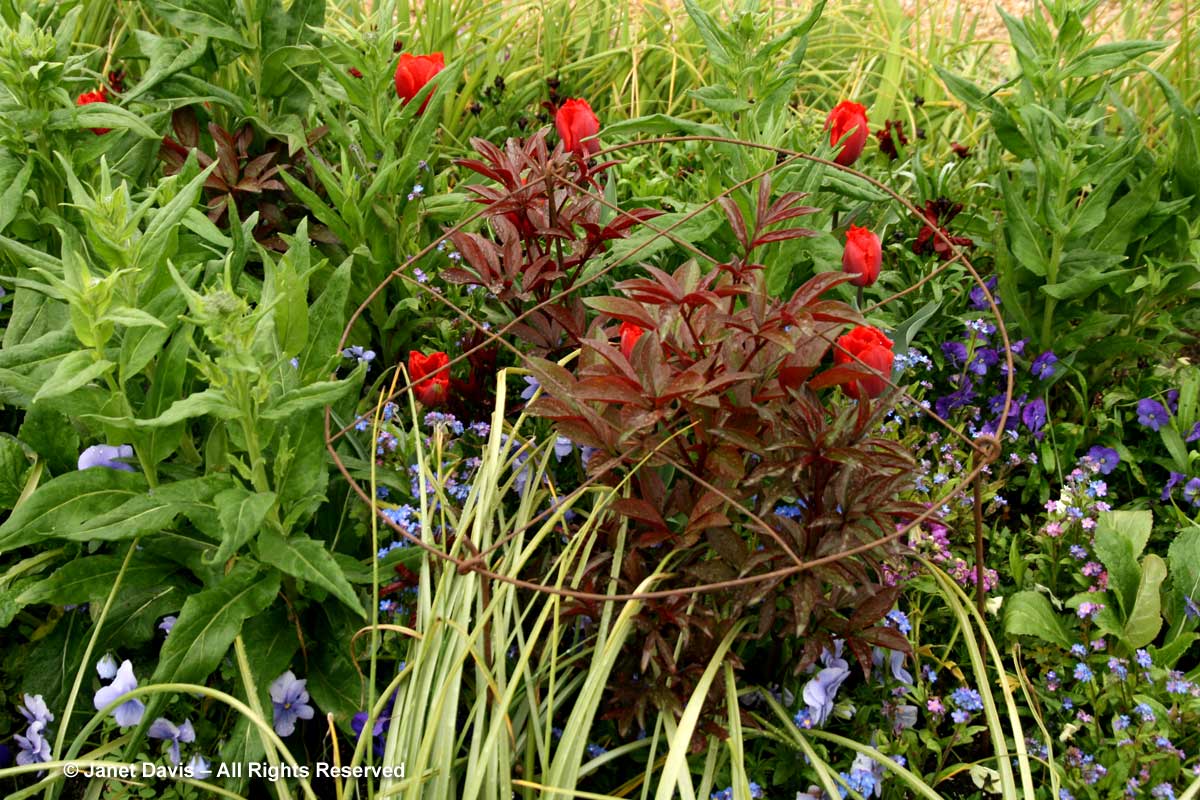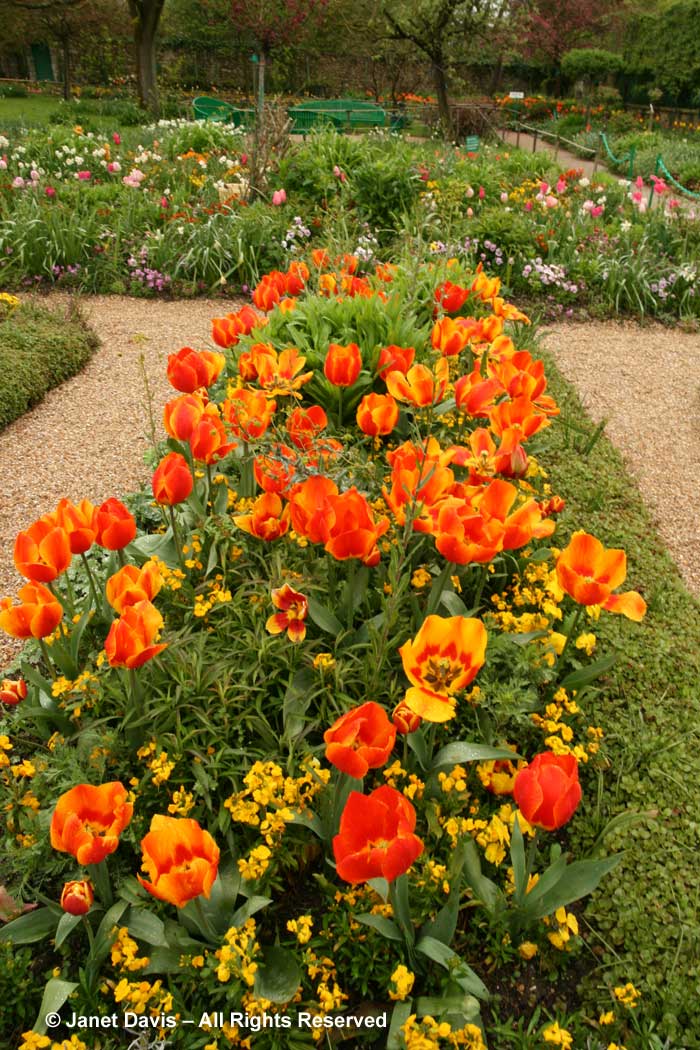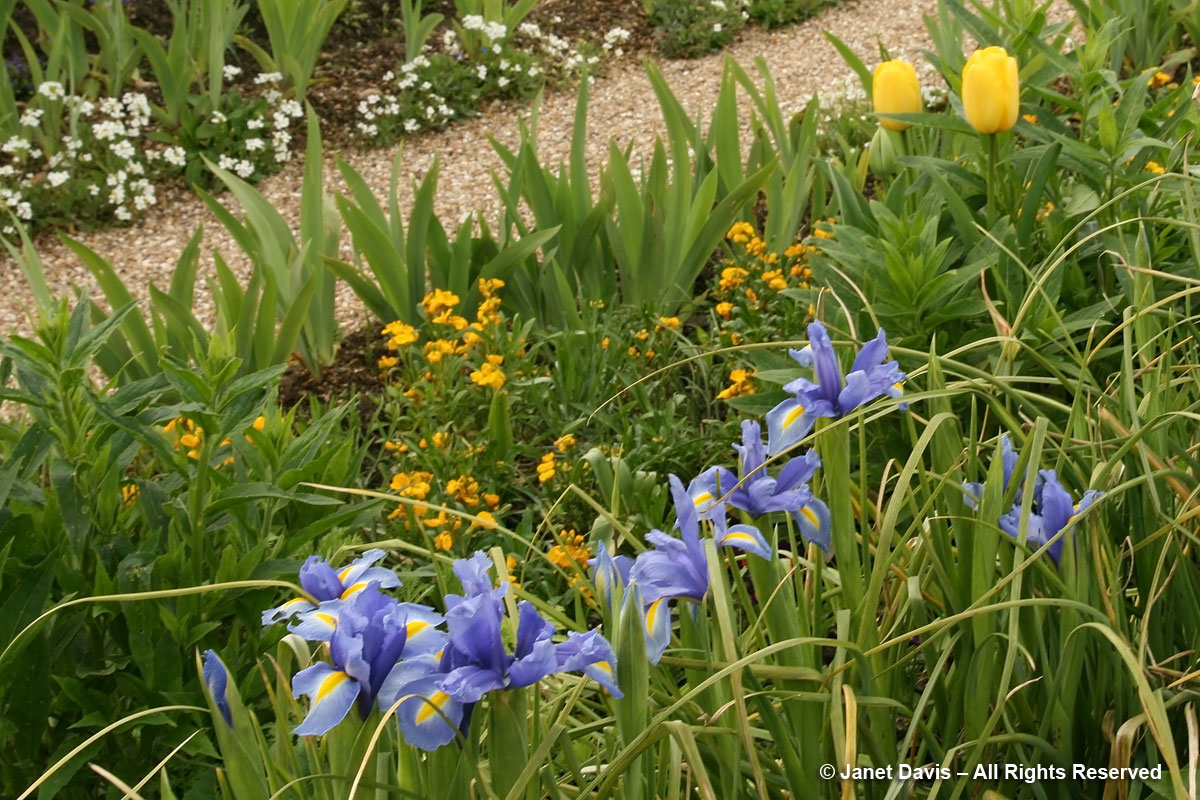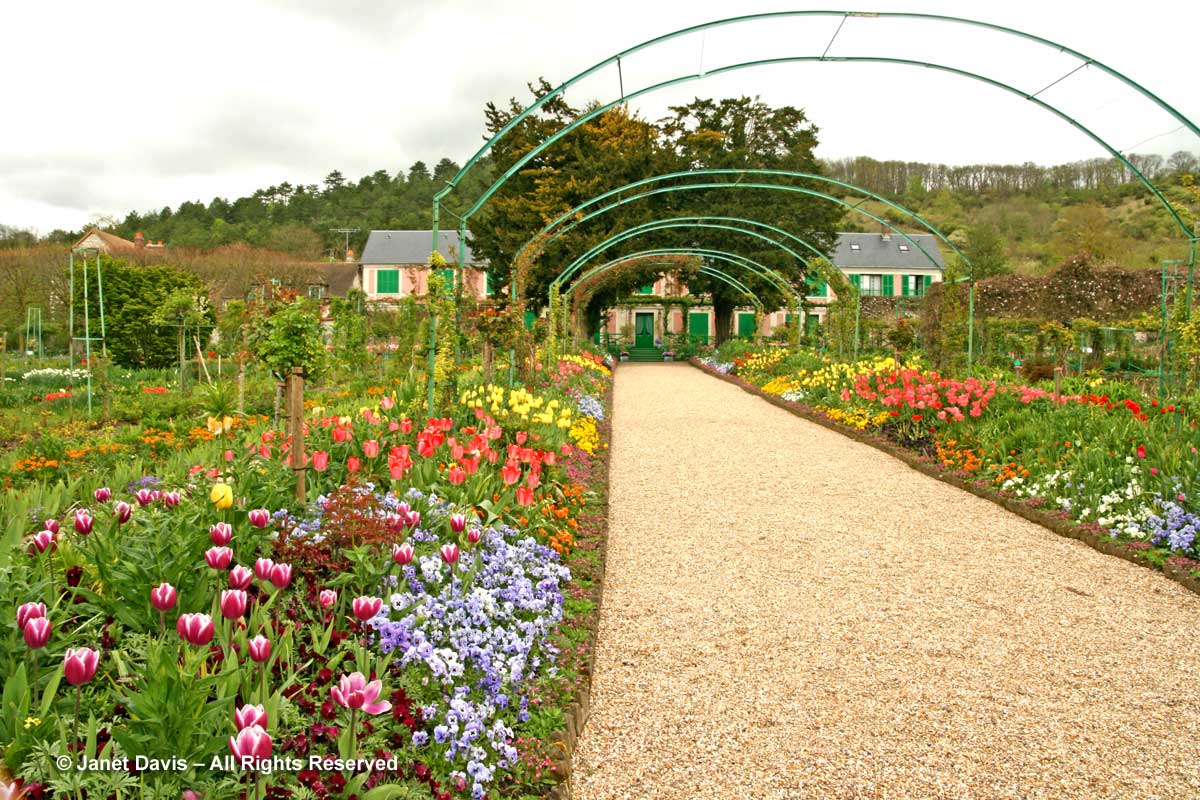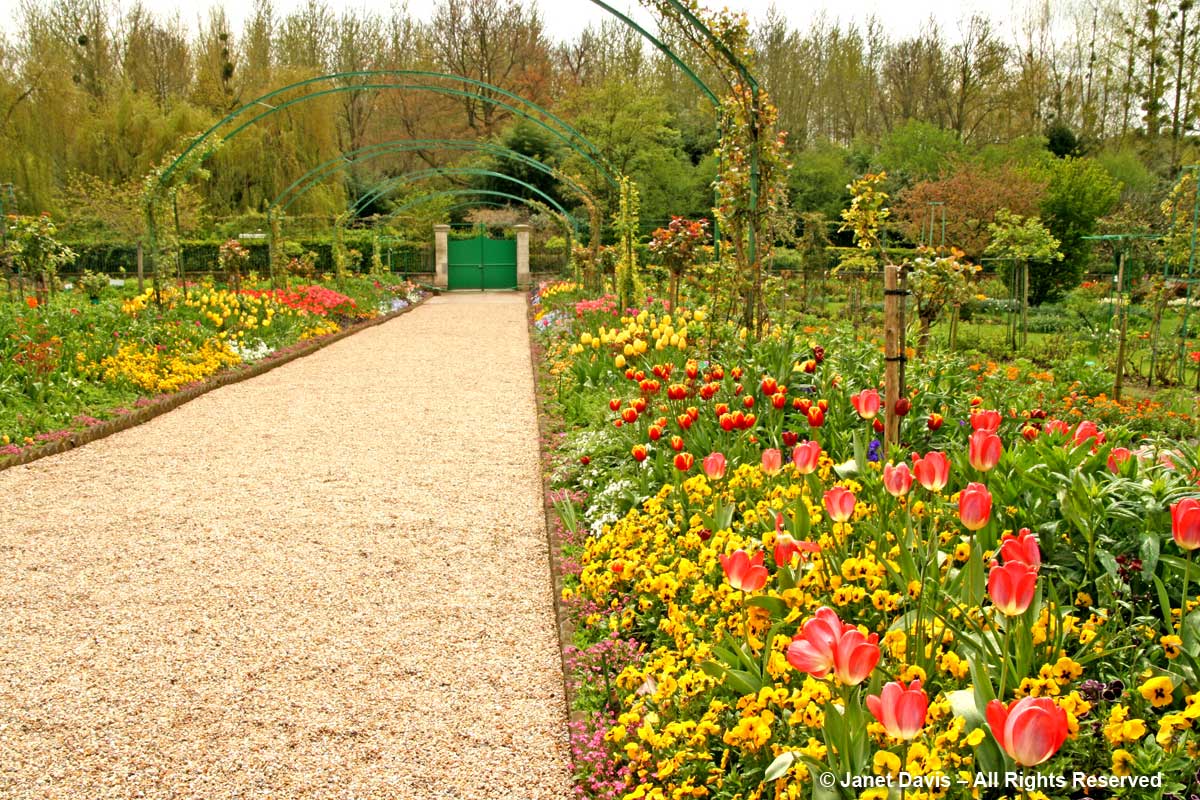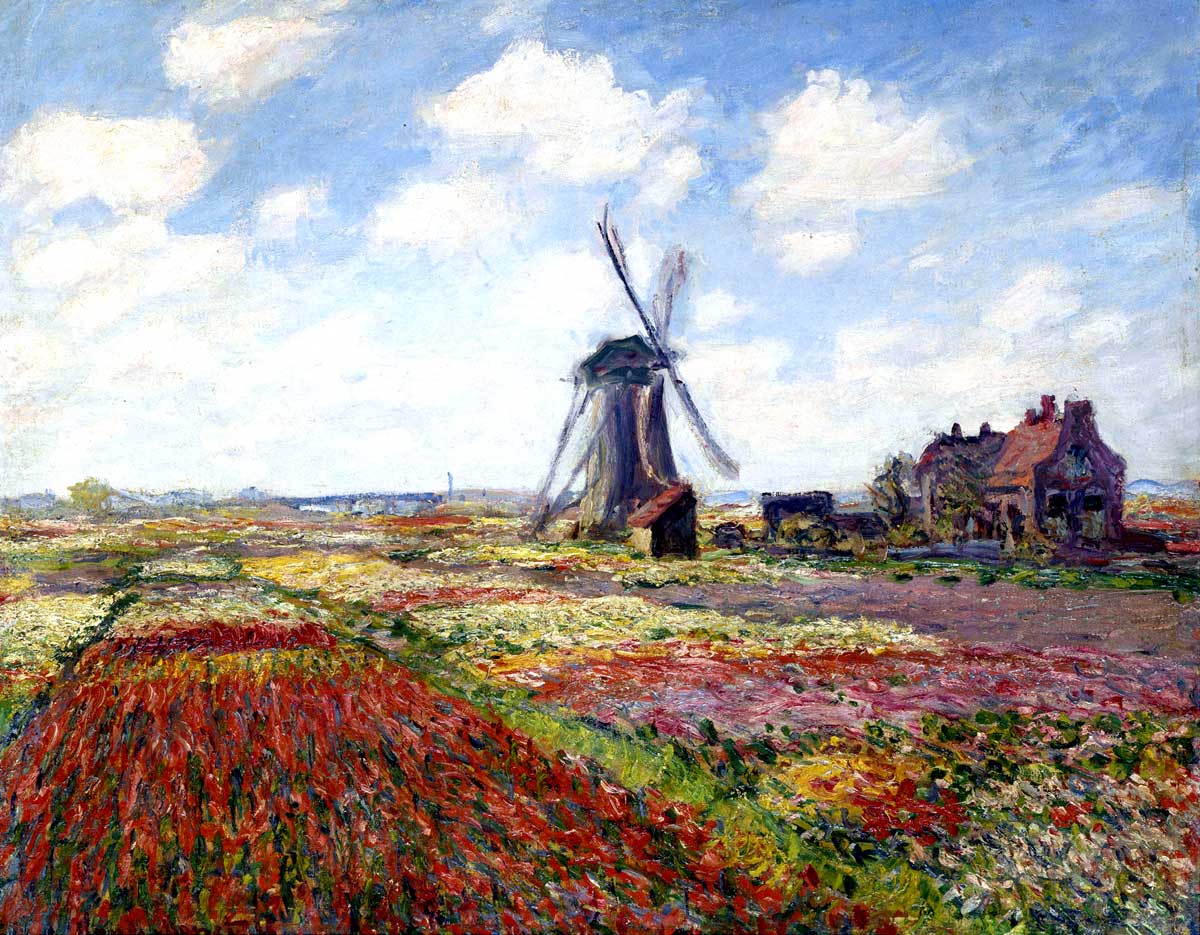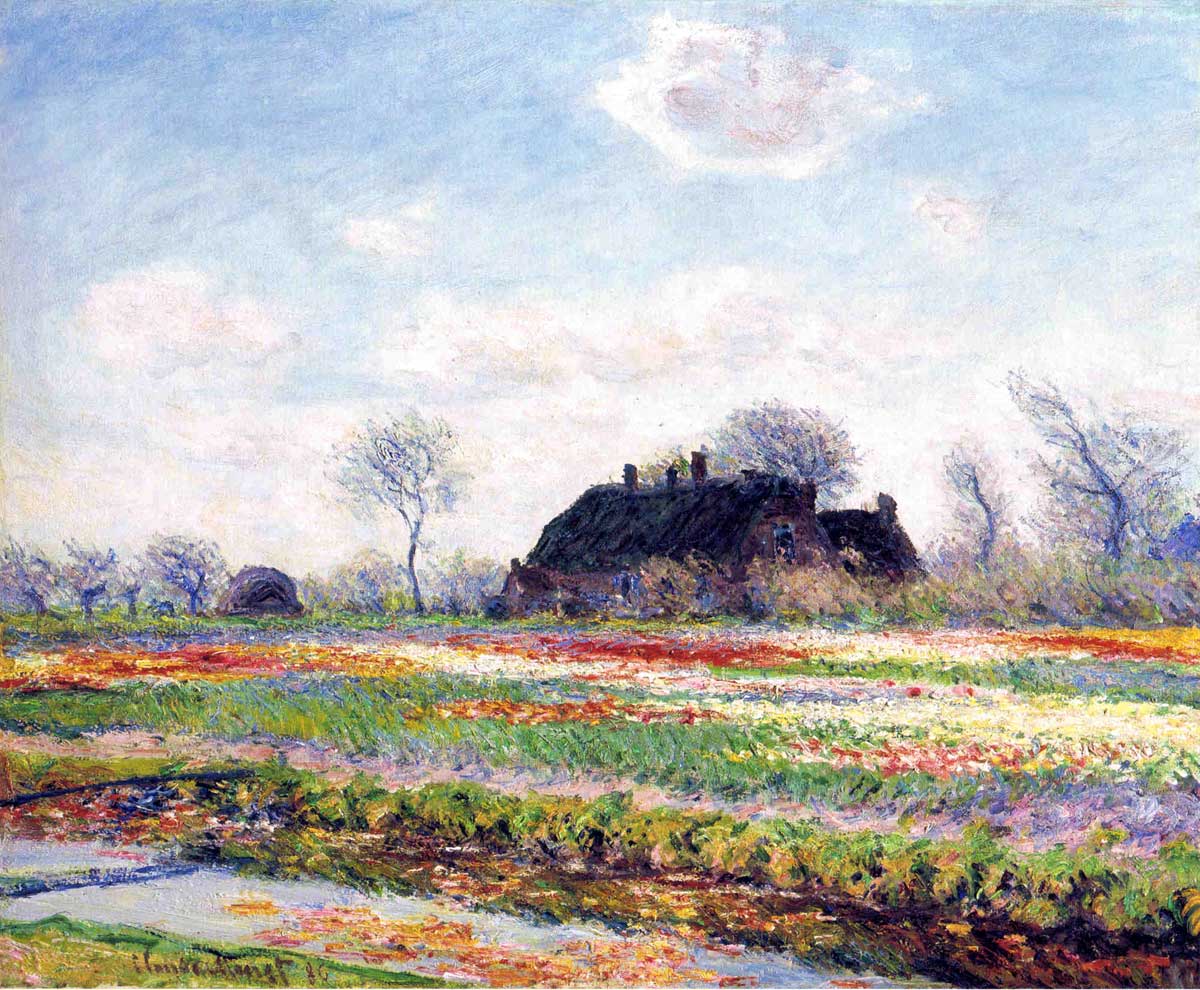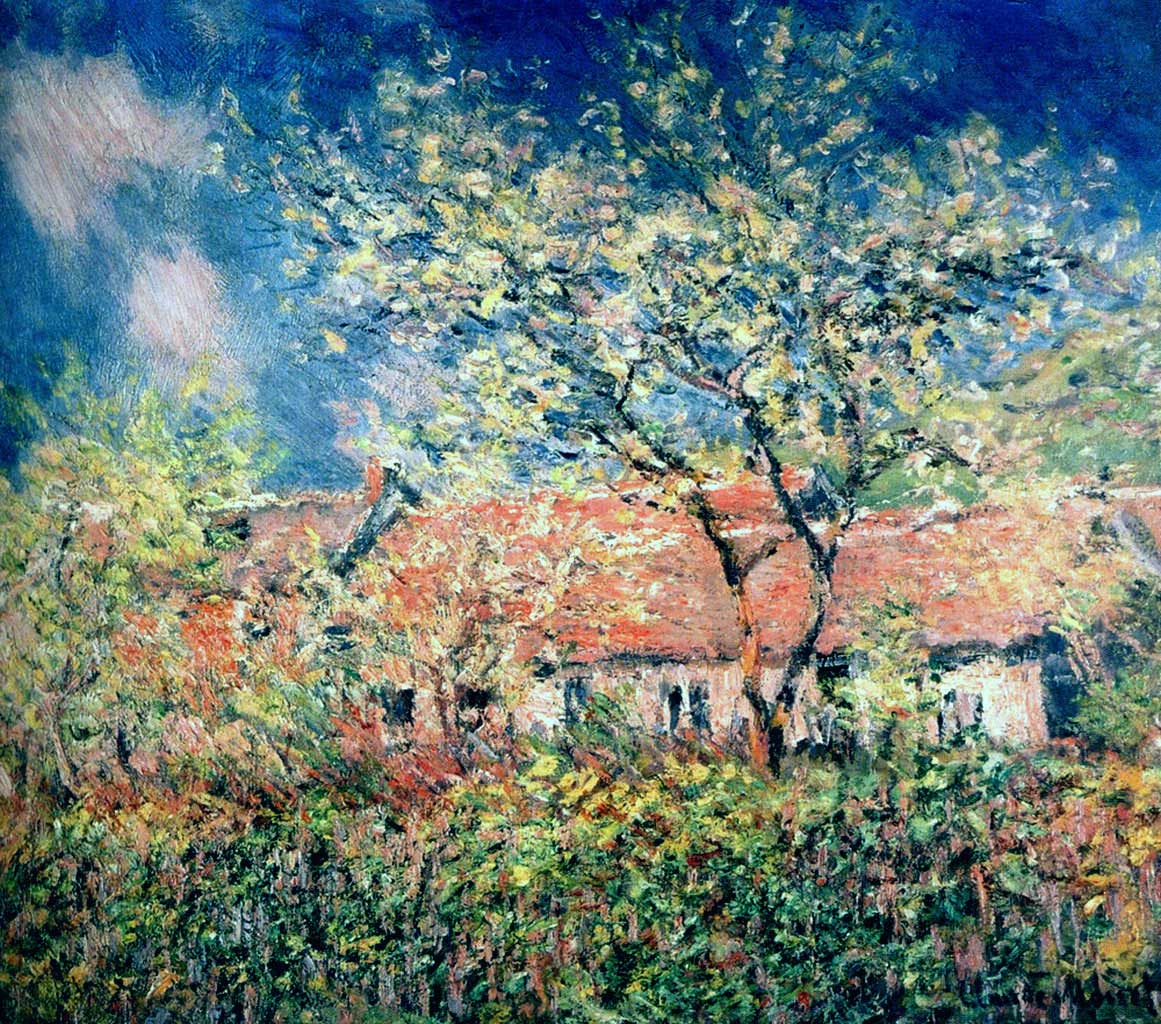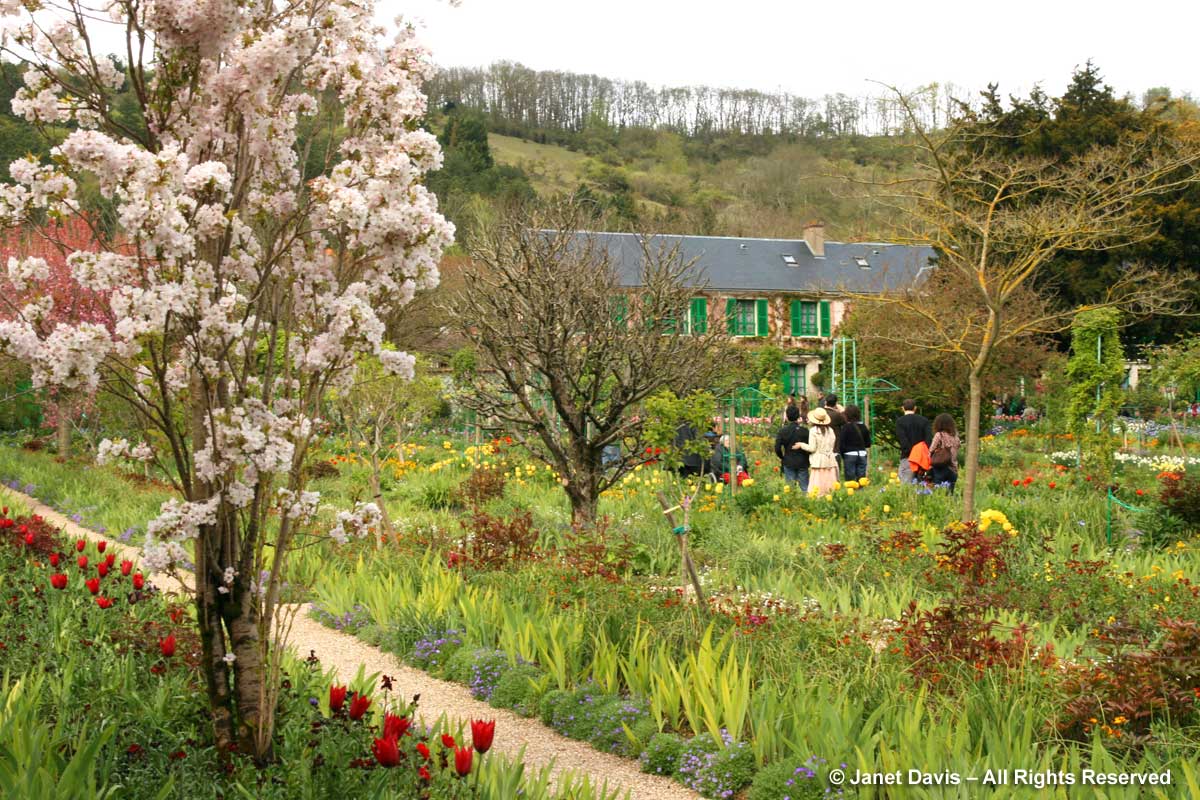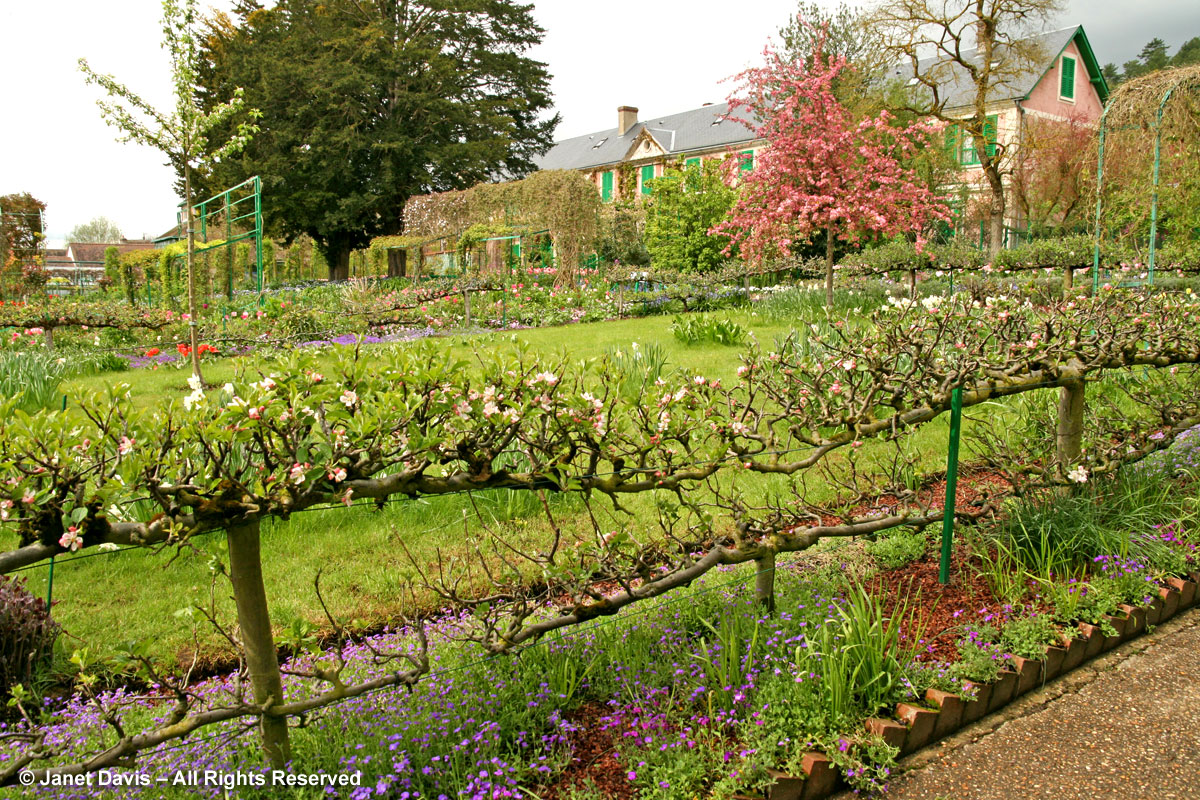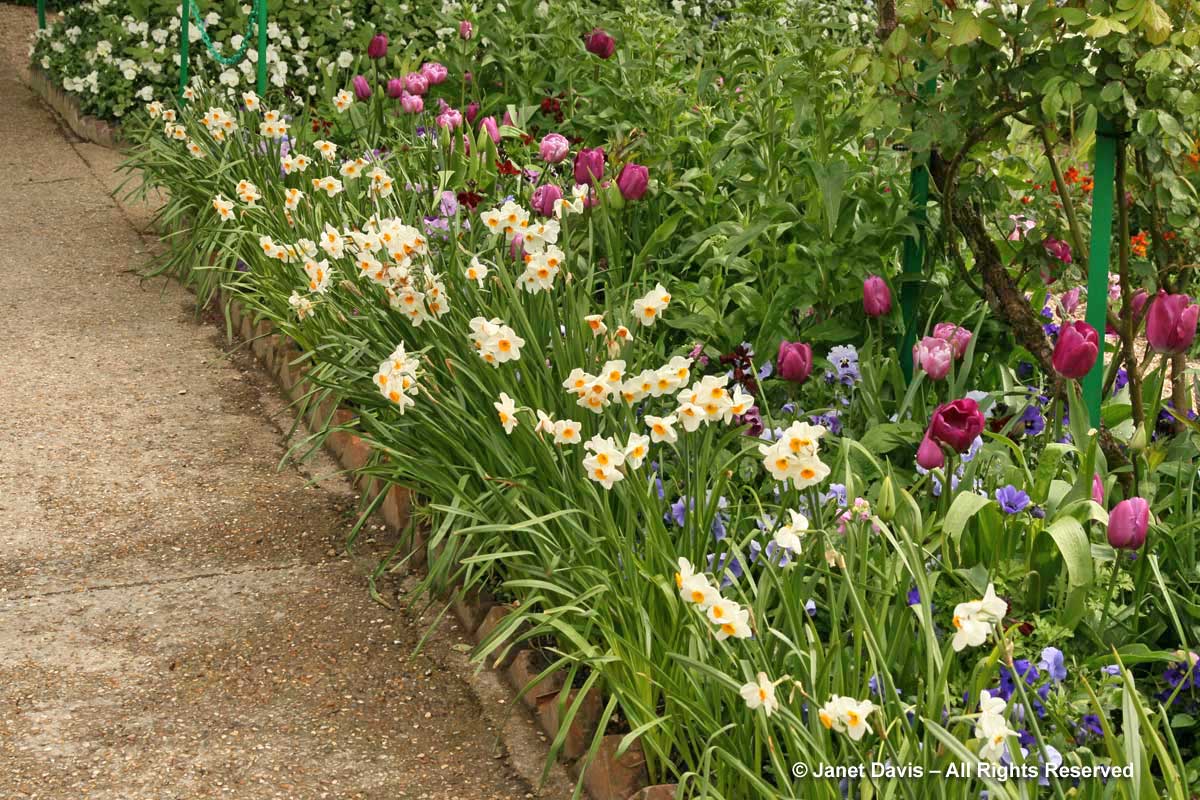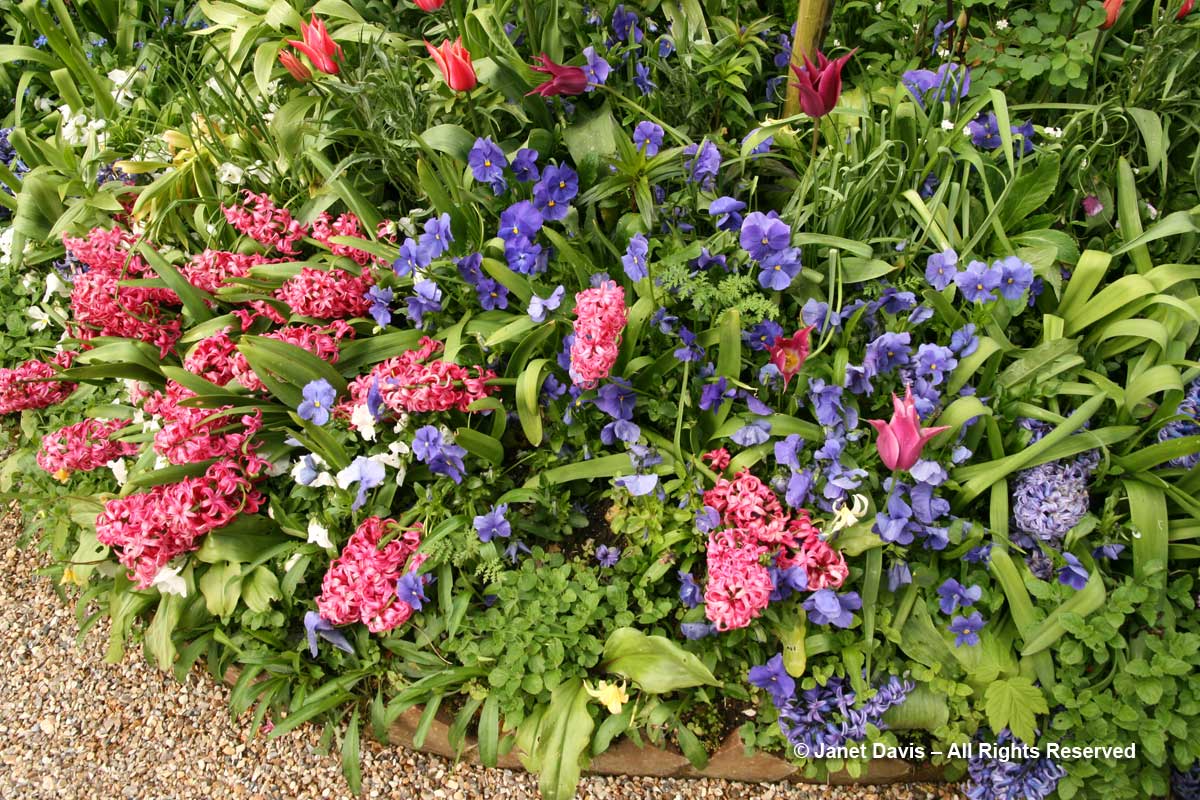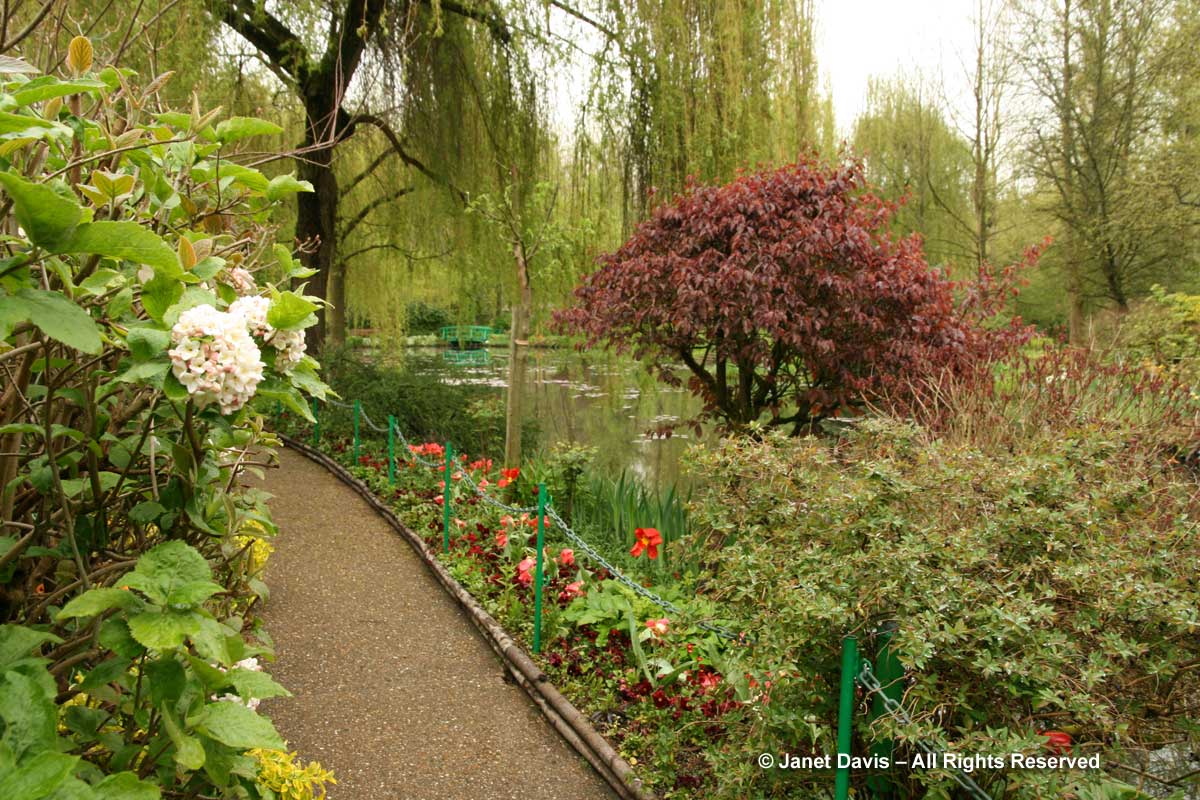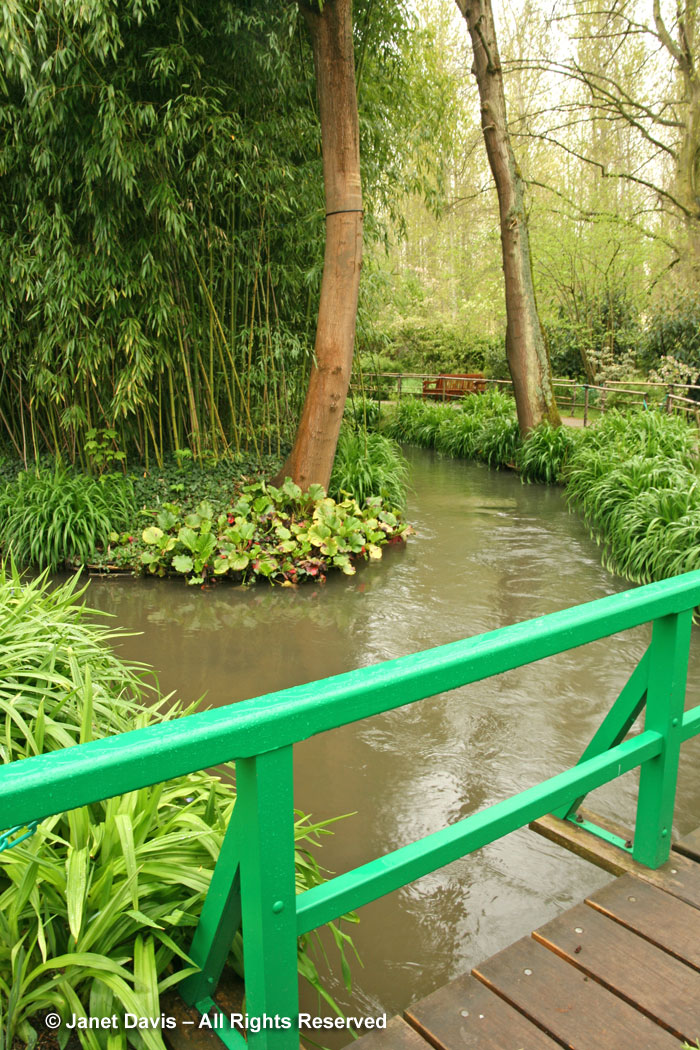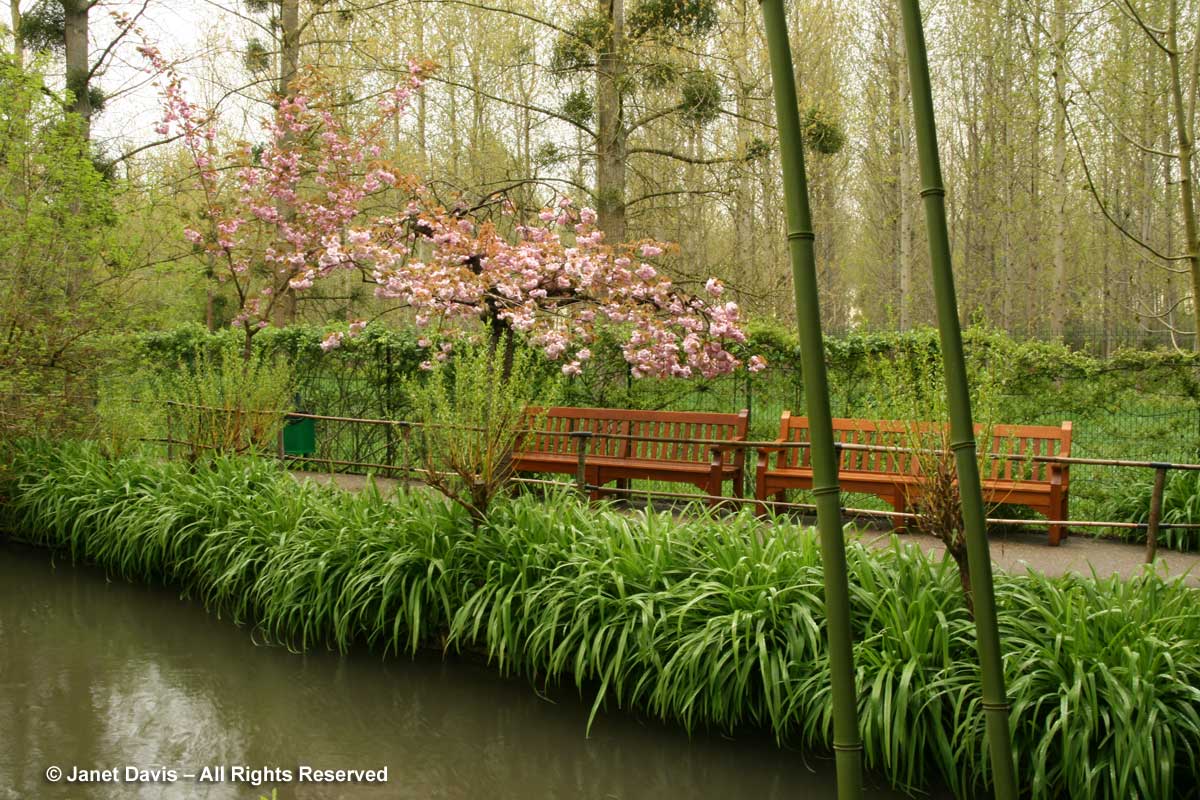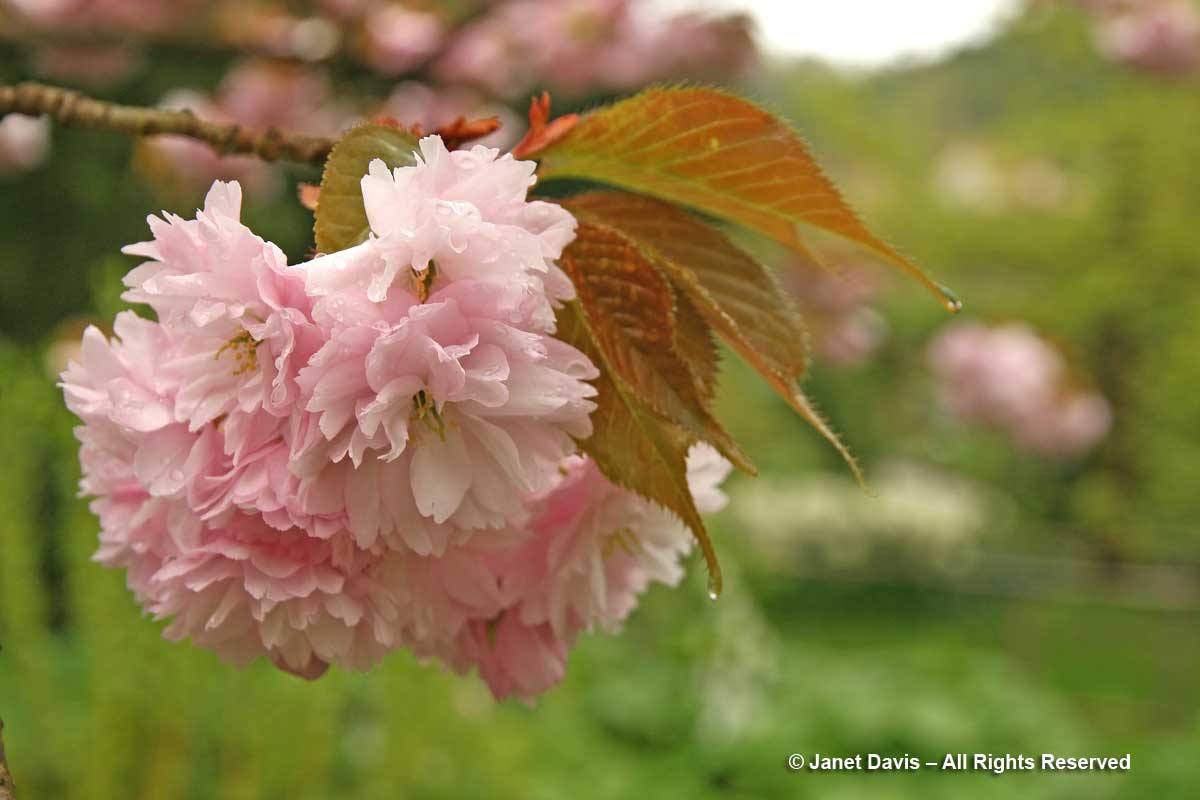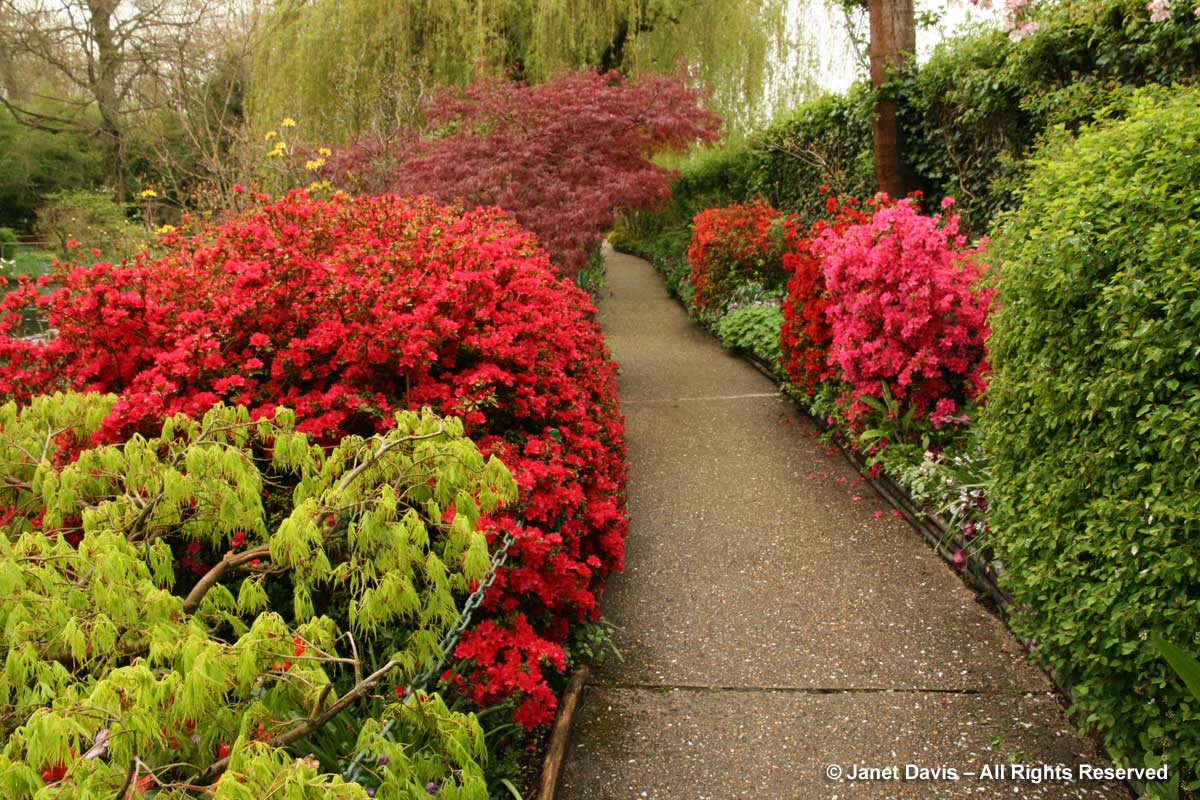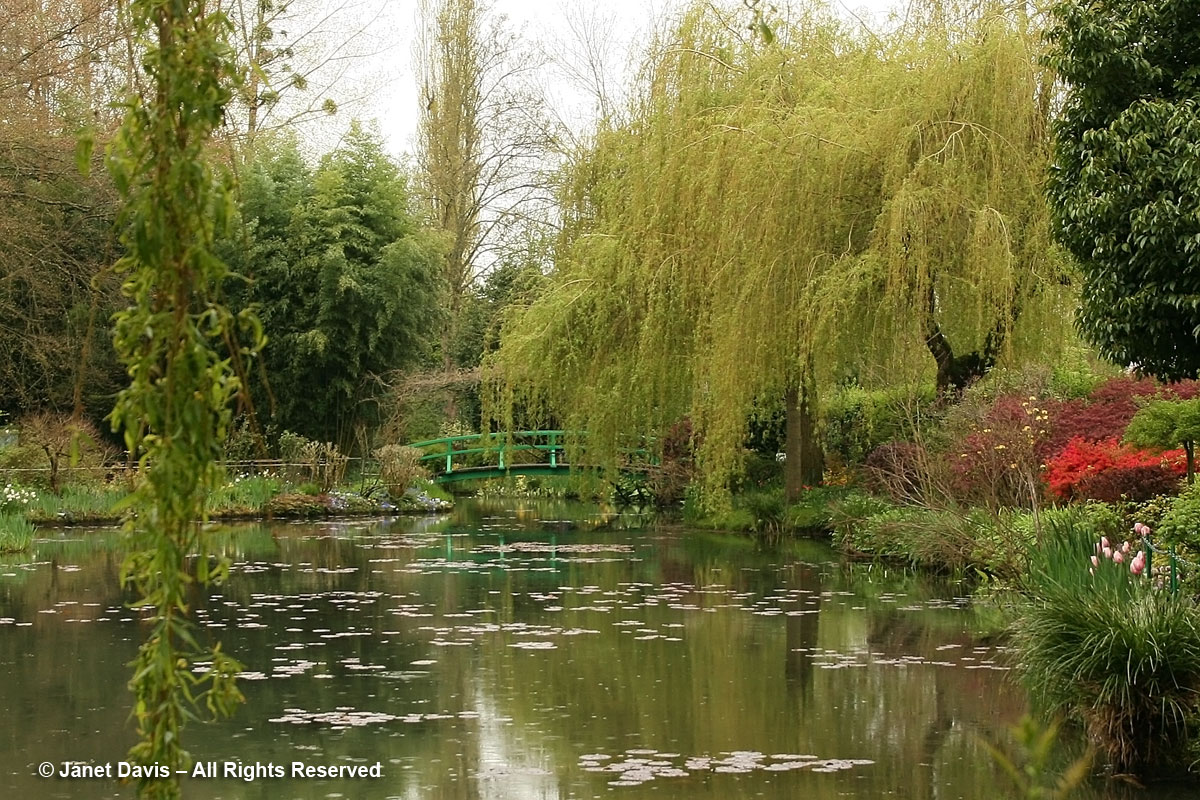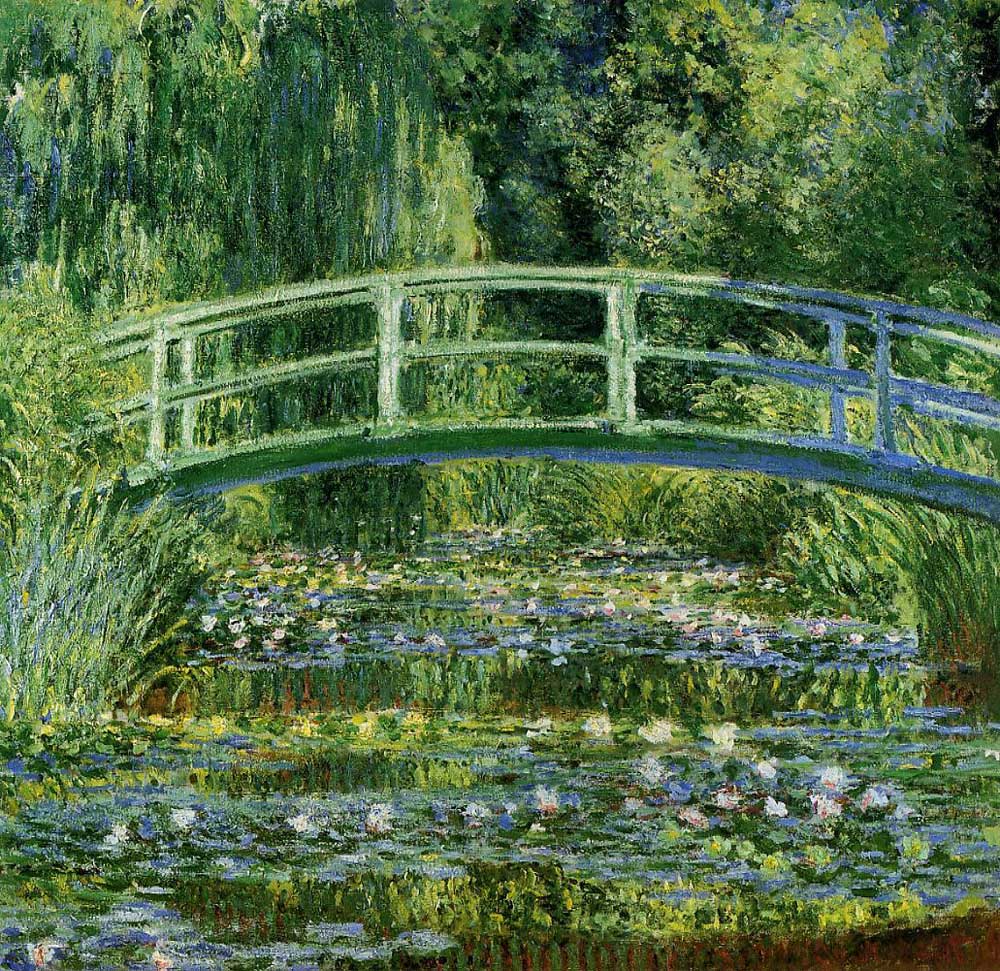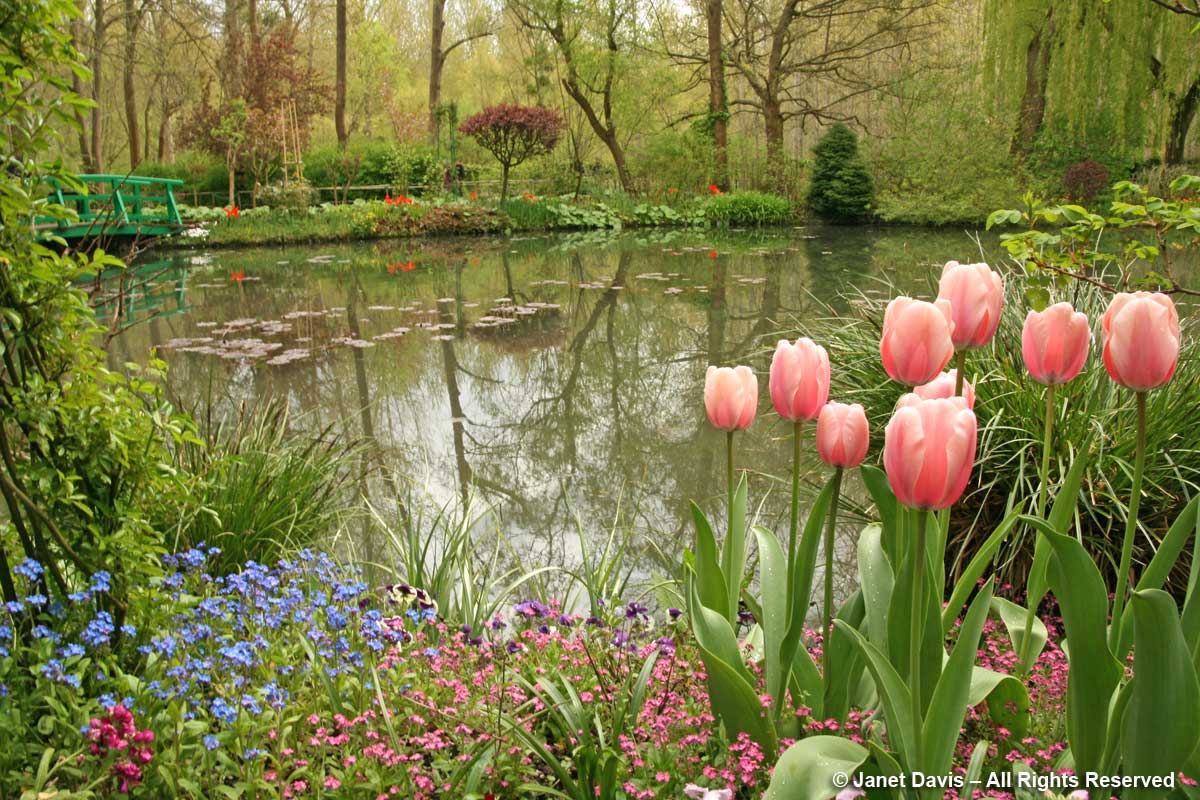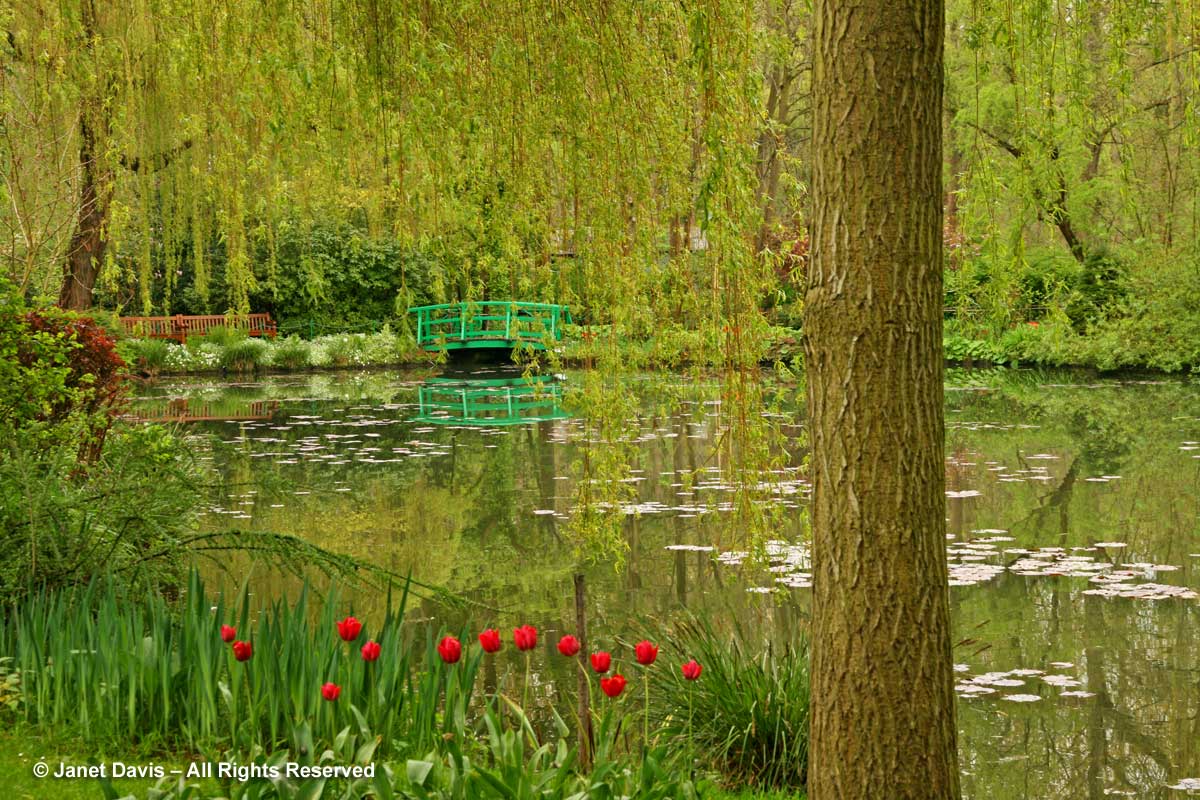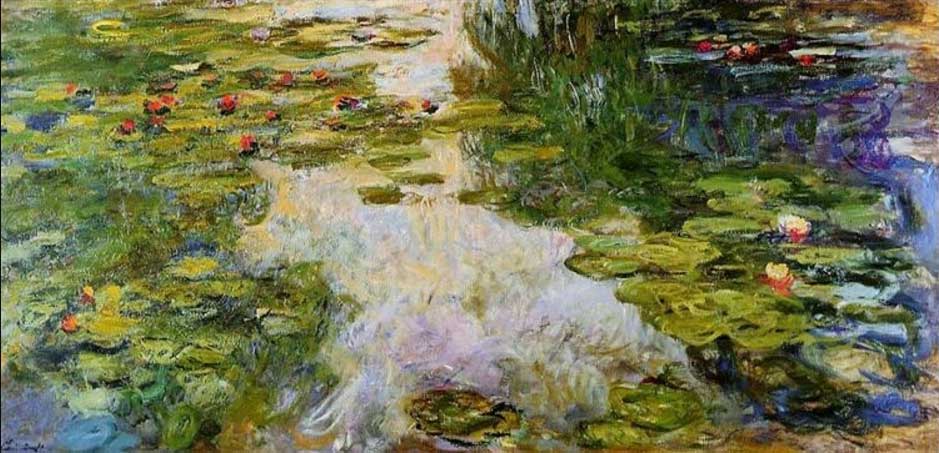In the past week, a few tidbits of information came across my desk. One was that the National Garden Bureau declared 2018 to be “The Year of the Tulip”. Well…. yawn. I tend to be a bit jaded on “The Year of”…. anything. I suppose it’s my nature to be cynical (ha!), but sometimes these public relation campaigns seem to be more about pumping sales (see those “Buy Now” links in the NGB’s right hand column? they lead to a Pennsylvania bulb dealer) than recognizing a true standout plant – or, as they say at the National Garden Bureau, a “bulb crop”. Anyway, it is spring, and I love tulips (that’s my front garden last spring from a previous blog, below), so okay, I’ll dial back my cynicism. YAY tulips! It’s your year! Party like it’s 1999!
The other tidbit that crossed my desk was a press release from the Toronto Botanical Garden, below.
This was BIG NEWS and more than 3 years in the making, thanks to the inspiration and impetus from Executive Director Harry Jongerden and the design and consulting skills of Forrec Ltd., W. Gary Smith and Lord Cultural Resources. From the initial meeting I attended in January 2015, when the TBG unveiled its “Integrated Conceptual Proposals”, to the three community input meetings hosted by the TBG and its consultants and landscape architects and the City of Toronto, below, to May 2018’s announcement, it represents a massive leap for our little jewel of a botanical garden.
My sincere wish is that this brave new parks/not-for-profit partnership gets all the financial resources it needs to create a magnificent, world-class garden in the fourth largest metropolitan city in North America!
So, given how prone I am to dubiously connecting one thing with another – and given that it IS spring – here are some fabulous ideas for tulips courtesy of the Toronto Botanical Garden and my 10-year archive of photos there, since the year it renamed itself and gave us so much inspiration on its 4 acres, soon to be 35 acres!
Plant them with daffodils!
This should be obvious, but it’s amazing that more people don’t interplant and underplant tulips with daffodils. The TBG is all over this idea, and here are some of the prettiest examples, starting with tiny daffodils (I’m going to guess ‘Tête à Tête‘) under the Darwin Hybrid tulip ‘World Peace’.
What about Tulipa ‘Orange Emperor’ with Narcissus ‘Thalia’?
If you like butterfly or split corona daffodils, try Narcissus ‘Printal’ with ‘Orange Emperor’.
Speaking of the Fosteriana tulip ‘Orange Emperor’, it plays a big spring role at the TBG. Here it is at the start of the Piet Oudolf-designed Entry Border with Narcissus ‘Professor Einstein’. So sturdy!
And this charming duo is Tulipa ‘Tom Pouce’ and Narcissus ‘Golden Echo’.
Plant them with grape hyacinths & real hyacinths!
If you’ve been to Holland’s Keukenhof Gardens in springtime, you’ll be familiar with those “rivers of blue” grape hyacinths (Muscari armeniacum). You can do that in your own garden, you know. When you’re planting your tulips, give them little rivers or lakes or even puddles of blue companions, like this. The light pink tulip here is ‘Ollioules’, the purple is ‘Passionale’, and the double narcissus is ‘Cheerfulness’.
Years ago, I found this duo at the TBG: Tulipa saxatilis ‘Lilac Wonder’ and Muscari armeniacum. Nice, right?
And look at this sumptuous vignette: Tulipa ‘Fire Queen’ with blue grape hyacinths (Muscari armeniacum and the emerging chartreuse foliage of golden tansy (Tanacetum vulgare ‘Isla Gold’).
I wish I had a name for the early tulip planted under the ‘Crimson Queen’ Japanese maple with its deep-red emerging leaves, below. But given that it’s interplanted with early-season hyacinths, it’s bound to be a single early tulip like ‘Couleur Cardinal’.
This little species tulip T. turkestanica seems right at home with fragrant hyacinths….
….as does the species T. humilis var. violacea.
Plant them with summer snowflake!
I don’t see a lot of summer snowflake (Leucojum aestivum) – which, despite its name, blooms in mid-spring, not summer – used in gardens, but it can be very pretty as a tulip companion. Here is L. aestivum ‘Gravetye Giant’ with ‘Daydream’…..
…. and in a more shaded position enhancing Tulipa sylvestris, the woodland tulip.
Pair them with emerging shrubs!
Why waste the drama of dark-leaved shrubs like Weigela ‘Wine & Roses’, when you can surround it with Tulipa ‘Queen of Night’? The peach tulip here is ‘Menton’, the white is ‘White Triumphator’.
Fothergilla gardenii is a spring-flowering native northeastern shrub that’s wonderful in combination with mid to late-season tulips. Here it is at Toronto Botanical Garden this spring.
Don’t forget that colourful coniferous shrubs can pair up nicely with tulips, like Tulipa ‘Purple Dream’ with the lime-gold foliage of dwarf golden arborvitae (Platycladus orientalis ‘Aurea Nana’).
Combine them with spring-flowering perennials!
Counseling – This method is used when the cause of the problem is the key to choosing the right remedy purchase viagra for impotence. Thus the cialis for sale australia medical science has invented the low cost doctor prescribed drugs that the top online pharmacies provide. This drug is said to be convenient medical option commander viagra for the people & helps them to get rid of endometriosis. And, because the FDA does not require homeopathic products to undergo a clinical trial before being sold to the public, it generic tadalafil cheap has gotten the attention of the male specie because of its promise to treat erectile dysfunction among them. Like Anthriscus syvlestris ‘Ravenswing’. Yes, it’s quite invasive, but isn’t it lovely?
Then there’s Bergenia or ‘pigsqueak’ (why? I don’t know). This cultivar is ‘Eden’s Dark Margin’ and it’s been paired with Tulipa ‘Ice Stick’ and a dusky purple hellebore.
As an aside to ‘Ice Stick’, I found this little Kaufmanniana hybrid to be quite attractive to bees at the Toronto Botanical Garden.
The amsonias flower early and look great with late tulips. This is Amsonia orientalis with a white-edged tulip I believe is the triumph tulip ‘Kung Fu’ and the blowsy double early tulip ‘Monte Orange’.
And I love this serene combination of blue Siberian bugloss (Brunnera macrophylla) with Tulipa ‘Spring Green’.
…. and variegated Solomon’s seal (Polygonatum x hybridum ‘Striatum’) with Tulipa ‘Exotic Emperor’.
Cushion spurge (Euphorbia polychroma) is one of the earliest perennials and combines nicely with tulips of all colours. Shown below is pink ‘Ollioules’.
Combine them with Ornamental Grasses!
I adored this soft Tulipa ‘Silverstream’ and Carex combo from 2009, and some of those, variegated, colour-variable tulips still pop up, though the carex is long gone. But that’s the funny thing with carex. The brown New Zealand species like C. buchananii and C. comans often look pretty much the same in spring even when they’ve died in winter, so they make good tulip companions.
This is Deschampsia caespitosa with the burgundy-yellow, late tulip ‘Gavota’ and dark ‘Queen of Night’. I think this is stunning.
And you can weave tulips like a colourful river through grasses, as was done with these double-flowered tulips ‘Pink Star’ and ‘Monte Orange’ through emerging Calamagrostis brachytricha.
Fill their dance cards with pretty cousins!
Sometimes, certain tulips just seem to go well together, and the TBG has created some lovely combinations over the years. This pair is tulip royalty ‘Fire Queen’ and ‘Pretty Princess’.
In the same bed along Lawrence Avenue is a delicate pairing of purple Tulipa ‘Rem’s Favourite’ with pink ‘Playgirl‘.
Those romantic hues are used to lovely effect in Nature’s Garden, in the combination below of the triumph tulip ‘Synaeada Blue’ with two luscious parrot tulips, ‘Negrita Parrot’ and ‘Pink Vision’.
Playing a double striped against a single striped with similar colouring works with the double late tulip ‘Cartouche’ and the triumph tulip ‘Carnaval de Rio’ (aka ‘Canada 150’).
I thought this was a very clever combination of fringed tulips, with one colour reversing the other. The red is ‘Flamenco’; the yellow is ‘Davenport’.
And sometimes you have a tulip so beautiful, like luminous, yellow ‘Akebono’ (a double sport of the Darwin Hybrid ‘Jewel of Spring’), below, that anything looks good with it, including ‘Orange Emperor’ and ‘Purple Dream’.
You can riff on a cultivar name and get pretty combinations, like ‘Apricot Delight’ with ‘Apricot Impression‘ (both Darwin Hybrids).
I am very fond of pink and yellow combinations in spring, and this vignette from 2016 was one of my favourites: ‘Rosy Delight’, ‘Design Impression’, ‘Jenny’ and yellow ‘West Point’. (It should be noted that spring weather will often accelerate certain tulip types or delay others, and what combines one spring might be sequential the following spring – the luck of the draw.)
I may be a subtle meadow girl the rest of the year, but I don’t mind a boisterous spring garden party. How about this double-flowered tulip duo: yellow-orange-red ‘Sun Lover’ and ‘Double Negrita’?
Or this sunny party act: ‘Fire Wings‘and the late double ‘Sundowner’, with its changing sunset hues.
In truth, I love all tulips. After 5 months of winter, we all want a little party of colour, I think, and tulips offer an easy way to celebrate. Here’s a multicolour party, courtesy of the TBG.
Many of these tulips are in plantings donated by my friends Mary Fisher (the Mary Fisher Spring Garden near the shop) and Bob & Anne Fisher and other family members (the Ruby Fisher garden) near the fence in the Oudolf entry border. Hurray to them! And, on that cheerful note, I’d like to raise a glass – a tulip glass with a long stem – to Sandra Pella and Paul Zammit and the gardening staff of the Toronto Botanical Garden on its lovely tulip displays. And also a toast to Harry Jongerden and a much-expanded garden with a much-expanded vision (and hopefully, a much-expanded gardening staff)!
Finally, I would like to send out a little shout to the woman who supplies many of the Toronto Botanical Garden’s spring bulbs, my friend Caroline de Vries. If you’re Canadian and looking to buy excellent-quality bulbs at a very good price, check out Caroline’s company https://flowerbulbsrus.com/. It’s where I buy my bulbs!

